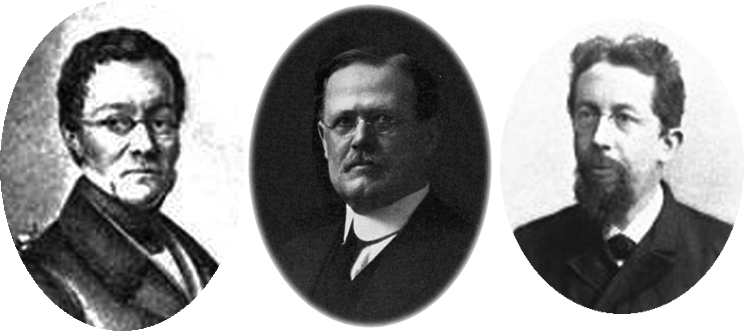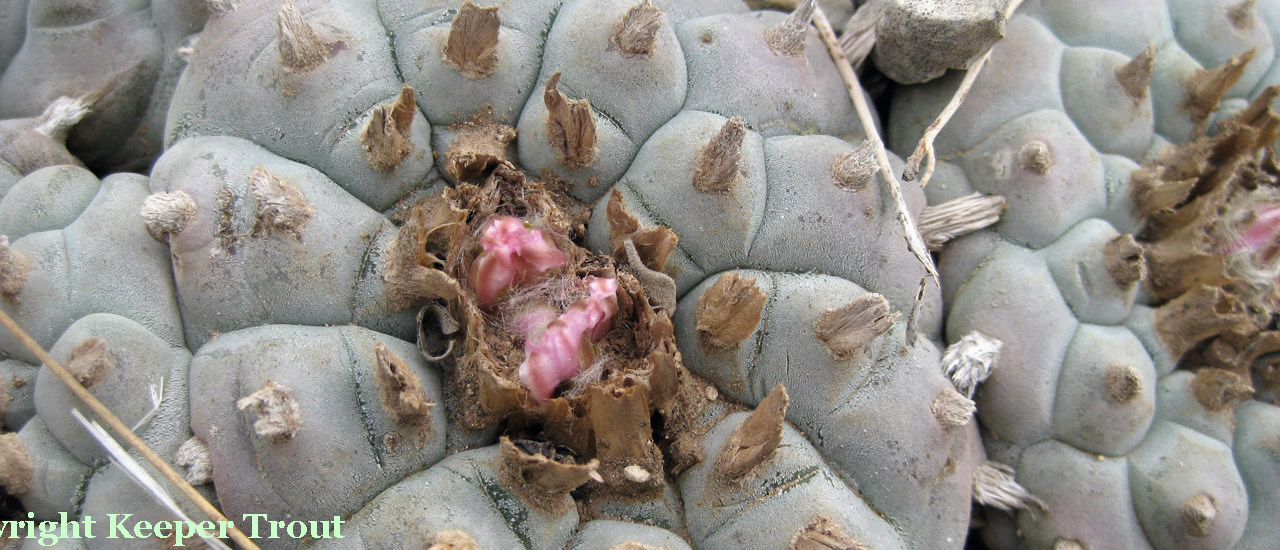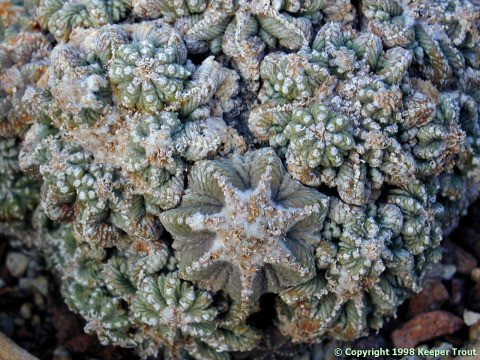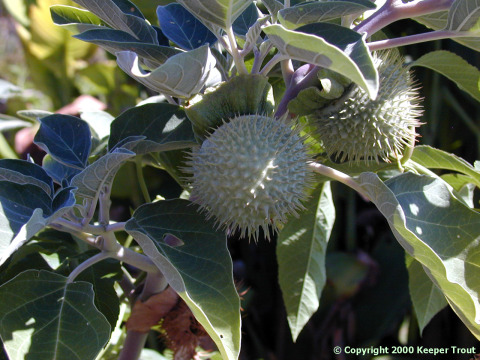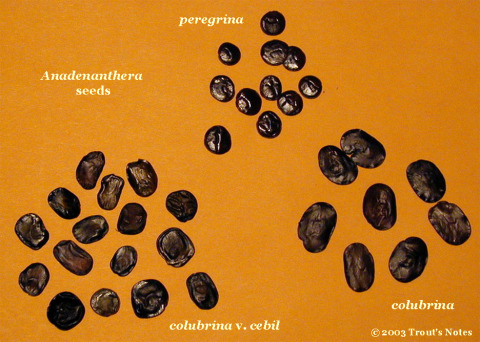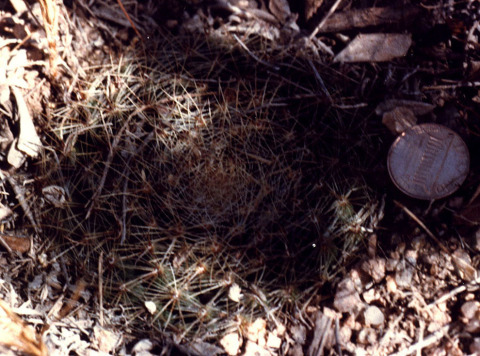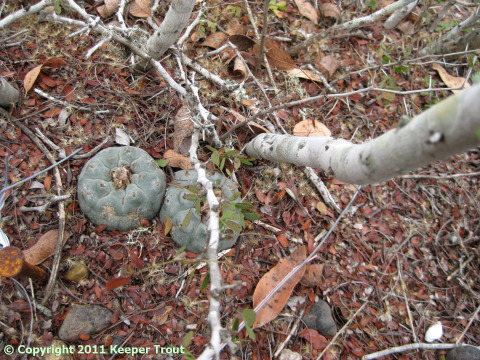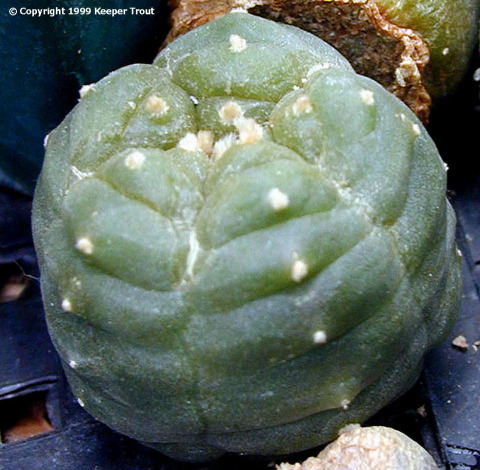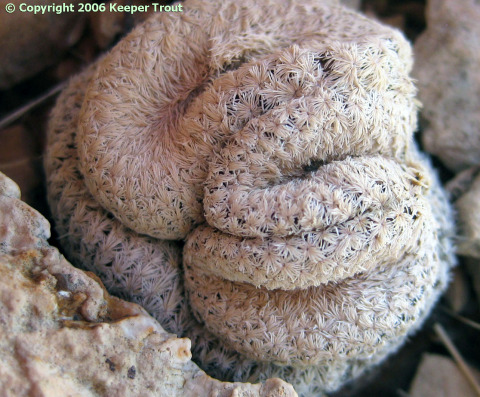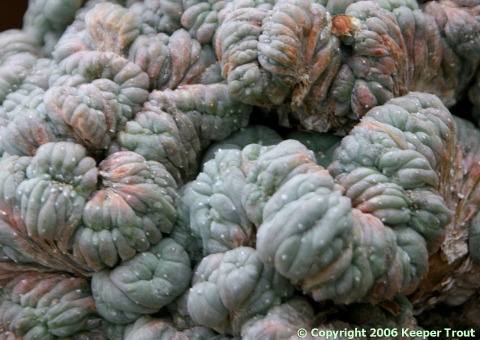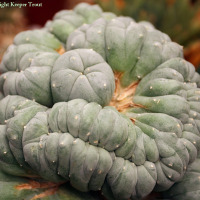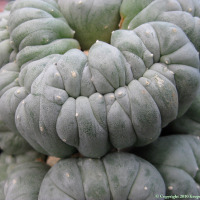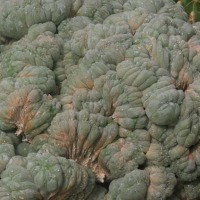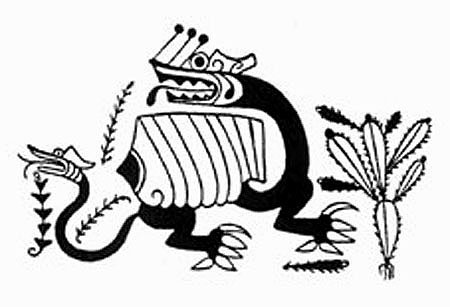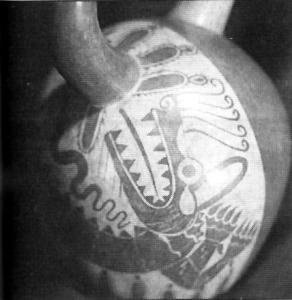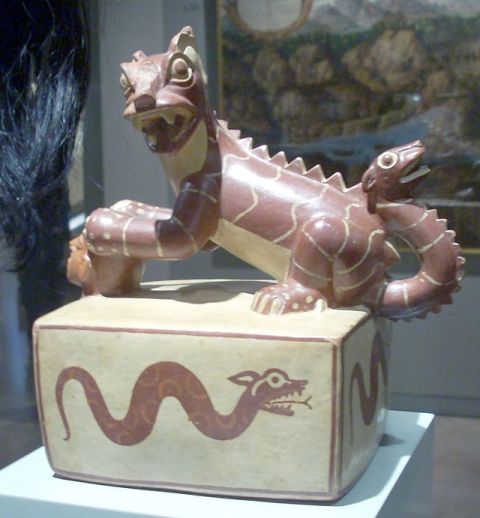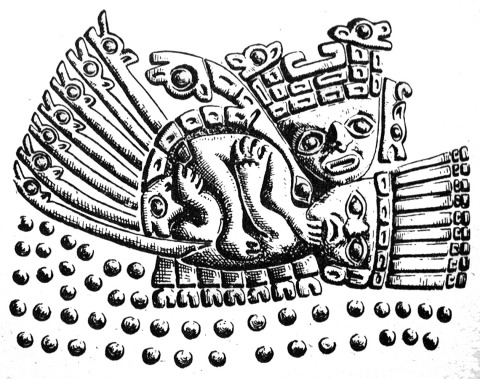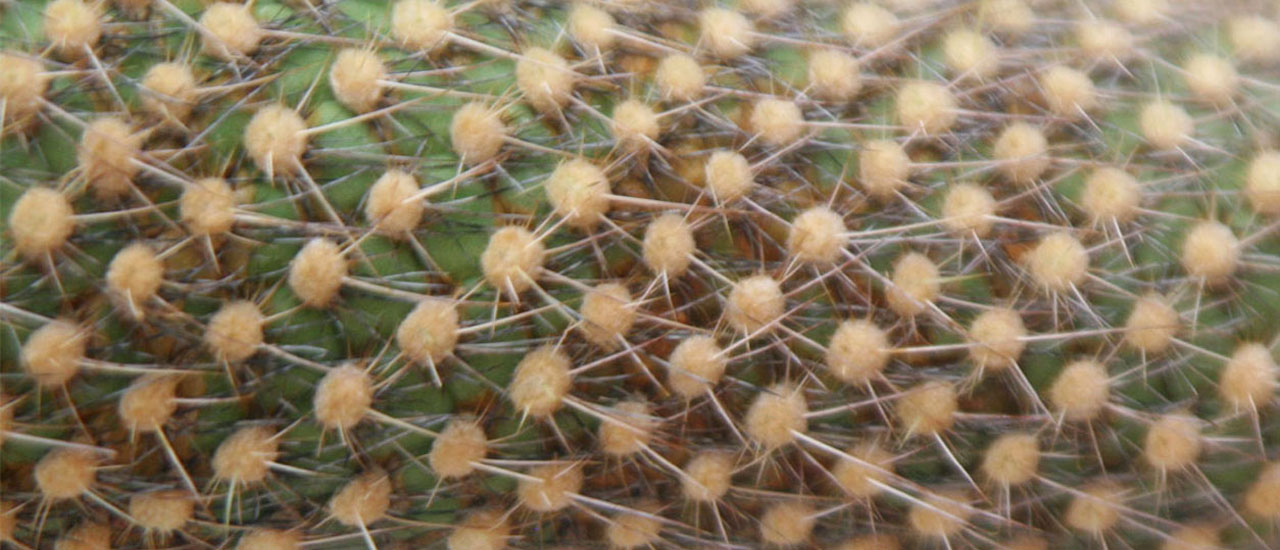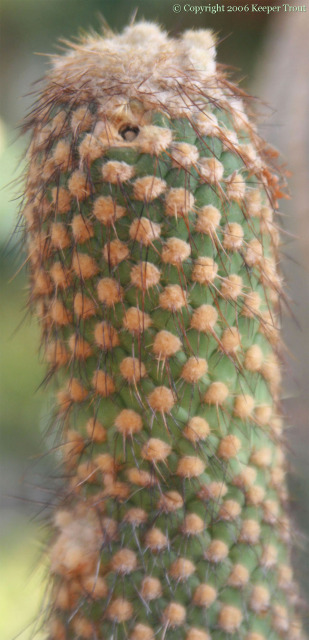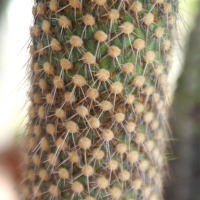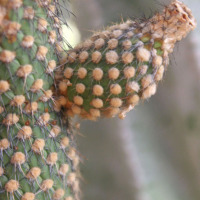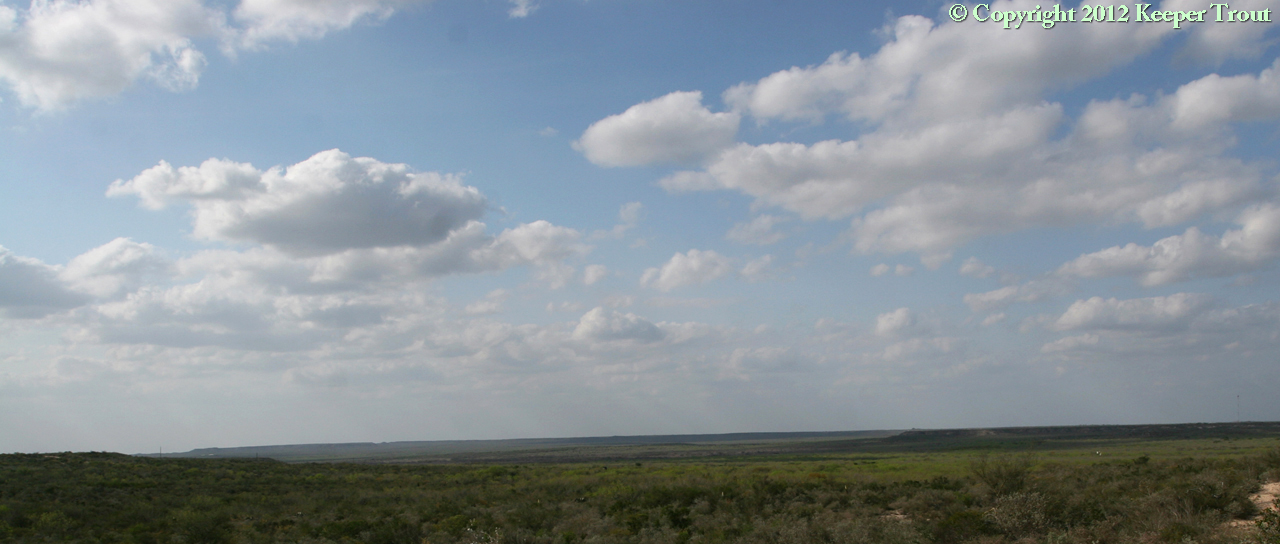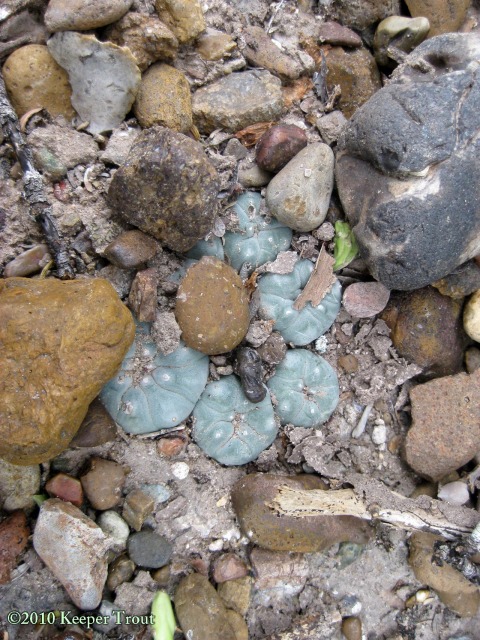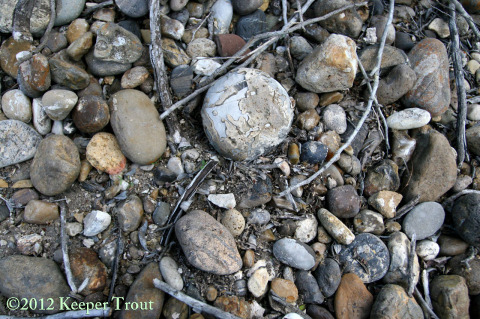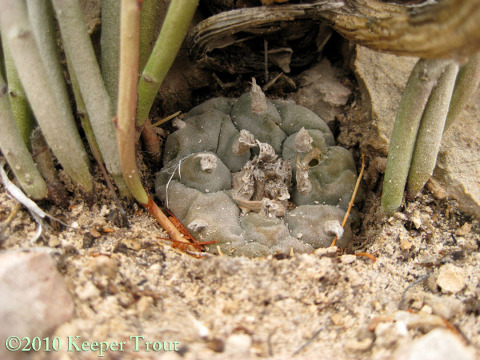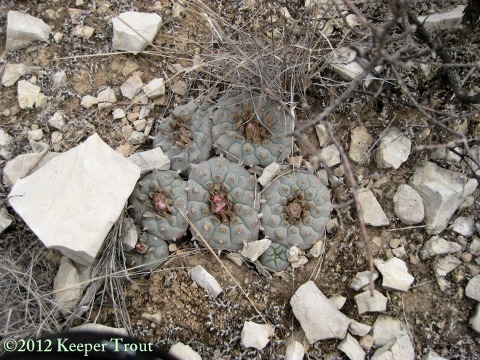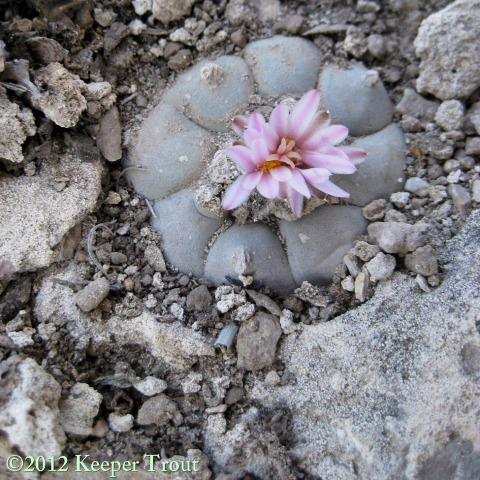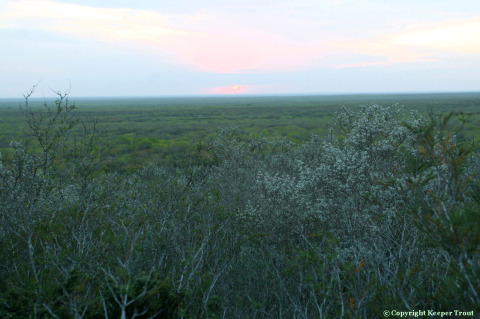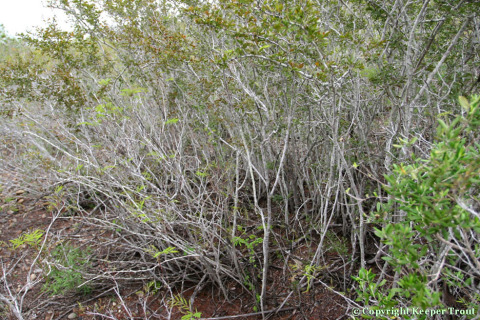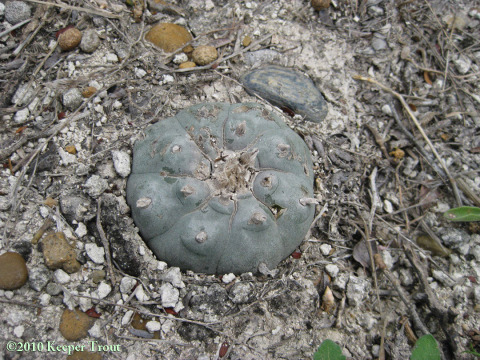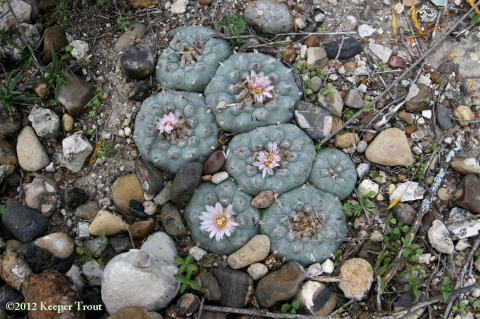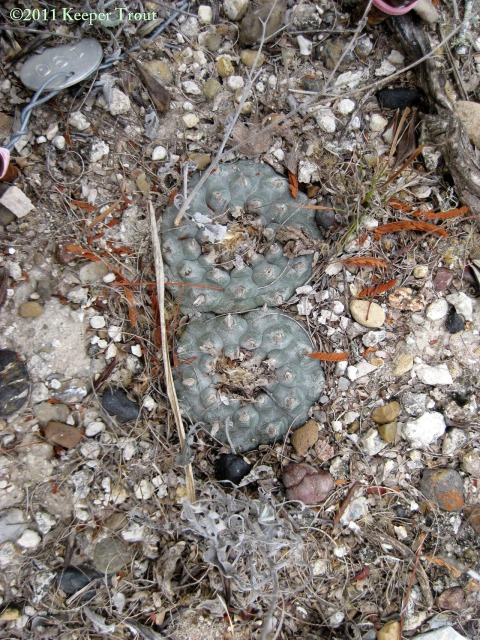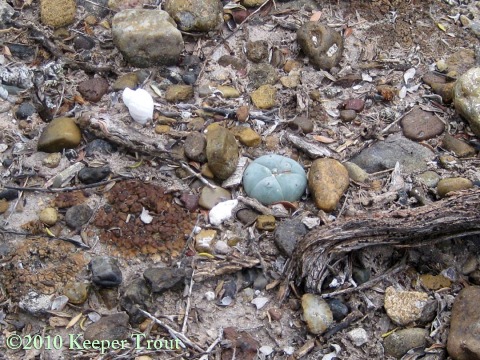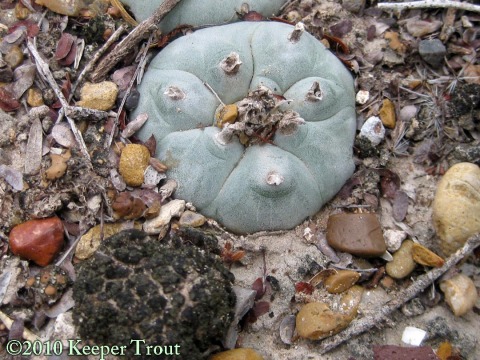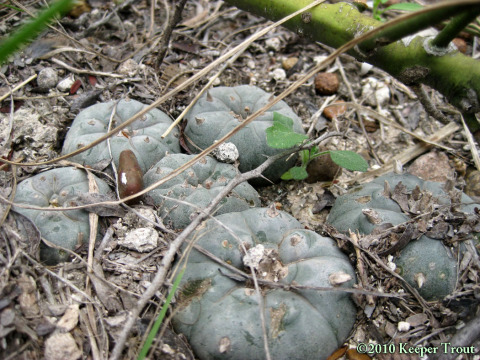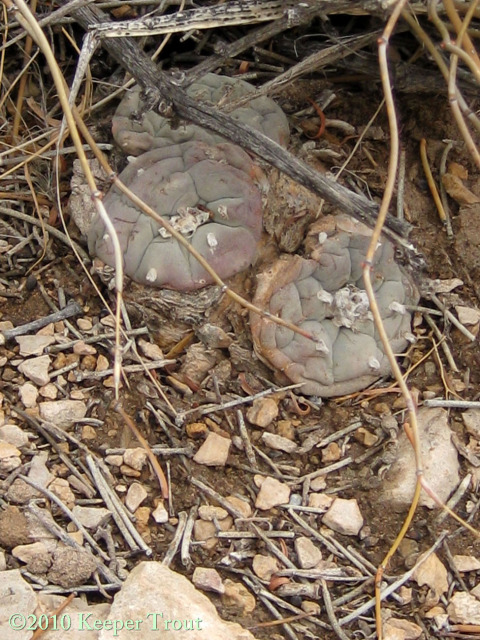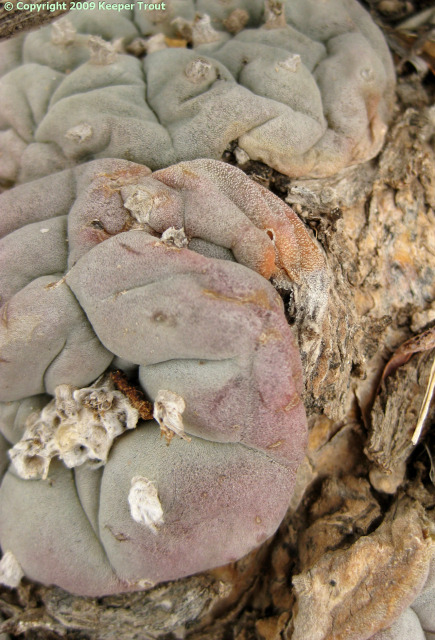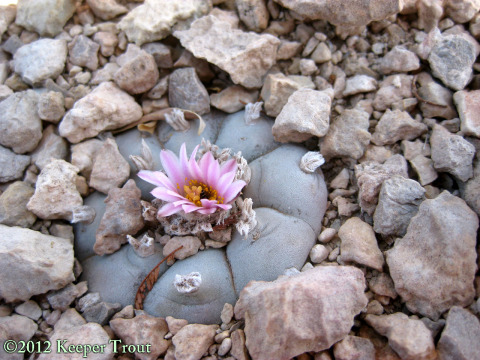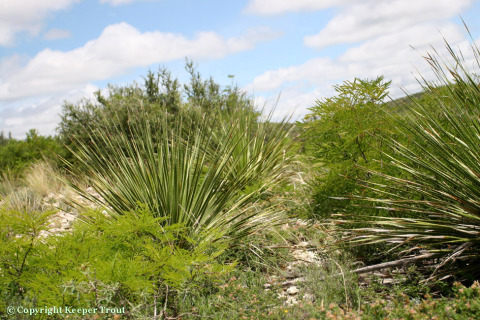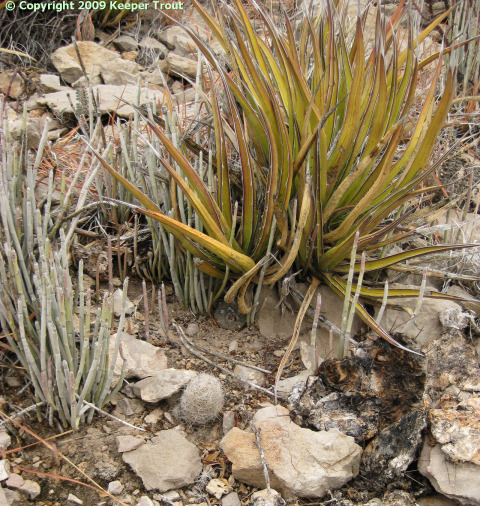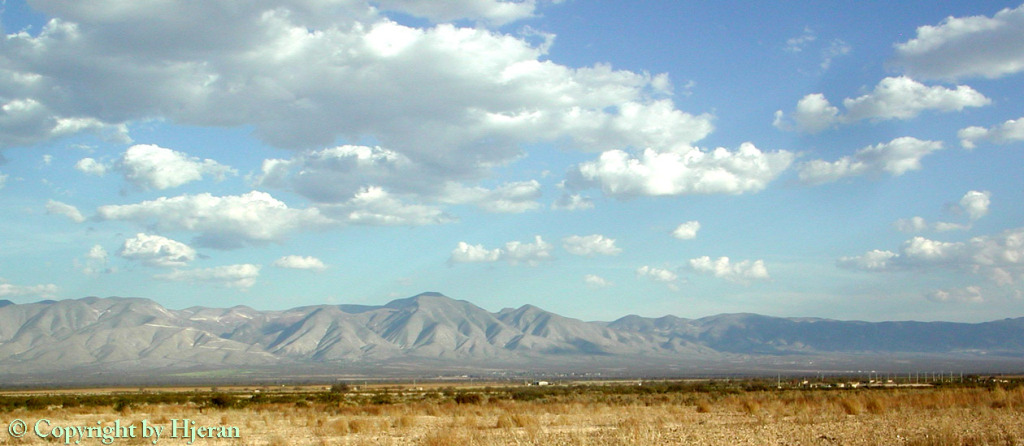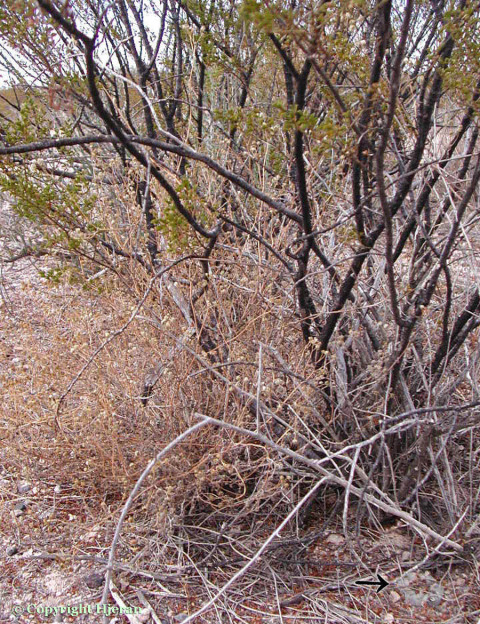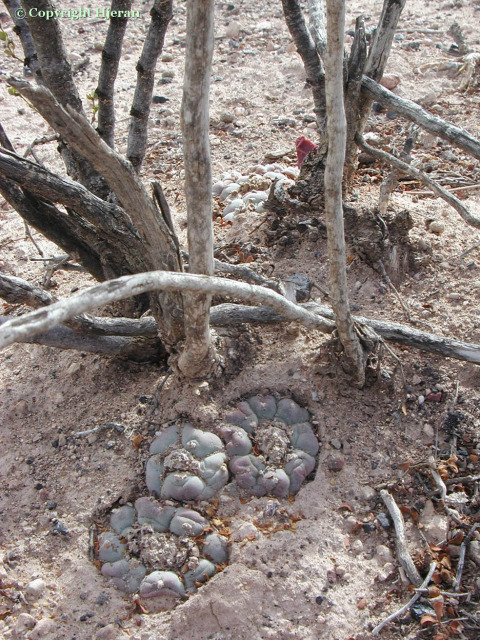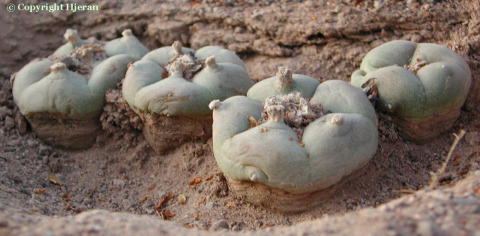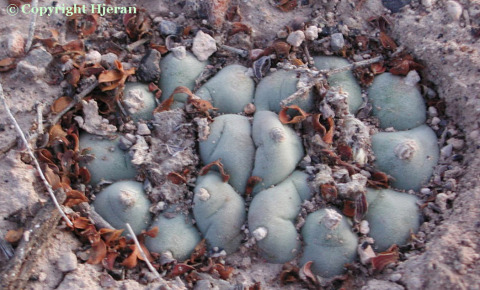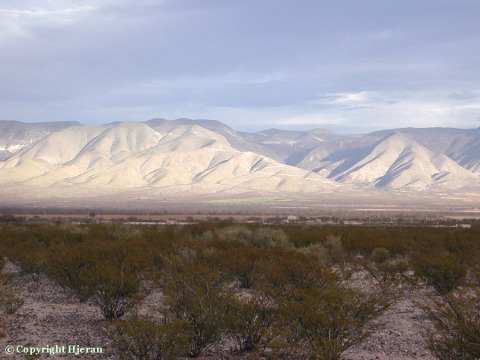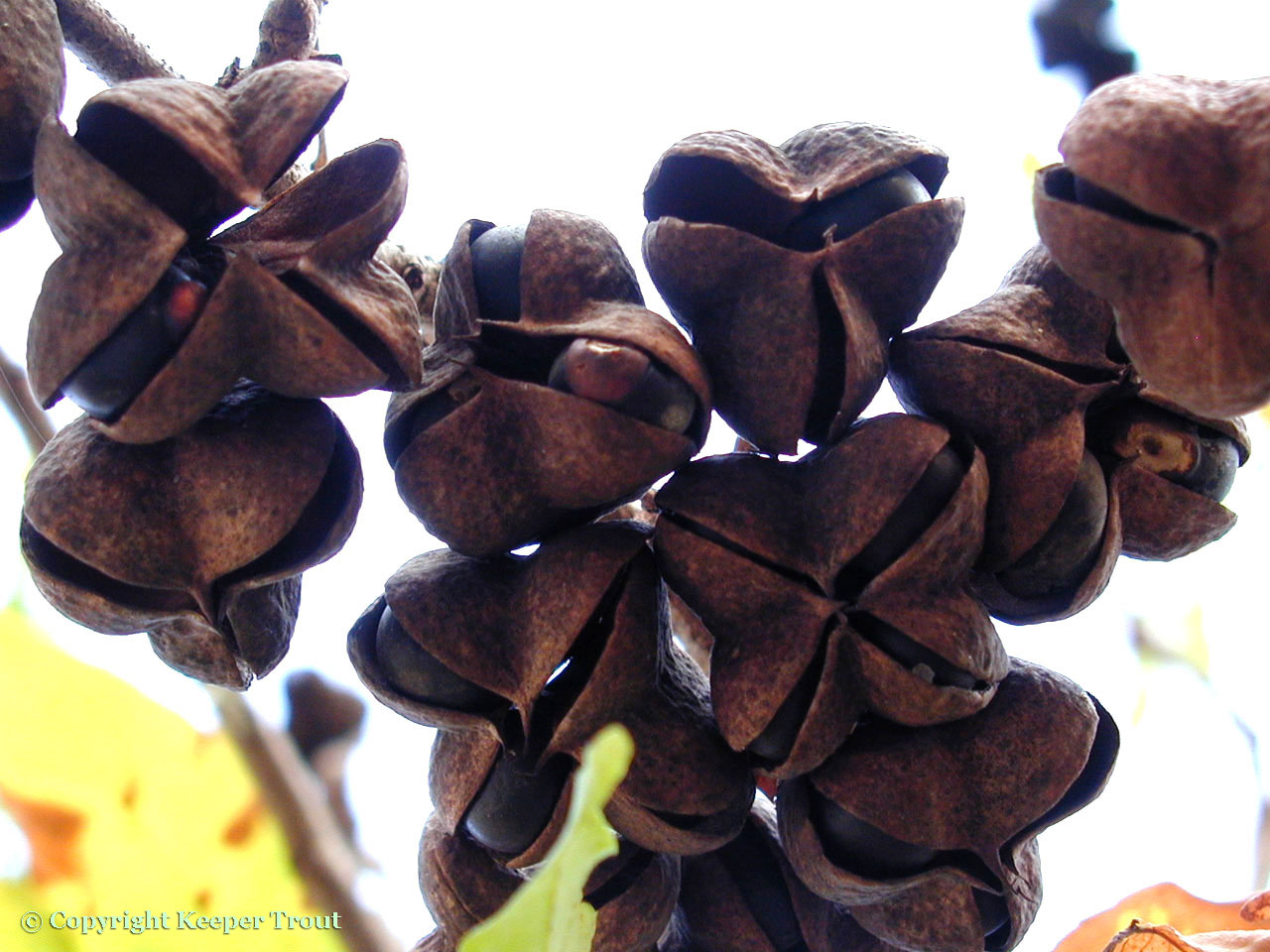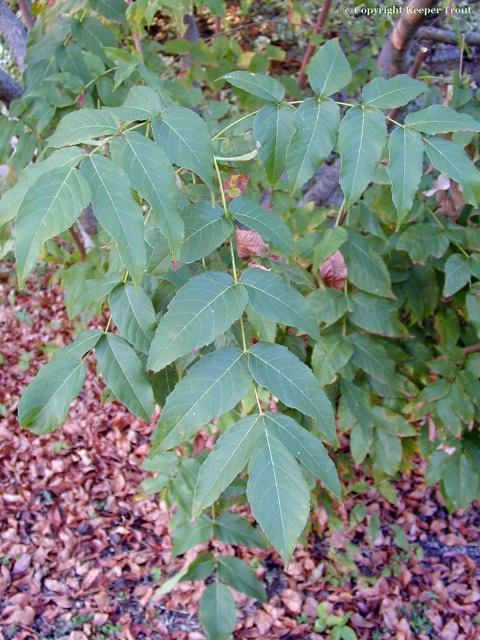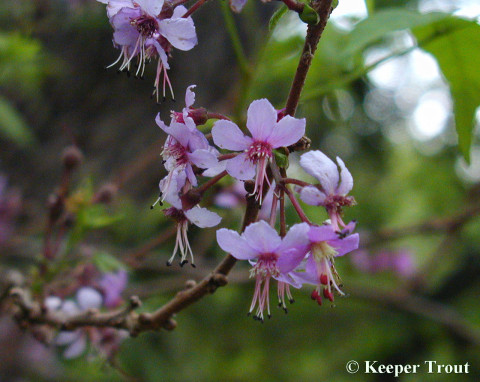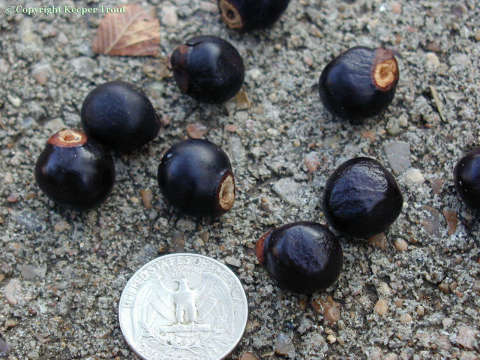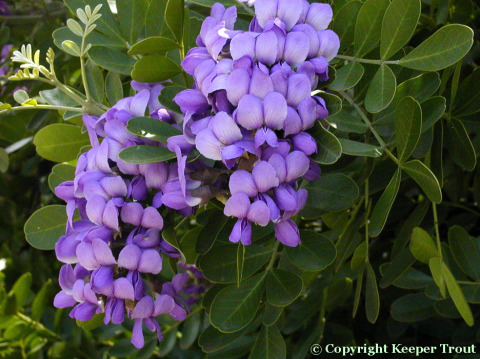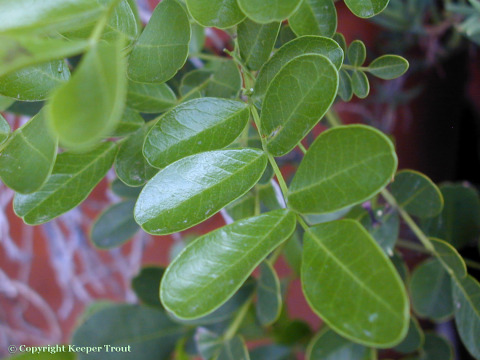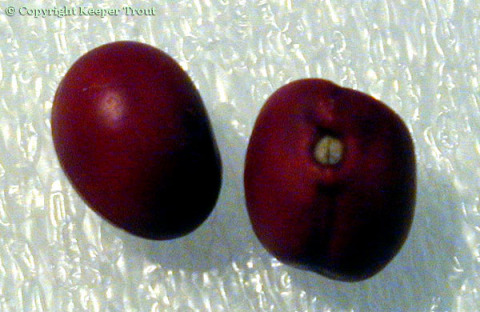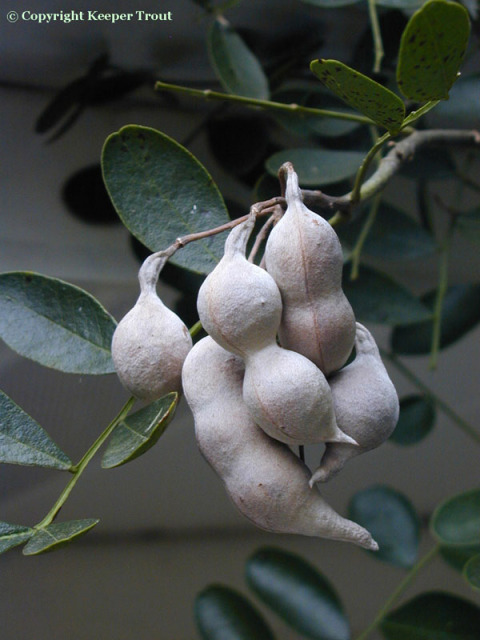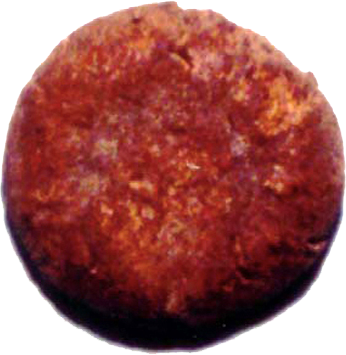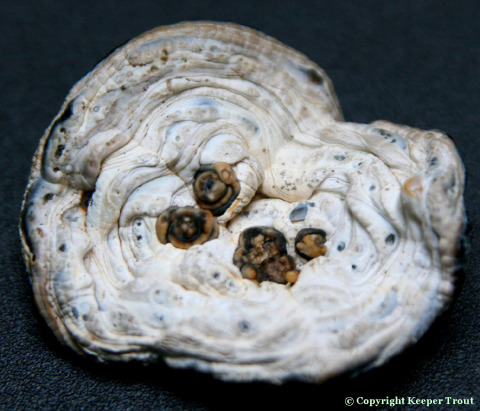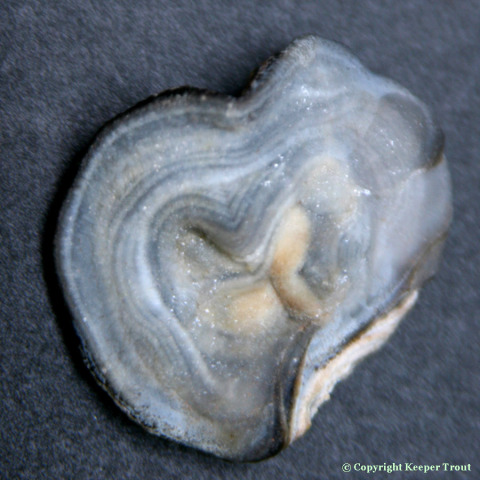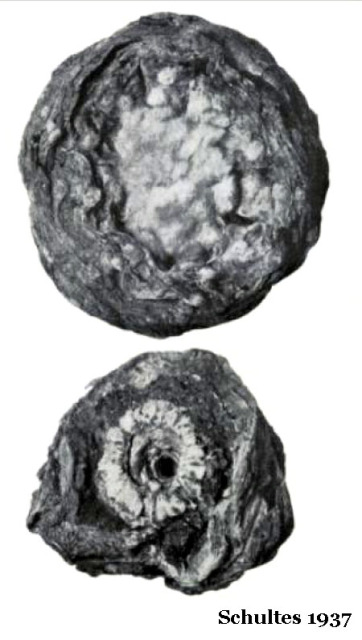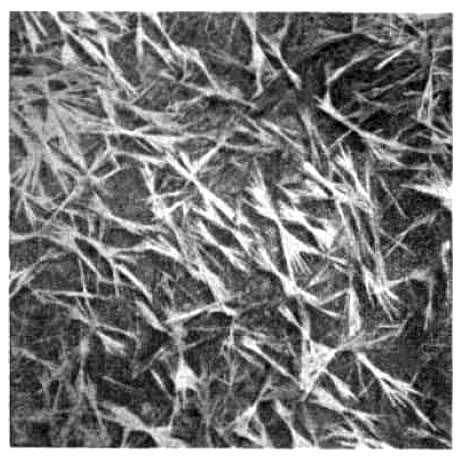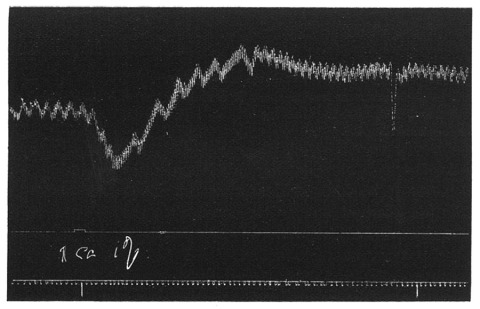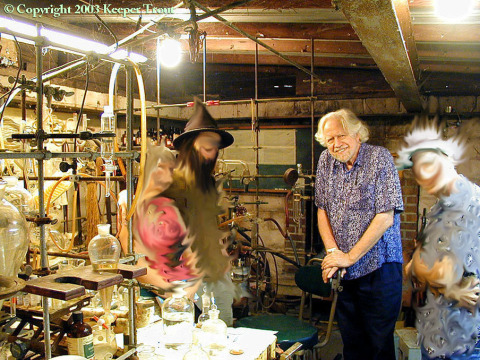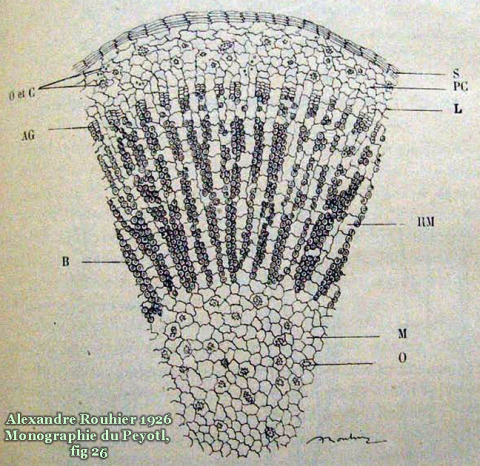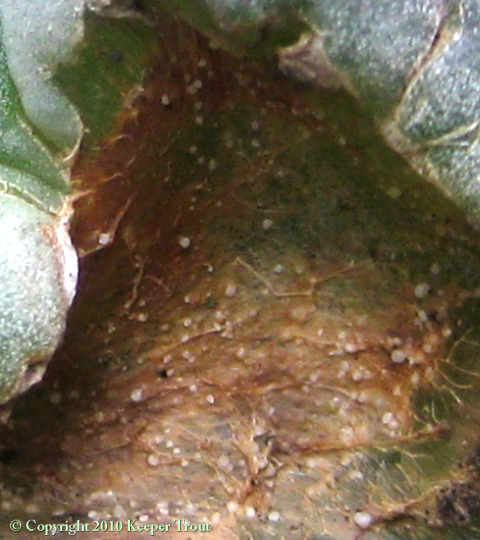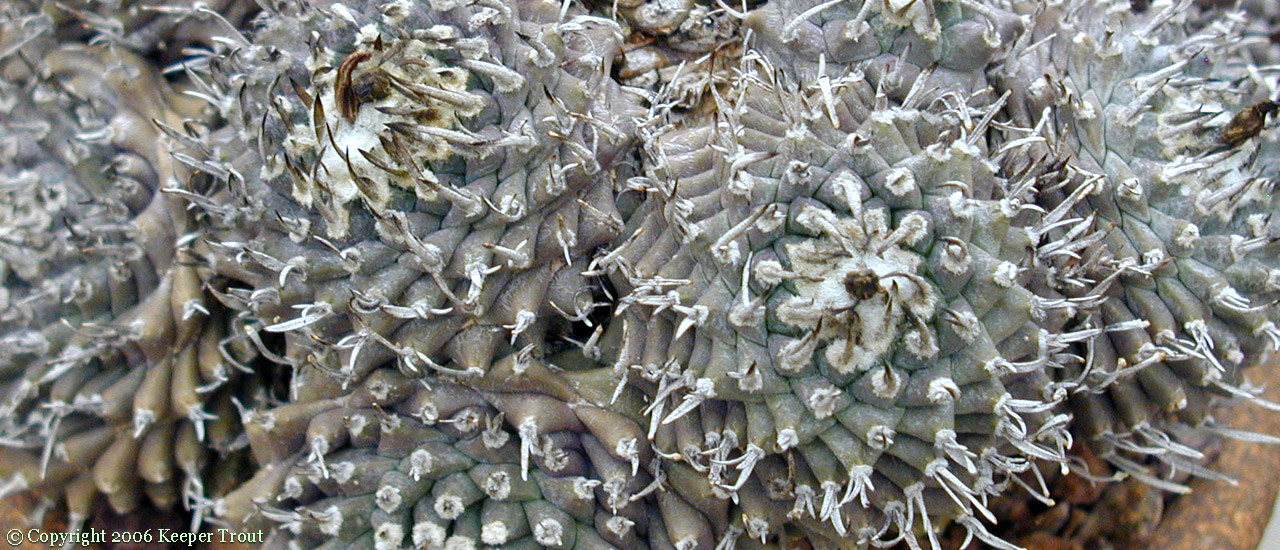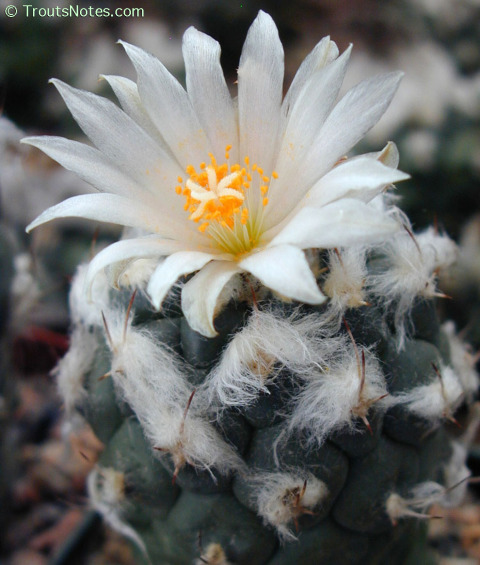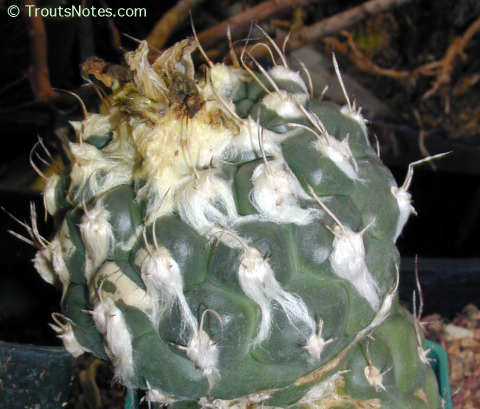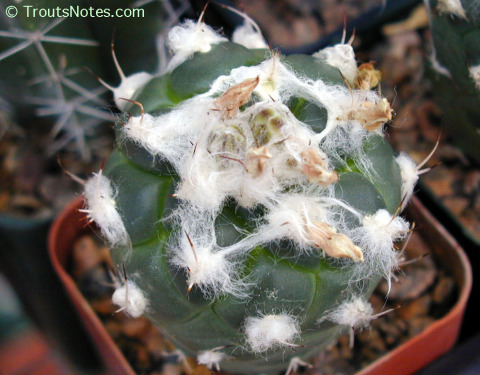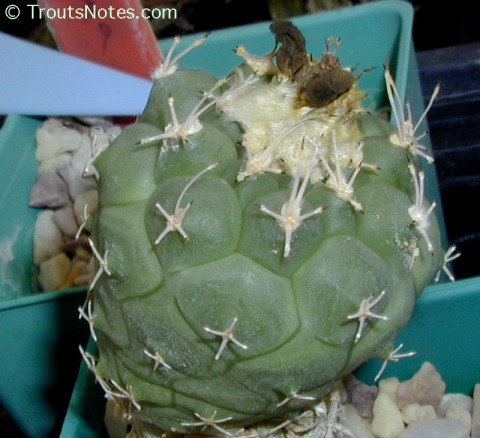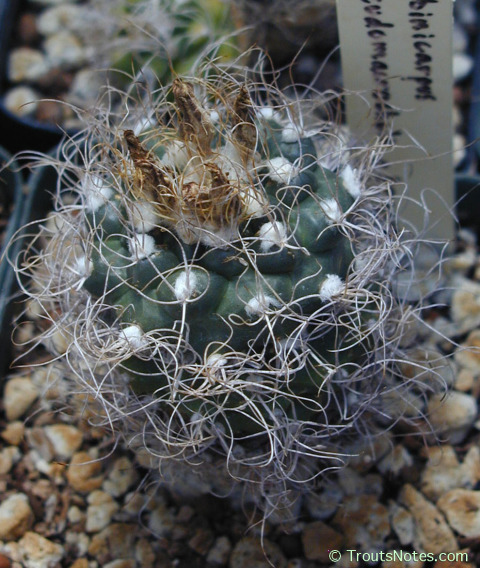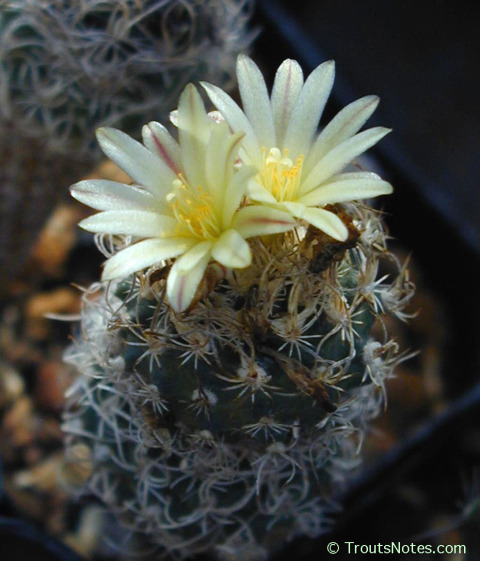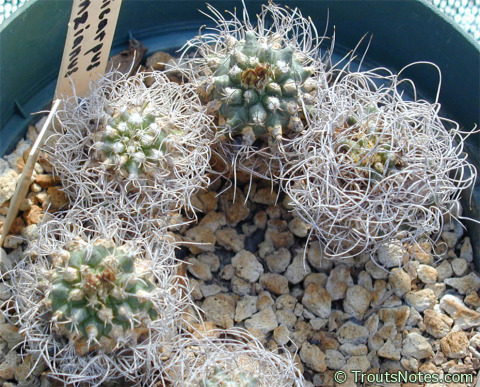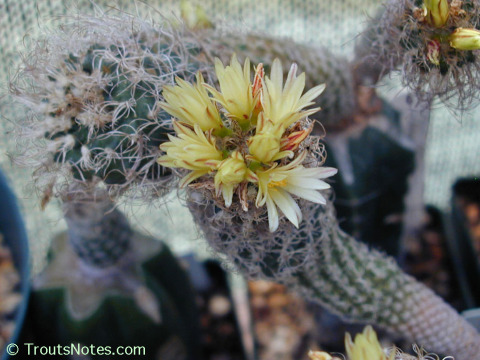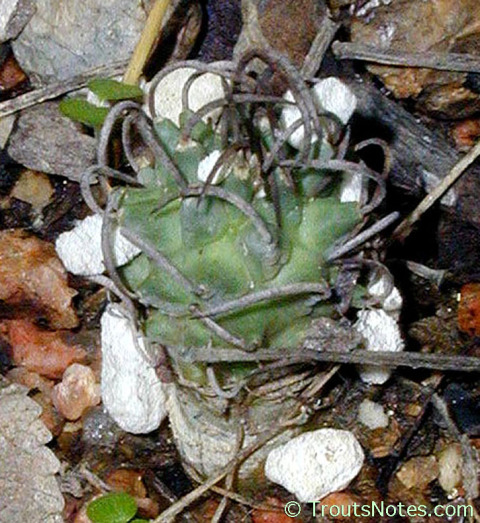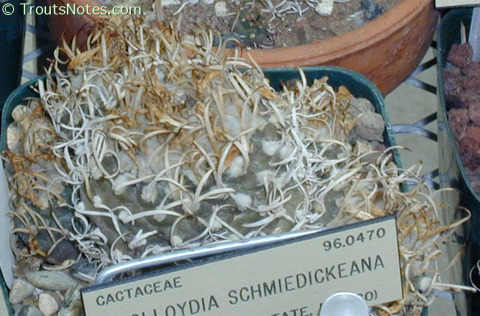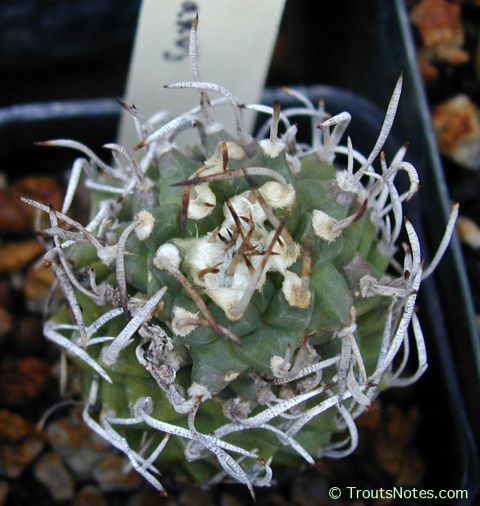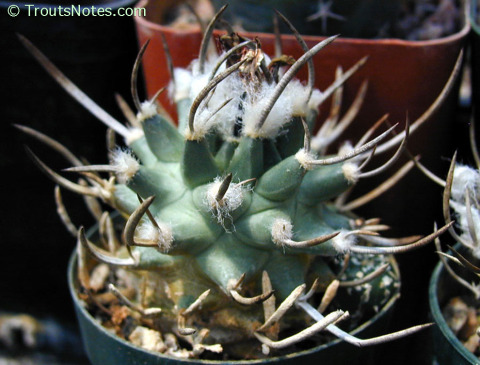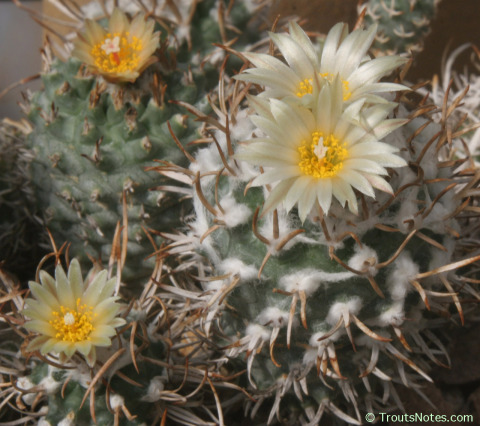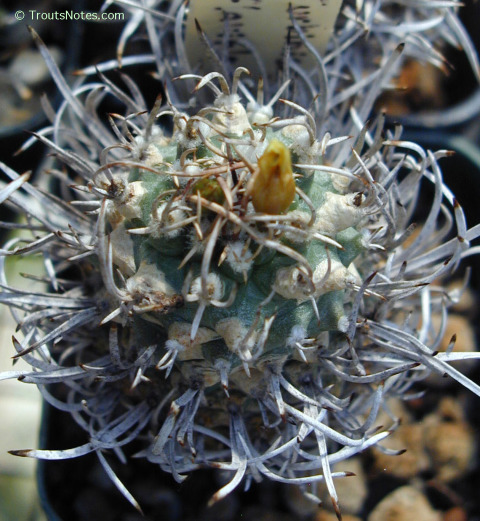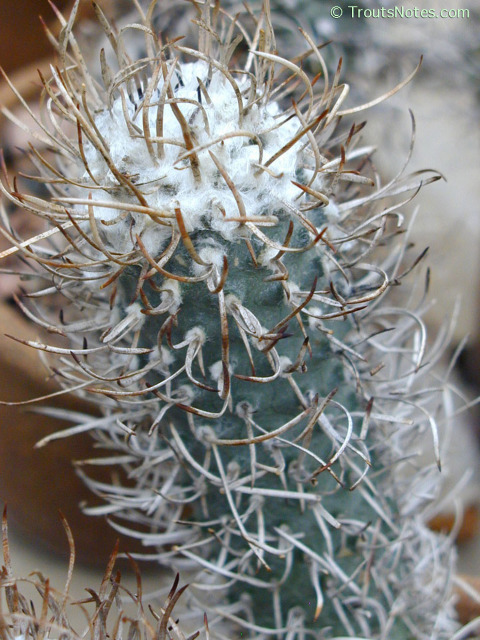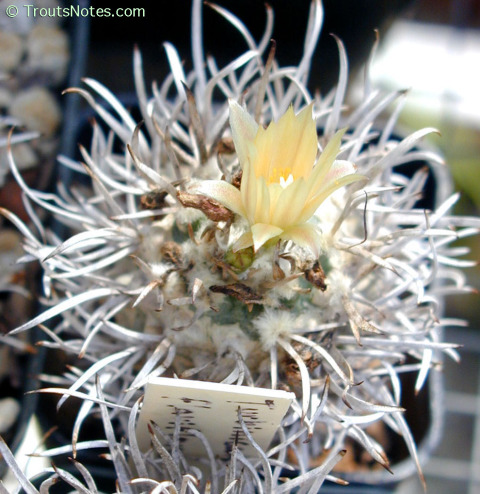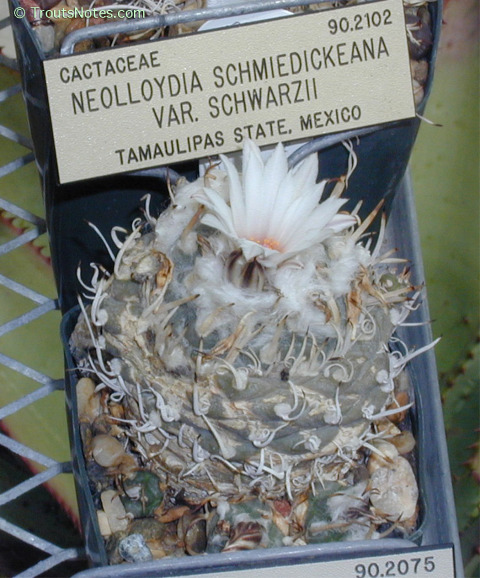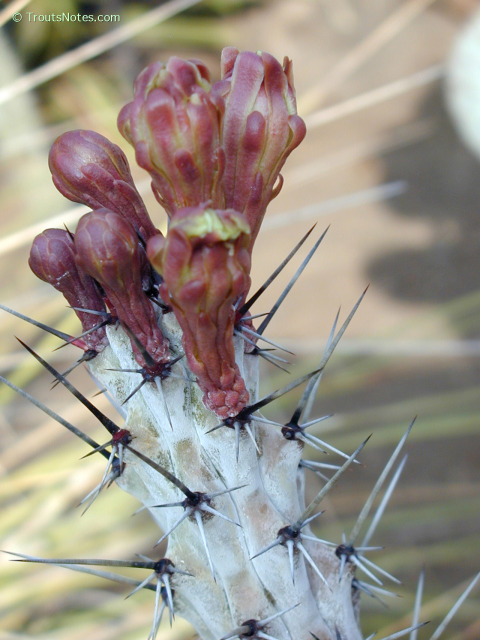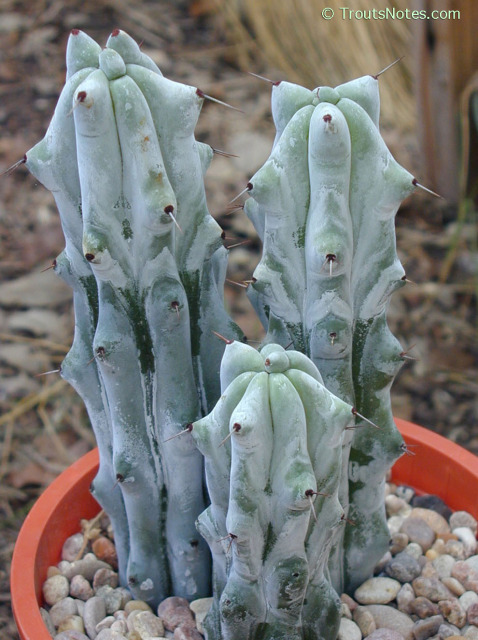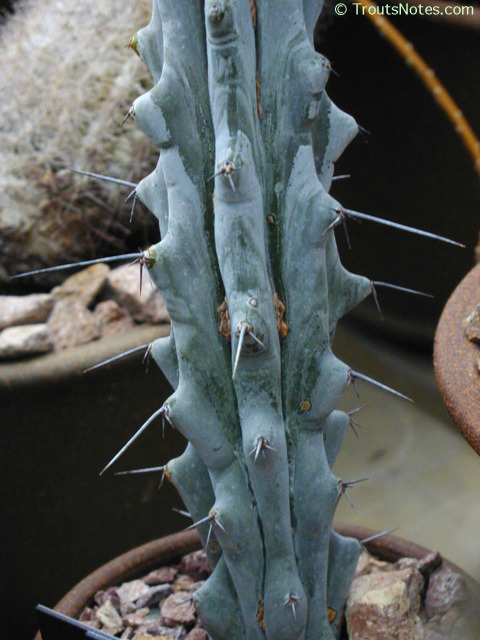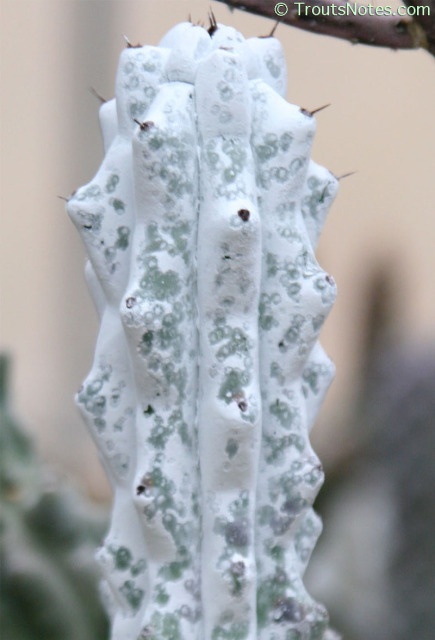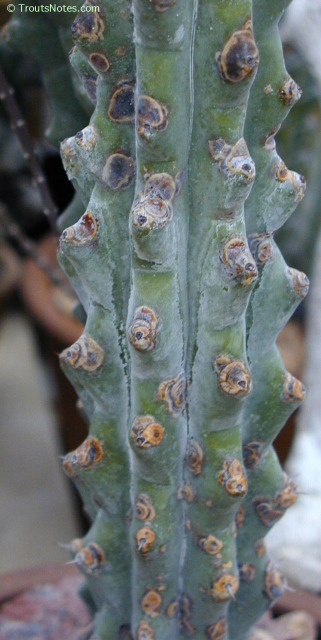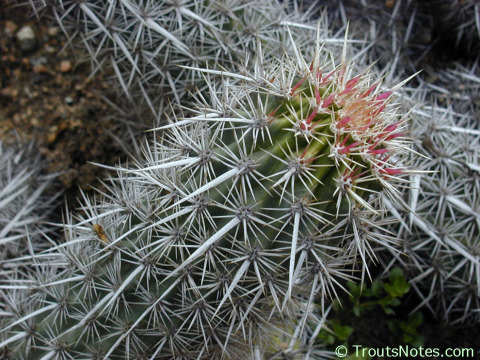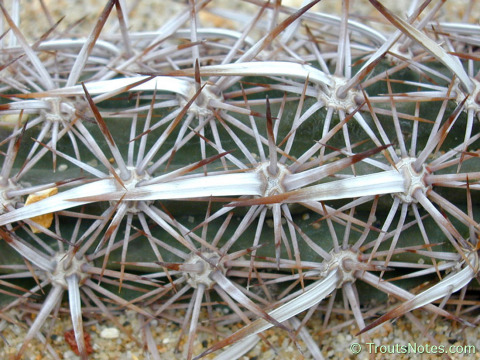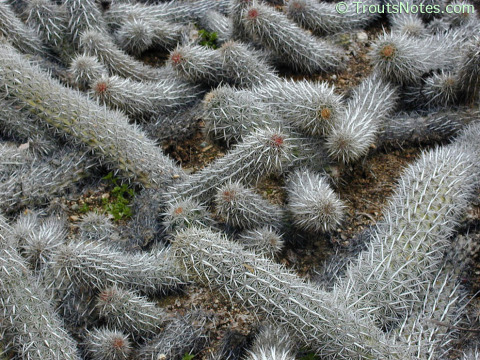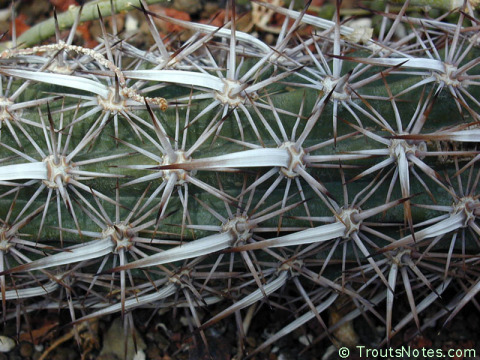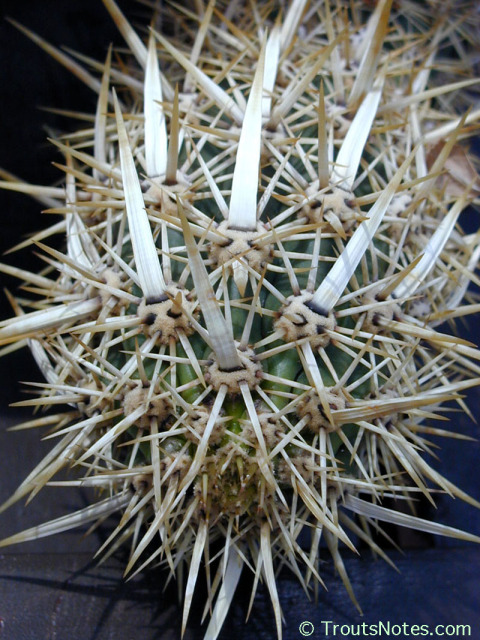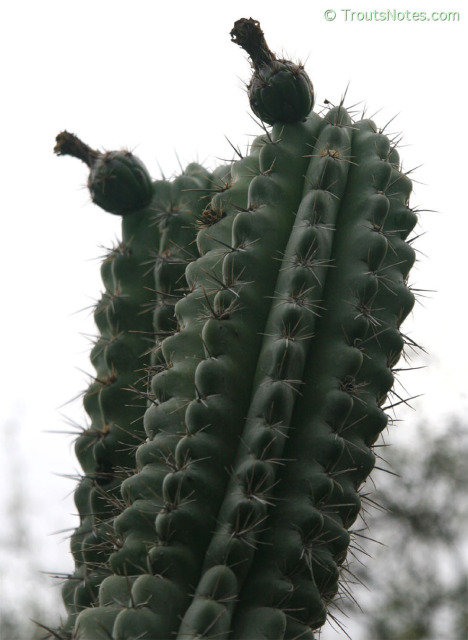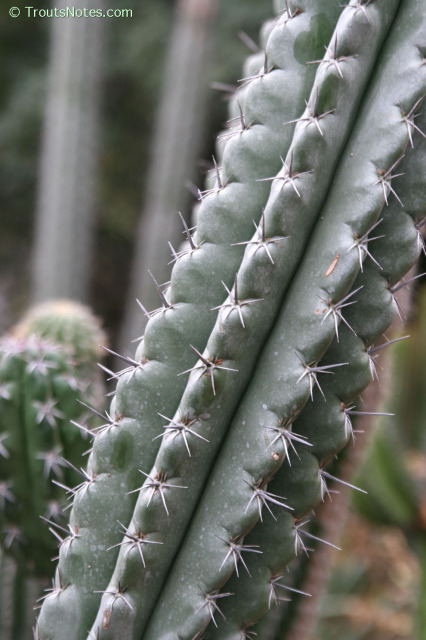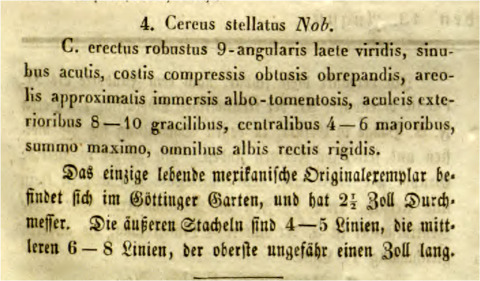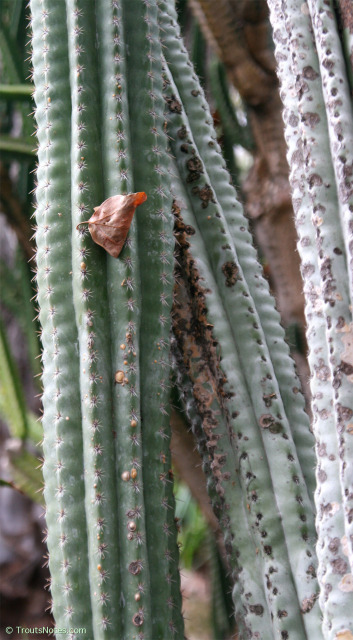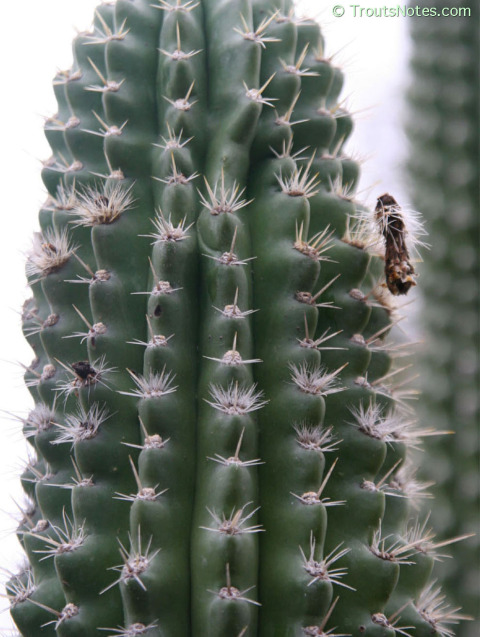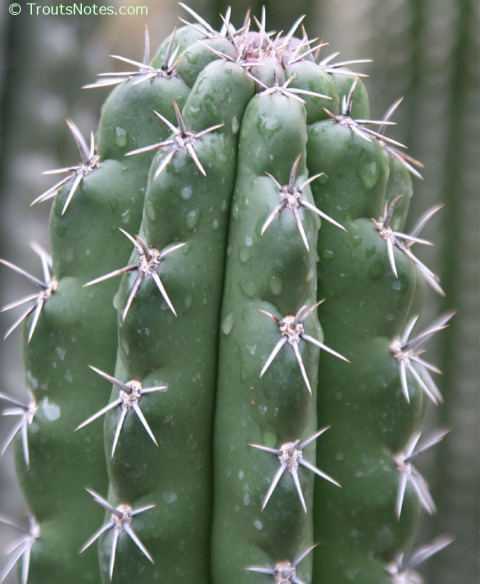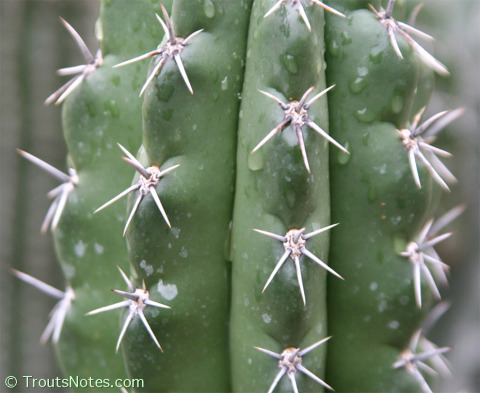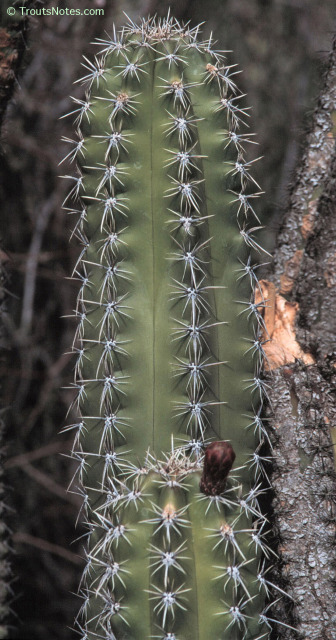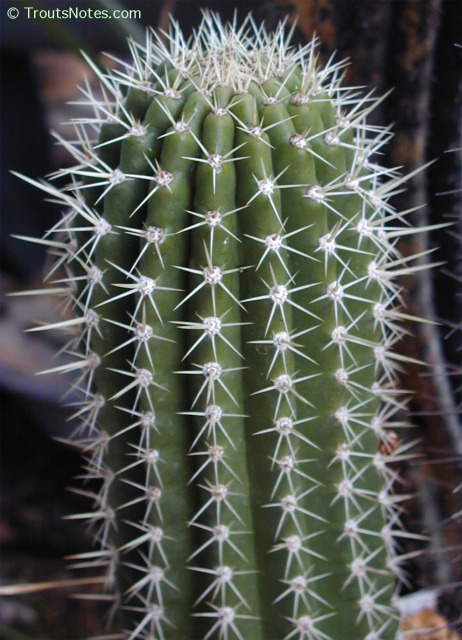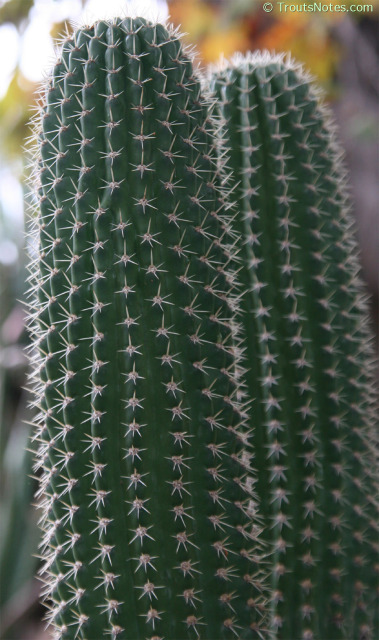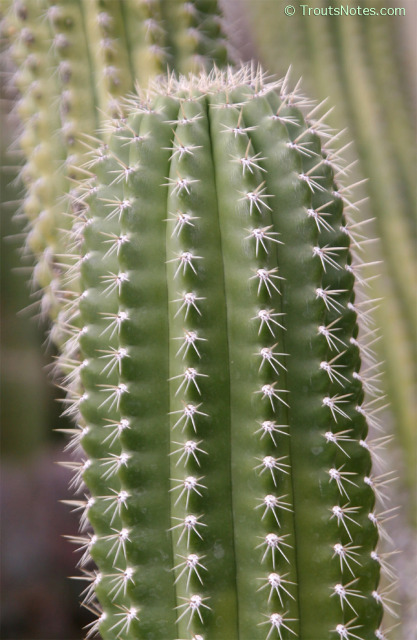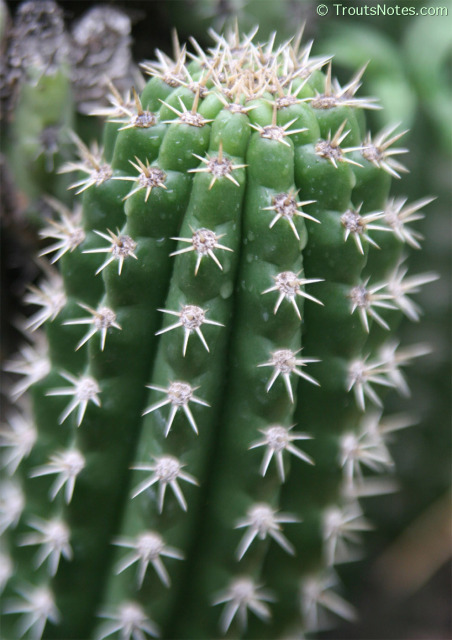References P-S used for Sacred Cacti 4th edition.
This references list is still in progress and will continue to be modified during the editing process. If anything new has not been added yet and you need to know it now; drop me an email.
[Brackets around a title indicates it is an English translation of the actual title. ]
Incomplete citations or the use of the qualifier “From” usually indicates that the paper listed was a second-hand reference. This means that this work was unavailable to us and was the reference that was cited by our information source.
As a single listing
A through D
E through J
K through O
T through Z
Pálenícek T et al. (2008) Psychopharmacology (Berl). 196 (1): 51–62. “Mescaline effects on rat behavior and its time profile in serum and brain tissue after a single subcutaneous dose.” (T. Pálenícek, M. Balíková, V. Bubeníková-Valesová & J. Horácek)
Palmieri, V.M. (1942) Rassegna Clinica Scientifica, 20. “La mescalina e l’ebbrezza peyotilica nell’uomo.”
Palmieri, V.M. & G. Lacroix (1941) Atti Congresso de medicina legale, 8 (1940): 540–549. “Ulteriori ricerche sull’intossicazione da mescalina.”
Palomino Yamamoto, Manuel (1972) Doctoral Thesis. Universidad Nacional Mayor de San Marcos (UNMSM), Lima. “Farmacoquimica de Cactaceae(sic) peruana.” This noncirculating work exists as a single copy in the Library of the Instituto Nacional de Salud, Av. Salaverry, Lima. The whole thesis is devoted to the biochemical study of Trichocereus santaensis Rauh et Backeberg. Photocopying is not permitted so Dr. Carlos Ostolaza graciously read it on my behalf and provided information on its contents.]
Pang, Hildegard [Hilda] Delgado (1992) Pre-Columbian Art. Investigations and Insights. University of Oklahoma Press. 330 pages. ISBN-10: 0806123796; ISBN-13: 978-0806123790. (first edition)
Panico, A.M. et al. (2007) Journal of Ethnopharmacology, 111 (2): 315–321. “Effect of hyaluronic acid and polysaccharides from Opuntia ficus indica (L.) cladodes on the metabolism of human chondrocyte cultures.” (A.M. Panico, V. Cardile, F. Garufi, C. Puglia, F. Bonina & S. Ronsisvalle)
Pap, Z. (1936)b Zeitschrift für die gesamte Neurologie und Psychiatrie, 155: 655–664. “Einwirkung des Meskalinrausches auf die post-hypnotischen Sinnestäuschungen.” [See also (1936)a Orvosi hetilap, 80: 75–78.]
Pardanani, J.H. et al. (1977) Lloydia, 40 (6): 585–590 “Cactus Alkaloids. XXXVI. Mescaline and related compounds from Trichocereus peruvianus.” (J.H. Pardanani, J.L. McLaughlin, R.W. Kondrat & R.G. Cooks.)
Pardanani, J.H. et al. (1978) Lloydia, 41 (3): 286–288 “Cactus Alkaloids. XXXVII. Mescaline and Related Compounds from Opuntia spinosior.” (J.H. Pardanani, B.N. Meyer, J.L. McLaughlin, W.H. Earle & R.G. Engard )
Parikh, V.M. & J.K.N. Jones (1966) Canadian Journal of Chemistry, 44: 327–333. “Cholla Gum. I. Structure of the Degraded Cholla Gum.”
Paris, René (1951) Comptes Rendus Hebdomaires des Séances de L’Académie des Sciences, 233: 90–92. “Sur un flavonoside des fleurs d’Opuntia vulgaris Miller.”
Paris, René & Hélène Moyse-Mignon (1949) Comptes Rendus Hebdomaires des Séances de L’Académie des Sciences, 229: 86–88. “Étude chimique et pharmacodynamique préliminaire d’une Loganiacée du Gabon: Mostuea stimulans A.Chev.”
Park, E.-H. et al. (2001) Fitoterapia,72: 288–290. “An anti-inflammatory principle from cactus.”
Park, E.-H. et al. (1998) Archives of Pharmacal Research, 21 (1998) 30–34. “Studies on the pharmacological actions of cactus: identification of its anti-inflammatory effect.” (E.-H. Park, J.H. Kahng & E.-A. Paek)
Parmentier (1838) L’Horticulteur Belge, 5: 66 [Cereus terscheckii] [From Britton & Rose] See also Pfeiffer 1837
Pascarosa, Paul & Futterman, Sanford (1976) Journal of Psychedelic Drugs, 8 (3): 215–221. “Ethnopsychedelic Therapy for Alcoholics: Observations in the Peyote Ritual of the Native American Church.”
Passie, Torsen (1994) Jahrbuch des Europäischen Collegiums für Bewußtseinsstudien, 1993/1994: 103–111. “Ausrichtungen, Methoden und Ergebnisse früher Meskalinforschungen im deutschsprachigen Raum (bis 1950)”
Patel, A.R. (1968) Fortschritte der Arzneimittelforschung (i.e. Progress in Drug Research), 11: 11–47. (E. Jucker, ed.) “Mescaline and Related Compounds.” [Birkhäuser Verlag, Basel und Stuttgart.]
Patterson, Alex (1992) Rock Art Symbols of the Greater Southwest. Johnson Books: Boulder, Colorado.
Patton, Mark (1990) Current Anthropology 31 (5): 554–558 “On Entoptic Images in Context: Art, Monuments and Society in Neolithic Brittany.”
Patton, Mark (1993) Statements in Stone. Routledge: London.
Patzig, B. & W. Block (1953) Naturwissenschaften, 40: 13–17. “Zur Auffassung des schizophrenen Prozessgeschehens nach Tierversuchen mit 14C-radioaktivem Meskalin.”
Paul, A.G. (1973) Lloydia, 36 (1): 36–45. “Biosynthesis of the peyote alkaloids.”
Paul, A.G. et al. (1969)a The Chemical Society, London. Chemical Communications, [Journal of the Chemical Society, D.] 14: 838. “Biosynthesis of Peyote Alkaloids.” (A.G. Paul, K.L. Khanna, H. Rosenberg & M. Takido)
Paul, A.G. et al. (1969)b Lloydia, 32 (1): 36–39. “The Roles of 3,4,5-Trihydroxyphenethylamine and 3,4-Dimethoxyphenethylamine in the Biosynthesis of Mescaline.” (A.G. Paul, H. Rosenberg & K.L. Khanna)
Paulson, James C. & William O. McClure (1973) Molecular Pharmacology, 9 (1): 41–50. “Inhibition of Axoplasmic Transport by Mescaline and Other Trimethoxyphenylalkylamines.” [Mescaline is a reversible inhibitor of axoplasmic transport.]
Pawar, R.S. et al. (2014) Journal of Pharmaceutical and Biomedical Analysis, 88: 457–466. “Determination of selected biogenic amines in Acacia rigidula plant materials and dietary supplements using LC–MS/MS methods.” (Rahul S. Pawar, Erich Grundel, Ali Reza Fardin-Kia & Jeanne I. Rader)
Payne (1961) Industrial Chemist, 37: 523.
Pearl, Irwin S. (1948) Journal of the American Chemical Society, 70 (5): 1746–1748. “Synthesis of Syringaldehyde.”
Pechánek, J. (1969) Kaktusy, 69: 76–81 & 109–113. “Lophophora Coult.” [L. lewinii Rusby & L. jourdaniana Krzgr] [Habermann 1975 gives as “69, 4, ; 76 and 69, 5, p. 103–113.”]
Pechánek, J. (1983) Kaktusy,19: 50–53. “Lophophora Williamsii var. decipiens Croizat.”
Pekkarinen, A. & M.-E. Pitkanen (1955) Scand. J. Clin. Lab. Inves. 7: 1 [from Usdin & Efron 1979]
Pellerin, J. et al. (1958) Revue Canadienne de Biologie, 17 (3): 267–298. “Biogenesis and Metabolism of Catecholamines.” (J. Pellerin, J. Leduc and A. D’Iorio)
Pemberton, I.J. et al. (1993) Journal of Animal Sciences, 71:467–470. “Technical note: an improved method for extraction and quantification of toxic phenethylamines from Acacia berlandieri.” (I.J. Pemberton, G.R. Smith, T.D.A Forbes & C.M. Hensarling)
Pennes, Harry H. (1954) Journal of Nervous and Mental Disease, 119 (2): 95–112. “Clinical reactions of schizophrenics to Sodium Amytal, Pervitin Hydrochloride, Mescaline Sulfate, and D-Lysergic Acid Diethylamide (LSD-25).”
Pennington, Campbell W. (1963) The Tarahumar of Mexico. Univ. Utah Press (Reprinted 1974: ISBN-10 0874800935; ISBN-13 9780874800937) 267 pages. (Also reprinted in 1996 by Editorial Agata, Guadalajara, Jalisco, Mexico, with 33 b/w & 12 full-colour photographs (found only in this edition) & 4 fold out maps in a back pocket)
Penington, N.J. & R.J. Reiffenstein (1986) European Journal of Pharmacology, 122 (3): 373–377. “Direct comparison of hallucinogenic phenethylamines and D-amphetamine on dorsal raphe neurons.”
Pepper, J.M. & J.A. MacDonald (1953) Canadian Journal of Chemistry, 31: 476–483. “The Synthesis of Syringaldehyde from Vanillin.”
Pereira, N.A. & D.S. de Oliveira (1961) Rev. Brasil Farm., 42: 13 [CA (1962) 56: 6486] [From Deulofeu & Ruveda 1971]
Perfumi, M. & R. Tacconi (1996) International Journal of Pharmacognosy, 34: 41–47. “Antihyperglycemic Effect of Fresh Opuntia dillenii Fruit from Tenerife (Canary Islands).”
Perry et al. (1965) “Studies of amines in normal and schizophrenic subjects.”from Amines Schizophrenia, Pap. Symp, Atlantic City. 1965: 31 [CA 68: 37621] (from Crosby & McLaughlin 1973)
Perry, S.Y. et al. (1991) Molecular Biotherapy, 3: 79–87. “Decreased mortality of normal murine sarcoma in mice treated with the immunomodulator, Acemannan.”
Petershofer-Halbmeyer, H. et al. (1982) Scientia pharmaceutica, 50: 29–34. “Isolierung von Hordenin (“Cactin”) aus Selenicereus grandiflorus (L.) Britt. & Rose und Selenicereus pteranthus (Link & Otto) Britt. & Rose” (H. Petershofer-Halbmayer, O. Kubelka, J. Jurenitsch & W. Kubelka)
Petrullo, Vincenzo (1934) The Diabolic Root. A Study of Peyotism, the New Indian Religion Among the Delaware. University of Pennsylvania Press, The University Museum. [Still a good book today.]
Peyote Foundation 1998 Press release re: 11,200 living peyote plants. Peyote Foundation: POBox 778, Kearny, AZ 85237.
Pfeiffer, Louis Georg(e) Karl (1837) Alg. Gartenz. 5: 370 [Cereus terscheckii Parmentier] [From Britton & Rose]
Piattelli, Maurio (1981) “The Betalains: Structure, Biosynthesis, and Chemical Taxonomy.” pp. 557–575, in: E.E. Conn (editor) The Biochemistry of Plants: A Comprehensive Treatise. Volume 7: Secondary Plant Products. Academic Press. ISBN 0-12-67507-1.
Piattelli, Maurio & F. Imperato (1969) Phytochemistry, 8: 1503–1507. “Betacyanins of the Family Cactaceae.”
Piattelli, Maurio & Luigi Minale (1964)a Phytochemistry, 3: 307–311. “Pigments of Centrospermae – II. Distribution of Betacyanins.”
Piattelli, Maurio & Luigi Minale (1964)b Phytochemistry, 3: 547–557. “Pigments of Centrospermae – I. Betacyanins from Phyllocactus Hybridus Hort. and Opuntia ficus-indica Mill.”
Piccinelli, D. (1955) Boll. Soc. Eustachiana e Ist. Sci. Univ. Camerino, 48: 105. [CA 53: 8372a] [From Smith 1977]
Piattelli, M. et al. (1964)a Rend. Accad. Sci. Fis. Mat. (Soc. Naz. Sci., Napoli), 31: 39–41. “Isolation and Structure of Indicaxanthine, a β-Xanthine from Opuntia ficus-indica.” (Mario Piattelli, Luigi Minale & Giuseppe Prota) [From 1966 CA 64: 5037a]
Piattelli, M. et al. (1964)b Tetrahedron, 20: 2325–2329. “Isolation, Structure and Absolute Configuration of Indicaxanthin.” (Mario Piattelli, Luigi Minale & Giuseppe Prota)
Piattelli, M. et al. (1965) Phytochemistry, 4: 121–125. “Pigments of Centrospermae – II. Betaxanthins from Beta vulgaris L..” (Mario Piattelli, Luigi Minale & Giuseppe Prota) [Mentions isolation from Opuntia ficus-indica]
Pictet et al. 1911 Ber 44: 2036
Pinkley, Homer V. (1969) Lloydia, 32 (3): 305–314. “Plant Admixtures to Ayahuasca, the South American Hallucinogenic Drink.” [Epiphyllum]
Pinkson, Tom Soloway (1995) Flowers of Wiricuta: A Gringo’s Journey To Shamanic Power. Wakan Press 0-9647542-0-7. 302 pages.
Pinschmidt, N.W. et al. (1945) Journal of Pharmacology and Experimental Therapeutics, 83: 45 -52. “Studies on the Antagonism of Sodium Succinate to Barbiturate Depression.” (N.W. Pinschimdt, Helen Ramsey & H.B. Haag)
Pittier, H. (1926) Manual de las Plantas Usuales de Venezuela. Litografia del Comercio, Caracas.
Pizzetti, Mariella (1985) Simon and Schuster’s Guide to Cacti and Succulents. ISBN: 0-671-55846-3/ 0-671-60231–4 (paperback) [Originally published in Italian as “Piante grasse” by Arnoldo Mondadori Editore S.p.A. Milan, 1985.]
Platonova, T.F. et al. (1958) Journal of General Chemistry of the USSR, 28: 3159- 3161. “Alkaloïds of Chenopodiaceæ: Arthrophytum leptocladum Popov.”
Plotkin, Mark (1994) Tales of a Shaman’s Apprentice. Penguin. ISBN 0-14-012991-X.
Plotnikoff, N.P. & H. Washington (1958) Proceedings of the Society for Experimental Biology and Medicine, 98 (3): 660–662. “Bioassay of Ataraxics Against Lethal Action of Mescaline in Mice.”
Pohorecky, L.A. et al. (1969) Journal of Pharmacology & Experimental Therapeutics, 165 (2): 190–195. “Enzymatic conversion of norepinephrine to epinephrine by the brain.” (L.A. Pohorecky, M. Zigmond, H. Karten & R.J. Wurtman)
Poisson, Jacques (1960) Annales Pharmaceutiques Françaises, 18: 764–765. “Présence de mescaline dans une Cactacée péruvienne.”
Poisson, Jacques (1961) Chemical Abstracts 55: 8448 [Abstracts Poisson 1960]
Polache, Ana & Luis Granero (2013) Frontiers in Behavioral Neuroscience, 7: 74. “Salsolinol and ethanol-derived excitation of dopamine mesolimbic neurons: new insights.”
Polia, Mario (1990) Quaderni di Avallon 23: 59–69. “Alcune riflessioni sull’uso delle droghe rituali nello sciamenesimo amerindio.”
Polia, Mario (1993) Altrove 1: 77–92. “L’uso del cactus mescalinico Trichocereus pachanoi nella medicina tradizionale andina.”
Polia, Mario (1997) Il Sangue Del Condor; Sciamani Delle Ande. Xenia Edizioni, Milano; 281 pages. ISBN 88-7273–203–4.
Pollard, J.C. et al. (1960) Comprehensive Psychiatry, 1: 377–380, “Controlled sensory input: a note on the technique of drug evaluation with a preliminary report on a comparative study of Sernyl, psilocybin and LSD.” (J.C. Pollard, C. Bakker, L. Uhr & D.F. Feurfile)
Poloni, A. (1956) Cervello 32: 400.
Polono, A. & G. Maffezzoni (1952) Sistema nervoso, 4: 578–581. “Le variazione dell’ attività colinergica del tessuto cerebrale per effetto della bulbocapnina, della mescalina e della dietilamide dell’ acido lisergico.”
Popelak, A. & G. Lettenbauer (1967) “The mesembrine alkaloids.” pp. 467–482 in Manske & Holmes (eds.) The Alkaloids. Vol. 9.
Popelak, A. et al. (1960)a Naturwissenschaften, 47: 156. “Zur Konstitution des Mesembrins.” (A. Popelak, E. Haack, G. Lettenbauer & H. Spingler) [From DeSmet 1996]
Popelak, A. et al. (1960)b Naturwissenschaften, 47: 231–232. “Die Strukture des Mesembrins und Mesembrenins.” (A. Popelak, G. Lettenbauer, E. Haack & H. Spingler) [From DeSmet 1996]
Popelak, A. et al. (1960)c Naturwissenschaften, 47: 241
Pophof, B. et al. (2005) Chemical Senses, 30 (1): 51–68. “Volatile organic compounds as signals in a plant-herbivore system: electrophysiological responses in olfactory sensilla of the moth Cactoblastis cactorum.”
Popoff, E.I. (1897) Vrach (St. Petersburg) 28: 1361. “K farmakologii pellotina.”
Porsch, Otto (1938) Cactaceae. Jahrbücher der Deutschen Kakteen-Gesellschaft. Entire May issue. “Das Bestäubungsleben der Kakteenblüte I.”
Post, R.M. et al. (1980) p. 685, in: Wood, J.M. (ed.) Neurobiology of Cerebralspinal Fluid. Vol. One., Plenum Press, New York.
Powell, A Michael & James F. Weedin (2004) Cacti of the Trans-Pecos & Adjacent Areas. Texas Tech University Press. ISBN 0-89672-531-6, 510 pages + 313 plates. This is quite possibly the best book that has ever been written about cacti.
Powell, C.E. & K.K. Chen (1956) Journal of the American Pharmaceutical Association, Scientific Edition, 45 (8): 559–561. “Pilocereine, a Cactus Alkaloid.”
Prajer, Z. (1968)a Informator Polskiego Towartzstwa Miƚosników Kaktusów, pp. 22–29, 111–129. “Peyotl-Bog-Diabeƚ-czy tylko zwykƚy kaktus?”
Prajer, Z. (1968)b Informator Polskiego Towartzstwa Miƚosników Kaktusów, pp. 120–129. “Peyotl-przez ‘mędrca skieƚko’.”
Prajer, Z. (1969) Swiat Kaktusów, 2: 35–43. “Peyotl-przez ‘mędrca skieƚko’.”
Pratesi et al. 1959 J. Chem Soc. 4062
Prentiss, D.W. & Francis P. Morgan (1895) Therapeutic Gazette, 19: 577–585. “Anhalonium Lewinii (Mescal Buttons). A Study of the Drug with Special Reference to its Physiological Action upon Man.”
Prentiss, D.W. & Francis P. Morgan (1896) Medical Record, (August 22) 258–266. “Mescal Buttons. Anhalonium Lewinii — Hennings (Lophophora Williamsii Lewinii — Coulter).”
Prentiss, D.W. & Francis P. Morgan (1896) Therapeutic Gazette, 20: 4–7. “Therapeutic Uses of Mescal-Buttons.”
Price, D.A. & W.T. Hardy (1953) J. Am. Vet. Med. Assoc., 26, 223
Prieto, Alejandro (1873) Historia, Geografia y Estadistica del Estado De Tamaulipas. Mexico Tip. Escalerillas Num. 13.
Proskurnina & Orekhov (1937) J. Gen. Chem. USSR, 7: 1999 check and insert all a or b
Proskurnina & Orekhov 1937 Bull Soc. Chim. Fr. 4: 1265 check and insert all a or b
Proskurnina & Orekhov 1939 Bull Soc. Chim. Fr. 6: 144.
Proskurnina et al. (1937) Bull Soc. Chim. Fr. 4: 1265 CHECK IF Et al. OR NOT
Psotta, K. et al. (1979) Journal of the Chemical Society, Perkins Transactions I. 1063–1065. “Joubertinamine: A Novel seco-Mesembrane Alkaloid.” (Klaus Psotta, Franz Strelow & Adrian Wiechers)
Pugh, Caecilia Elisabeth Mary & Juda Hirsch Quastel (1937) Biochemical Journal, 31: 2306–2321. “CCLXXXIII. Oxidation of Amines by Animal Tissues.”
Pulse, T.L. & Elizabeth Uhlig (1990) Journal of Advancement in Medicine, 3: 4. “A significant improvement in a clinical pilot study utilizing nutritional supplements, essential fatty acids and stabilized Aloe vera juice in 29 HIV seropositive, ARC and AIDS patients.”
Pummangura & McLaughlin 1982 in the literature meant Pummangura et al. 1982a
Pummangura, S. & J.L. McLaughlin (1981) Journal of Natural Products, 44 (4): 498–499. “Cactus alkaloids. XLVI. 3-Methoxytyramine and Lemaireocereine from Backebergia militaris”
Pummangura, S. et al. (1977) Journal of Pharmaceutical Sciences. 66 (10): 1485–1487. “Cactus alkaloids. XXXIII. β-Phenethylamines from the Guatemalan cactus Pilocereus maxonii” (S. Pummangura, D.E. Nichols & J.L. McLaughlin)
Pummangura et al. 1981 JNP 44: 498 in the literature See as Pummangura & McLaughlin 1981
Pummangura, S. et al. (1981) Journal of Natural Products, 44 (5): 614–616. “Cactus Alkaloids. XLVII. β-Phenethylamines from the “Missouri Pincushion”, Coryphantha (Neobessya) missouriensis” (S. Pummangura, J.L. McLaughlin & R.C. Schifferdecker)
Pummangura, S. et al. (1982)a Journal of Natural Products, 45 (2): 224–225. “Cactus Alkaloids. LI. Lack of Mescaline Translocation in Grafted Trichocereus” (S. Pummangura, J.L. McLaughlin & R.C. Schifferdecker)
Pummangura, S. et al. (1982)b Phytochemistry, 21 (9): 2375–2377. “Two Simple Tetrahydroisoquinoline Alkaloid N-oxides from Cacti.” (S. Pummangura, Y.A.H. Mohamed, C.-J. Chang & J.L. McLaughlin)
Pummangura, S. et al. (1982)c Journal of Natural Products, 45: 277–282. “Cactus Alkaloids. XLIX. New Trace Alkaloids (Dehydrosalsolidine and Heliamine) from the Saguaro,
Carnegiea gigantea, and Confirmation by MIKES (MS/MS).” (S. Pummangura, J.L. McLaughlin*, D.V. Davis & R.G. Cooks)
Pummangura et al. (1983) Phytochemistry, “in press” (in the literature) meant Pummangura et al. 1982b.
Pummangura et al. (1983) Journal of Natural Products, (In Press). [S. Pummangura, J.L. McLaughlin, D.V. Davis & R.G. Cooks) [from Lundström 1983: This is not in either the 1983 or 1984 author index under any name listed. Probably 1982c?]
Pummangura, S. et al. (1983)b Phytochemistry, (In Press). (S. Pummangura, Y.A.H. Mohamed, C.-J. Chang & J.L. McLaughlin) (in the literature) meant Pummangura et al. 1982b
Pyne et al. (1986) Chem Soc. Chem. Comm. 1686
Qin, S. et al. (2006).Chin. Tradit. Herb. Drugs, 37, 917–921. “Inhibitory activity of endophytic fungi from three plants of Opuntia Mill.” (S. Qin, K. Xing, S.H. Wu, Q. Zhang, & Y.W. Chen) [from Wu et al. 2008]
Qin, W. et al. (2004) Food Sci./Shipin Kexue 25: 64–66. [Studies on characteristics and inhibition of
polyphenoloxidase (PPO) in Opuntia dillenii] in Chinese with English Abstract. (W. Qin, S. Qian, & R. Zhou) [from Qiu et al. 2007]
Qiu, Y., Yoshikawa, M., Li, Y., Dou, D., Pei, Y., Chen, Y. (2000) J. Shenyang Pharm. Univ./ Shenyang Yaoke Daxue Xuebao 17: 267–268. [A study of chemical constituents of the stems of Opuntia dillenii (Ker-Gaw.) Haw.] in Chinese with English Abstract. (= Chemical Abstracts, 134, 136510j, 2000). [from Qiu et al. 2007]
Qiu, Y. et al. (2002) Chemical & Pharmaceutical Bulletin, 50 (11): 1507–1510. “Constituents with Radical Scavenging Effect from Opuntia dillenii: Structures of New α-Pyrones and Flavonol Glycoside.” (Yingkiun Qiu, Yingjie Chen, Yupin Pei, Hisashi Matsuda & Masayuki Yoshikawa)
Qiu, Y., Chen, Y., Pei, Y., Matsuda, H., Yoshikawa, M. (2003a) J. Chin. Pharm. Sci. 12: 1–5. “New Constituents from the Fresh Stems of Opuntia dillenii.” [from Qiu et al. 2007]
Qiu, Y. et al. (2003b) Yao Xue Xue Bao, 38 (7): 523–525. [The isolation and identification of a new alpha-pyrone from Opuntia dillenii,] Article is in Chinese. (Y.K. Qiu, D.Q. Dou, Y.P. Pei, M. Yoshikawa, H. Matsuda & Y.J. Chen) [from PubMed]
Qiu, Y.K. et al. (2005) Zhongguo Zhong Yao Za Zhi, 30 (23): 1824–1826. [Study on chemical constituents from Opuntia dillenii.] Article is in Chinese. (Y.K. Qiu, D.Q. Dou, Y.P. Pei, M. Yoshikawa, H. Matsuda & Y.J. Chen) [from PubMed]
Qiu, Y.K. et al. (2007) Archives of Pharmacal Research, 30 (6): 665–669. “Two New α-Pyrones and Other Components from the Cladodes of Opuntia dillenii.” (Ying Kun Qiu, Yan Yan Zhao, De Qiang Dou, Bi Xia Xu & Ke Liu)
Quertemont, E. et al. (2005) Progress in Neurobiology, 75 (4): 247–274. “The role of acetaldehyde in the neurobehavioral effects of ethanol: a comprehensive review of animal studies.” (E. Quertemont, S. Tambour & E. Tirelli)
Quastel, Juda Hirsch & Arnold Herbert Maurice Wheatley (1933) Biochemical Journal, 27: 1609–1613. “CCXIX. The Effects of Amines on Oxidations of the Brain.”
Quereshi, M.Y. et al.(1977) Phytochemistry, 16: 477–479. “The Neurolathryogen, α-Amino-β-oxalylaminopropionic Acid in Legume Seeds.” (M. Yasin Quereshi, David J. Pilbeam, Christine S. Evans & E. Arthur Bell)
Raadstroem, M. et al. (1995) Acta Anaesthesiol. Scand. 39: 1084. (M. Raadstroem, J. Bengtsson, S. Edberg, A. Bengtsson, A. C. Loswick and J. P. Bengtsson)
Rabitzsch, G. (1959) Planta Medica, 7 (3): 268–297. “Zur Analytik und Biochemie der p-Hydroxy-β-Phenyl-Alkylamine in Hordeum vulgare L”
Rabusic, Emil & Miroslav Gregor (1967) Spisy Prirodovedecke Fakulty University J.E. Purkkyne v. Brne. 480: 85–92 [from CA (1968) 68: 86944.] “Aminoalkylation of phenol ethers.”
Raffauf, Robert F. (1970) The Handbook of Alkaloids and Alkaloid Bearing Plants. Wiley Inter-Science.
Rahmat A. (2004) Daun jarum tujuh bilah untuk barah, sakit kepala. Malaysia: Utusan Melayu (M) Bhd; 5 December 2004. [from Sim et al. 2010]
Rahwan, Ralf G. (1974) Life Sciences. 15: 617–633. “Speculations on the biochemical pharmacology of ethanol.”
Rahwan, Ralf G. (1975) Toxicology & Applied Pharmacology.
34: 3–27. “Toxic effects of ethanol: Possible role ofacetaldehyde, tetrahydroisoquinolines, and tetrahydro-β-carbolines.”
Rahwan, Ralf G. & Patrick J. O’Neill (1976) Pharmacologist 18: 190. “Absence of formation of brain salsolinol during chronic ethanol administration to mice.”
Rahwan, R.G. et al. (1974) Life Sciences, 14: 1927–1938. “Differential secretion of catecholamines and tetrahydroisoquinolines from the bovine adrenal medulla.” (R.G. Rahwan, P.J. O’Neill & D.D. Miller)
Raiford, L.Chas. & Donald E. Fox (1944) Journal of Organic Chemistry, 9: 170–174. “Condensation of Vanillin Substitution Products With Nitromethane.”
Rajan, K.S. et al. 1976 Bioinorg. Chem 6: 93
Rajotte, P. et al. (1961) Society of Biological Psychiatry, 278–287. “Studies on Mescaline. XII: Effects of prior administration of various psychotropic drugs.” (Paul Rajotte, Herman C.B. Denber, and Dorothy Kauffman)
Ramirez, Fausto A. & Alfred Burger (1950) Journal of the American Chemical Society, 72: 2781–2782. “The reduction of Phenolic β-Nitrostyrenes by Lithium Aluminum Hydride.”
Ranieri, Richard L. & Jerry L. McLaughlin (1975a) Journal of Chromatography, 111: 234–237. “Cactus alkaloids. XXVII. Use of fluorescamine as a thin-layer chromatographic visualization reagent for alkaloids.”
Ranieri, Richard L. & Jerry L. McLaughlin (1975b) Lloydia, 38 (6): 537 (Proceedings.) “Cactus alkaloids XXVIII. β-Phenethylamines and Tetrahydroisoquinolines from
Dolichothele longimamma.”
Ranieri, Richard L. & Jerry L. McLaughlin (1976) Journal of Organic Chemistry, 41 (2): 319–323. “β-Phenethylamines and Tetrahydroisoquinoline Alkaloids from the Mexican Cactus Dolichothele longimamma.”
Ranieri, Richard L. & Jerry L. McLaughlin (1977) Lloydia, 40 (2): 173–177. “Cactus Alkaloids. XXXI. β-Phenethylamines and Tetrahydroisiquinolines from the Mexican Cactus
Dolichothele uberiformis.”
Ranieri, R.L. et al. (1976) Lloydia, 39 (2-3): 172–174. “Cactus
Alkaloids. XXIX. Isolation of β-phenethylamines from Coryphantha greenwoodii.” (R.L. Ranieri, J.L. McLaughlin & G.K. Arp)
Rao, G. Subba (1970) Journal of Pharmacy and Pharmacology,
22: 544–545. “Identity of Peyocactin, an antibiotic from peyote (Lophophora Williamsii ), and Hordenine.”
Raoul, Yves (1936) Thèse Sciences, Paris. “Contribution à l’étude biochimique de l’hordénine.” [From Raoul 1937b]
Raoul, Yves (1937)a Bull. Soc. Chim. biol. (Paris) 19: 675–685. “Sur la formation de l’hordénine par un processus d’allure biologique.”
Raoul, Yves (1937)b Comptes Rendus Hebdomaires des Séances de L’Académie des Sciences, 204: 74–76. “Nouvelle synthèse de l’hordénine.” [from tyrosine]
Rasmussen, Kurt & George K. Aghajanian (1986) Brain Research, 385: 395–400, “Effect of hallucinogens on spontaneous and sensory-evoked locus coeruleus unit activity in the rat: reversal by selective 5-HT2 antagonists.”
Rasmussen, Kurt & George K. Aghajanian (1988) Neuropsychopharmacology, 1: 101–107, “Potency of antipsychotics in reversing the effects of a hallucinogenic drug on locus coeruleus neurons correlates with 5-HT2 binding affinity.”
Ratcliffe, J. & P. Smith (1959) Chemistry and Industry, 925. “Metabolism of Mescaline.”
Rathbun, Richard (1912-1916) Contributions from the United States National Herbarium, 16. “Systematic Investigations of Phanaerogams, Ferns and Mosses.”
Rätsch, Christian (1995) “Eine bisher nicht beschriebene Zubereitungsform von Trichocereus pachanoi.” pp. 267–281 in: Rätsch & Baker (eds.) Jahrbuch für Ethnomedizin und Bewußtseinsforschung. Issue #4.
Rätsch, Christian (1998) Enzyklopädie der Psychoaktiven Pflanzen. Botanik, Ethnopharmakologie und Anwendung. ISBN 3-85502-570-3. AT Verlag, Switzerland. Also as The Encyclopedia of Psychoactive Plants: Ethnopharmacology and its Applications. Rochester: Park Street Press.
Rätsch, Christian (1999) Eleusis, 3: 3–36. “Dall’idromele dell’ispirazione allo spirito del vino: Le bevande alcoliche nella medicina popolare, nella scienze medica e nella farmacologia/ From mead of inspiration to spirit of wine: Alcoholic brews and Folk medicine, medical science & pharmacology.”
Rätsch, Christian & John R. Baker (eds.) Jahrbuch für Ethnomedizin und Bewußtseinsforschung [Yearbook for Ethnomedicine and the Study of Consciousness] Issue #4. VWB: Berlin. ISBN 3-86135-031-9.
Rauh, Werner (1958) Beitrag zur Kenntnis der peruanischen Kakteenvegetation. 361–362. Springer–Verlag Heidelberg
Rauh, Werner (1978) Schöne Kakteen und andere Sukkulenten.
Rauh, Werner & Curt Backeberg 1956 see as Backeberg 1956
Ray, O.S. & C. Ksir (1990) Drugs, Society, and Human Behavior. Times Mirror/ Mosby; St. Louis
Raymond-Hamet, M. (1931) Bulletin de l’Academie Nationale de Médecine (Paris), 105: 46–54. [CA (1932) 26: 1347–1348.] [“The Physiological action of mezcaline, principle alkaloid of Peyotl.”]
Raymond-Hamet, M. (1933)a Archiv für experimentelle Pathologie
und Pharmacologie, 169: 97–113. “Neue Beobachtungen über die physiologische Wirkung des Mescalins.”
Raymond-Hamet, M. (1933)b Comptes Rendus Hebdomaries des Séances et Mémoires de la Société de Biologie et de ses Filiales Associées, 113: 386–387. “Action de l’hordenine sur le rein à vaisseaux sectionnés puis anastomosés à ceux du cou”
Raymond-Hamet, M. (1933)c Comptes Rendus Hebdomaries des Séances et Mémoires de la Société de Biologie et de ses Filiales Associées, 113: 875–877. “Sur les effets cardiaques de l’hordénine”
Raymond-Hamet 1936 Comptes Rendus, 209: 67 in the literature referred to Raymond-Hamet 1939
Raymond-Hamet, M. (1936) Comptes Rendus Hebdomaries des Séances et Mémoires de la Société de Biologie et de ses Filiales Associées, 121: 112–115. “Sur une propriété physiologique encore inconnue de l’hordénine”
Raymond-Hamet, M. (1939) Comptes Rendus Hebdomaries des Séances de L’Académie des Sciences, 209: 67–69. “L’action nicotinique de l’hordénine n’est pas supprimée par l’introduction dans la molécule d’un second oxyhydrile phénolique, celui-ci en position méta.”
Raymond-Hamet, M. (1940) Comptes Rendus Hebdomaries des Séances et Mémoires de la Société de Biologie et de ses Filiales Associées, 133: 570–572. “L’oxytyramine doit-elle être tenue pour une amine véritablement sympathomimétique?”
Read, J. & I.G.M. Campbell (1930) J. Chem. Soc. 2682.
Rebut, [Pierre] catalog (nd) Rebut Catalogue de Cactées et Plantes Grasses Diverses. [As cited in Lewin 1894 & Schultes 1940] (1894 page 5; according to Grym 1997) [Anhalonium jourdanianum Rebut or Anhalonium jourdanianum Hort.?]
Rebut, Pierre (1905) Monatschr. f. Kakteenk. 15: 122 [Echinocactus jourdanianus (Rebut) Rebut ] [From Schultes 1940] [Grym 1997 gives this citation as C.A. Maass 1905]
Reggiani, A. et al. (1980) Substance and Alcohol Actions/Misuse, 1: 151–158. “Role of dopaminergic-enkephalinergic interactions in the neurochemical effects of ethanol.” (Reggiani, M.L. Barbaccia, P.F Spano & M. Trabucchi)
Reich (1991) Horticulture 69 (1): 58–59. “Grafting.”
Reichel-Dolmatoff, G. (1978)a Beyond the Milky Way: Hallucinatory Images of the Tukano Indians. Latin American Studies No. 42.
Reichel-Dolmatoff, Gerardo (1978)b “Drug Induced optical Sensations and Their Relationship to Applied Art among Some Colombian Indians.” 289–304, in Michael Greenhalgh & Vincent McGraw (eds.) Art and Society. Duckworth: London.
Reichert, Benno (1936) German Patent 629,313 April 30 1936; [CA (1936) 30: 4875]
Reidlinger, Thomas J. (ed.) (1997) The Sacred Mushroom Seeker. Tributes to R. Gordon Wasson. Park Street Press. ISBN 0-89281-338–5. [1990 by Timber Press]
Reinberg, P. (1921) Journal de la Société des Américanistes Paris, 13: 25–54, 197–216. “Contributión a l’étude des biossons toxiques des indiens du nord-ouest de l’Amazone: l’ayahuasca, le yagé, le huánto. Étude comparative toxico-physiologique d’une experience personelle.”
Reko, Blas Pablo (1928) Memorias y Revista de la Sociedad Cientifica”Antonio Alzeta”. (Mexico), 49: 379. “Alcaloide y Glucosidos en Plantas Mexicanas.”
Reko, Blas Pablo (1928) Mem. Soc. Cient. “Antonio Alzate” 49: 380. [From Neal et al. 1972]
Ressler, Bob R. (2000) Cactus & Succulent Journal, (US) 72 (6): 309–312. “Trichocereus cuzcoensis – A hardy Peruvian columnar cactus.”
Retamozo, Bióloga Edith (2000) Quepo, 16: 28–32. “Formas Polinicas de Cactáceae en Arequipa.”
Reti, Ladislao (1933)a Comptes Rendus des séances de la Société de Biologie et de ses filiales, 114: 811–814. [(1933) Rev. Soc. Argentina Biol. 9: 344] “Sur les alcaloïdes de la cactacée Trichocereus candicans (Br et Rose)”
Reti, Ladislao (1939) Atti. X. Congr. int. Chim. Roma, 5: 396–405. “Nuovi alcaloidi di cactacee argentine” (Paper presenting his preliminary report on T. terscheckii.)
Reti, Ladislao (1947) Ciencia e Investigación. Revista Patrocinada por la Asociación Argentina, October: 405–411. “Alcaloides de las cactáceas y substancias naturales relacionadas.”
Reti, Ladislao (1950) Forstschritte der Chemie Organischer Naturstoffe (Progress in the Chemistry of Organic Natural Products.) 6: 242–289. “Cactus Alkaloids and Some Related Compounds”
Reti, Ladislao (1953) “β-Phenethylamines.” pp. 313–348, (Chapter 22) in: R.H.F. Manske & H.L. Holmes (eds.) The Alkaloids. Chemistry and Physiology. Volume III.
Reti, Ladislao (1954)a “Simple Isoquinoline Alkaloids”, p. 7–21, (Chapter 26), in: R.H.F. Manske & H.L. Holmes (eds.) The Alkaloids. Chemistry and Physiology. Vol 4.
Reti, Ladislao (1954)b “Cactus Alkaloids” pp. 23–28, (Chapter 27), in: R.H.F. Manske & H.L. Holmes (eds.) The Alkaloids. Chemistry and Physiology. Vol 4.
Reti, L & R.L. Arnolt (1935) Actas y trabajo del V. Congr. Nac. de Medicina, Rosario, 3: 39. “Alcaloids del Trichocereus lamprochlorus (Lem.) Britton and Rose”
Reti, Ladislao & Juan A. Castrillón (1951) Journal of the American Chemical Society, 73 (4): 1767–1769. “Cactus alkaloids. I. Trichocereus tersheckii (Parmentier) Britton and Rose”
Reti, L. et al. (1935) Comptes Rendus des séances de la Société de Biologie et de ses filiales, (Société de Biologie de Rosario 25 Octobre 1934) 118: 591–593. [(1934) Rev. Soc. Argentina biol. 10: 437] “Sur un alcaloïde du Cereus coryne Salm. (1850)” (L. Reti, R.I. Arnolt & F.P. Ludueña)
Reutter, L. (1924) Schweizerische Apotheker-Zeitung, 62: 441–443. “Du Peyolt [sic], comme drogue sensorielle.”
Revel, Jean-François (1977) The Totalitarian Temptation. [Hardcover; Doubleday: NY/ Paperback; Penguin: NY (Again in 1978] 311 pages.
Reyna Pinedo, Víctor & Flores Garcés, José (2001) Quepo, 15: 28–37. “El uso del “San Pedro” (Echinopsis pachanoi) en medicina tradicional peruana.”
Reynolds, P.C. & E.J. Jindrich (1985) Journal of Analytical Toxicology, 9: 183–184. “A mescaline associated fatality.”
Rhodes, Willard (1958) Journal of the International Folk Music Council, 10: 42–49. “A study of musical diffusion based on the wandering of the opening peyote song.”
Riccobono, Vincenzo (1909) Bollettino delle R[eale] Orto Botanico di Palermo, 8: 215–266. “Studii sulle Cattee del R. Orto Botanico di Palermo.”
Aporocactus flagelliformis 260–261
Cereus grandiflorus 249–250
Eriocereus jusberti 240
Eriocereus tephracanthus 244–245
Myrtillocactus geometrizans 224–225
Pilocereus euphorbioides 254–255
Piptanthocereus beneckei 226–227
Piptathocereus jamacaru 229–230
Piptanthocereus peruvianus 232–233
Stenocereus stellatus 253–254
Trichocereus macrogonus 236–237
Trichocereus spachianus 237–238
Riccobono, Vincenzo (1909) Bollettino delle R[eale] Orto Botanico di Palermo, 8: 244 -245. “Sp. 8. ° Eriocereus tephracanthus (BERG. l. c. p. 74).”
Riccobono, Vincenzo (1909) Bollettino delle R[eale] Orto Botanico di Palermo, 8: 236–237. [i.e. Bollettino del R. Orto Botanico e Giardino Coloniale] “Sp. 1. ° Trichocereus macrogonus (BERG. 1. c, p. 83).”
Rice, W.B. & J.D. McColl (1960) Archives Internationales de Pharmacodynamie et de Thérapie, 127: 249–259. “Antagonism of psychotomimetic agents in the conscious cat.“
Richardson, A.B. et al. (1891) Cincinnati Lancet and Clinic 27: 829. “Cactus grandiflorus as a Heart Tonic.” (A.B. Richardson, J.C. Oliver & L.C. Colter)
Richardson, A.B. et al. (1891) Cincinnati Lancet and Clinic, 27: 828–829. “Cactina, a New Cardiac Tonic.” (A.B. Richardson, J.C. Oliver & L.C. Colter)
Richardson, D.A. (1896) The Denver Times, 16 (6): 214–217. “Anhalonium Lewinii – Mescale Button – A Report of Five Cases in Which the Tinture was Exhibited in Four-Drop Doses Daily.”
Richardson, Mick (1978) Biochemical Systematics and Ecology, 6: 283–286. “Flavonols and C-Glycosylflavonoids of the Caryophyllales.”
Richter, Derek (1938) Biochemical Journal, 32: 1763–1769. “CCXXIX. Elimination of Amines in Man.”
Rico-Bobadilla, A.C. et al. (2001) XXXII Congreso Nacional de Microbiología. Guanajuato, Guanajuato. México. Abril 3–5. “Efecto antimicrobiano del extracto liofillizado de músaro (Lophocereus schottii).” (AC Rico-Bobadilla, OLE Gassós & FA Félix) [from Garza Padrón 2010]
Riedlinger, Thomas (ed.) (1990) The Sacred Mushroom Seeker. Tributes to R. Gordon Wasson. Park Street Press: Rochester. ISBN 0-89281-338-5.
Rietschel, Hans G. (1937)a Naunyn-Schmiedebergs Arch. exp. Path. Pharmakol. 186: 387–408. “Zur Pharmakologie des Hordenins.”
Rietschel, Hans G. (1937)b Klinische Wochenschrift 16 (20): 714–715. “Zur Pharmakologie des Hordenins.”
Rigal-Cellier, Bernadette (2004) The Peyote Way Church of God: Native Americans v. New Religions v. the Law.
Riggins, R.M. & P.T. Kissinger (1976) Journal of Agricultural and Food Chemistry, 24: 900. “Identification of salsolinol as a phenolic component in powdered cocoa and cocoa-based products.”
Riggin, Ralph M. & Peter T. Kissinger (1977) Analytical Chemistry, 49 (4): 530-.533 “Determination of Tetrahydroisoquinoline Alkaloids in Biological Materials with High Performance Liquid Chromatography.”
Riggin, R. M. et al. (1976) Journal of Agricultural and Food Chemistry, 24: 189–191. “Identification of salsolinol as a major dopamine metabolite in the banana.” (R.M. Riggin, M.J. McCarty & P.T. Kissinger)
Říha, J. & R. Šubík (1979) Aztekia 1: 9–14. “Lophophora diffusa.”
Ríha, J. & R. Šubík (1981) The Illustrated Encyclopedia of Cacti & Other Succulents. Artia, Prague. ISBN 0-7064-1492-6.
Říha, Jan (1996) Kaktusy, 32: 70–73. “Lophophora diffusa var. koehresii.“
Remington, J.P. et al. (eds.) (1918) The Dispensatory of the United States, 20th edition. (Joseph P. Remington, Horatio C. Wood, & others) [From the online version at The Southwest School of Botanical Medicine http://www.swsbm.com]
Rimington et al. (1938) J. Vet. Sci. Animal Ind. 9: 187. [CA (1938) 32: 42799]. [From Merck 9th] Also cited as Rimington, C. & G.C.S. Roets (1937) Onderstepoort Journal of Veterinary Science and Animal Industry 9: 187–191. “Notes upon the isolation of the alkaloidal constituent of the drug ‘channa’ or ‘kougoed’ (Mesembryanthemum anatomicum and Mesembryanthemum tortuosum).” [From Smith 1996] (Unable to obtain a copy.)
Rinaldi, Franco & H.E. Himwich (1955) Journal of Nervous and Mental Disease, 122 (5): 424–432. “The cerebral electroencephalographic changes induced by LSD and mescaline are corrected by frequel.”
Rinkel, Max (1956) “Biochemical Reflections on the Psychosis Problem.” in L. Cholden (ed.) Lysergic Acid and Mescaline in Experimental Psychiatry. New York: Grune and Stratton.]
Rinkel, Max (1957) Journal of Nervous and Mental Disease, 125 (3): 424–427. “Pharmacodynamics of LSD and Mescaline.”
Rinkel, Max (1965) The Presidential address: the LSD movement in America. (Paper read at Soc. Biol. Psychiat., New York City April-May, 1965.)
Rinkel, Max & H.C.B. Denber (eds.) (1958) Chemical Concepts of Psychosis. NewYork: McDowell.
Rinkel, Max, et al. (1952) American Journal of Psychiatry, 108: 572–578. “Experimental Schizophrenia-like symptoms.” (Max Rinkel, H.J. Deschon, R.W. Hyde & H.C. Solomon)
Rinne, U.K. & V. Sonninen (1967) Nature, (London) 216: 489.
Ritter, Friedrich (1958) “Die von Curt Backeberg in “ Descriptiones Cactacearum novarum “ veröffentlichten Diagnosen “ n e u e r “ peruanischer Kakteen nebst grundsätzlichen Erörterungen über taxonomische und nomenklatorische Fragen.” Friedrich Ritter Verlag, Hamburg.
Ritter, Friedrich (1962) Kakteen und andere Sukkulenten, 13 (10): 165–167. “Trichocereus fulvilanus Ritter spec. nov. “
Ritter, Friedrich (1966) Cactus (Paris). Organe de l’Association Française des Amateurs de Cactus et Plantes Grasses. Paris. 21 (87): 13–14. “Trichocereus crassicostatus Ritter spec. nov.”
Ritter, Friedrich (1966) Cactus (Paris). Organe de l’Association Française des Amateurs de Cactus et Plantes Grasses. Paris. 21(87): 14–15. “Trichocereus scopulicola Ritter spec. nov.” [Using the citation “Cactus, Paris, No. 87. Page 14” (obtained from the Index Kewensis CD-ROM), we were unsuccessful in locating this paper despite over 5 years of active effort and the help of numerous professionals. Interlibrary loan insisted repeatedly that no such journal existed. Our thanks to Dr. M. Terry for his help in finally obtaining a copy.]
Ritter, Friedrich (1980) Kakteen in Südamerika. Argentinien/Boliviens Vol. 2: 375–856. (Trichocereus: 437–456) F.Ritter/self-published
Ritter, Friedrich (1981) Kakteen in Sudamerika. Peru. Vol. 4: 1239–1692. (Trichocereus: 1324–1329) F.Ritter/self-published
Rivas, Augustin. “Canto Musica Ayahuasca en la Silva de Peru: Agustin Rivas.” Tape available through the Basement Shaman.
River, Liliana & Joseph Rael (1984) Beautiful Painted Arrow: A Medicine Story. Path-ways: Virginia Beach. [P.O.Box 4308/ 23454] No ISBN. 129 pages.
Rivier, Laurent & Jan-Erik Lindgren (1972) Economic Botany, 26: 101–129. “ “Ayahuasca”, the South American Hallucinogenic Drink: an Ethnobotanical and Chemical Investigation.” [Epiphyllum]
Rivier, Laurent & Paul-Émile Pilet (1971) L’Anneée Biologique 10 (3-4): 129–149. “Composés Hallucinogènes Indoliques Naturels.”
Robb, George L. (1957) Botanical Museum Leaflets. Harvard University, 17 (10): 265–316 “The Ordeal Poisons of Madagascar and Africa.”
Robert (Bob) Schick (2003) Echinopsis Revisited. PDF posted on Cactus etc (http://www2.labs.agilent.com/bot/cactus_home).
Roberti, C.E. & H. Heymann (1937) Rassegna di studi psichiatrici 26: 245, 353. “Dell’ allucinazioni.”
Robinson, G. (1954) in H.A. Abramson, (ed.) Problems of Consciousness, 5th Conference, 1954, Princeton. J. Macy, Jr. Foundation.
Robinson, John C, Jr., & H.R. Snyder (1955) “β-Phenethylamine (Phenethylamine)” pp. 720–722, in E.C. Horning (ed.) Organic Synthesis. Collective Volume III.
Robiola, P.F. (1955) Minerva Medica, 46 (103): 1975–1976. [A New Drug Compound with Cereus grandiflorus Mill., a Mexican Cactus with Cardiotonic Action] (article is in Italian) [From Aardvark 2006]
Robles, Clemente & José Gomez Robleda (1931) Anales del Instituto de biologia de la Universidad Nacional Autonoma de México. 2 (1): 15–46. “Trabajo inicial acerca de la acción fisiológica del chlorhidrato de peyotina.”
Roca, Juan (1930) Anales del Instituto de Biologia de la Universidad Nacional de México, 1 (3): 204. “Nota Preliminar Acerca del Estudio Quimico del Pachycereus Marginatus.”
Roca, Juan (1931) Anales del Instituto de Biologia de la Universidad Nacional de México, 2 (2): 133–137. “Estudio Quimico Preliminar del Pachycereus Marginatus.”
Roca, Juan (1932) Anales del Instituto de Biologia de la Universidad Nacional de México, 3 (1): 19–23. “Analisis Quimico del Pachycereus Marginatus.”
Rodríguez, G.R.G, et al. (2008) VI Simposio Internacional sobre Flora Silvestre en Zonas Áridas. La Paz, B.C.S., Marzo 12–15. “Actividad biológica de Ariocarpus kotschoubeyanus (Lemaire), Ariocarpus retusus (Scheidweiler) y Fouquieria splendens (Engelmann).” (GRG Rodríguez, SMJ Verde, CA Oranday, RME Morales, MC Rivas, GMA Núñez & NJF Treviño) [from Garza Padrón 2010]
Rodriguez, Miguel Angel (2010) “Preparación necesaria para la Sanación con Híkuri o Peyote, Ayahuasca y San Pedro (Huachuma).” Paper from 2010 Congreso Internacional de medicina traditcional y salud pública. “El peyote, medicina tradicional o droga lúdica” 20–23 October, Toluca, México
Roitman, M.F. et al. (2002) Journal of Neuroscience, 22: 225-? “Induction of a Salt Appetite Alters Dendritic Morphology in Nucleus Accumbens and Sensitizes Rats to Amphetamine.” (Mitchell F. Roitman, Elisa Na, Gregory Anderson, Theresa A. Jones, & Ilene L. Bernstein) See also re: article in Journal of Neuroscience. http://www.sciencedaily.com/releases/2002/06/020604073144.htm “Rats Depleted Of Salt Become Sensitized To Amphetamine, Show Unusual Growth Of Brain Cells.”
Rojas Aréchiga, Mariana (2008) Ciencias, 91: 44–49. “El Controvertido Peyote”
Romariz, I.C. (1946) Portugaliae Acta Biol. Ser. A. 1: 235–250. [“Unusual carotenoids in young leaves.”] [From 1949 CA 43: 1836i-1837a] See also 1947 Biological Abstracts, 21: 1511.
Romero, M.L. (1983) J. Chromatogr. 281: 245
Rose, Joseph Nelson (1899) Contributions from the US National Herbarium, 5 (4): 209–259. “Notes on Useful Plants of Mexico.”
Roseghini, M. et al. (1976) Comparative Biochemistry and Physiology. Part C, Comparative Pharmacology, 54 (1): 31–43. “Indole-, imidazole- and phenyl-alkylamines in the skin of one hundred amphibian species from Australia and Papua New Guinea. “ (M. Roseghini, V. Erspamer & R. Endean)
Roseghini, M. et al. (1976) Z. Naturforsch. C. 31: 118
Roseghini, M. et al. (1988) Comparative Biochemistry and Physiology. Part C, Comparative Pharmacology, 91 (2): 281–286. “Biogenic amines and active peptides in the skin of fifty-two African amphibian species other than bufonids.” (M. Roseghini, G. Falconieri Erspamer & C. Severini)
Roseghini, M. et al. (1989) Comparative Biochemistry and Physiology. Part C, Comparative Pharmacology, 94 (2): 455–460. “Biogenic amines and active peptides in extracts of the skin of thirty-two European amphibian species.” (M. Roseghini, G. Falconieri Erspamer, C. Severini & M. Simmaco)
Roseman, Bernard (1968) The Peyote Story. The Indian Mind Drug. Wiltshire: Hollywood.
Rose-Munch, F. et al. (2000) Inorganica Chimica Acta, 300-302: 693–697. “Mescaline synthesis via tricarbonyl (η6-1,2,3-trimethoxybenzene)chromium complex.” (Françoise Rose-Munch, René Chavignon, Jean-Philippe Tranchier, Vanessa Gagliardini & Eric Rose)
Rosenberg, H. & A.G. Paul (1969) Tetrahedron Letters, 13: 1039–1042. “Dolichotheline, a novel imidazole alkaloid from Dolichothele sphaerica” [The only alkaloid they reported in this paper.]
Rosenberg, H. & A.G. Paul (1970) Phytochemistry, 9 (3): 655–657. “The isolation and biosynthesis of dolichotheline” [From Dolichothele sphaerica]
Rosenberg, H. & S.J. Stohs (1974) Phytochemistry, 13: 1861–1863. “The Utilization of Tyrosine For Mescaline and Protein Biosynthesis in Lophophora Williamsii.”
Rosenberg, H. & S.J. Stohs (1976) Phytochemistry, 15 (4): 501–503. “Effects of histidine decarboxylase inhibitors on the production of an aberrant alkaloid in Dolichothele sphaerica.”
Rosenberg, H. et al. (1964) Psychopharmacologia, 5: 217–227. “The effect of N,N-dimethyltryptamine in human subjects tolerant to lysergic acid diethylamide.”
Rosenberg, H. et al. (1967) Lloydia, 30 (1): 100–105. “The Cactus Alkaloids. III. Phenylalanine, DOPA and DOPAmine as precursors to Mescaline in Lophophora Williamsii.”
Rosenberg, H. et al. (1969) Lloydia, 32 (3): 334–338. “The Biosynthesis of Mescaline in Lophophora Williamsii.” (H. Rosenberg, K. L. Khanna, M. Takido & A. G. Paul)
Rosenberg, H. et al. (1974) Phytochemistry, 13 (5) 823–828. “Directed biosynthesis of unnatural alkaloids in Dolichothele sphaerica.” (Harry Rosenberg, Sidney J. Stohs & Ara G. Paul)
Rosenberg et al. 1976 in the literature See as Rosenberg & Stohl 1976
Rosenmund, Karl W. (1909) Berichte der Deutschen Chemischen Gesellschaft, 42 (4): 4778–4783. “Über p-oxyphenyl-äthylamin”
Rosenmund, Karl W. (1910) Berichte der Deutschen Chemischen Gesellschaft, 43: 306. “Die Synthese des Hordenine, eines Alkaloids aus Gerstenkeimen, und über α-p-Oxyphenyl-äthylamin.”
Rosenthaler, L. (1931) Pharmaceutische Zeitung, 76: 653–654. “Beitrage zum Nachweis organischer Verbindungen. IV. Mikrochemische Reaktionen des Mezcalins.” [From Reti 1950] Listed elsewhere as “Détection de composes organiques. Réaction microchemiques de la mescaline.” and “Detection of organic compounds: microchemical reactions of mescalin.”
Rosenthaler, L. (1935) Toxikologische Mikroanalyse. p. 15. Borntraeger, Berlin.
Rösler, H. et al. (1966) Phytochemistry, 5: 189–192. “The Flavonoid Pigments of Opuntia lindheimeri.” (Heinz Rösler, Ursula Rösler, Tom. J. Mabry & Jacques Kagan)
Rosler, H. et al. (1978) Lloydia, 41 (4): 383–384. “The Isolation of 6-Methoxyharmane From Grewia mollis.” (Heinz Rosler, Helene Framm & Ralph N. Blomster)
Rösner, P. et al. (2007) Mass Spectra of Designer Drugs, Including Drugs, Chemical Warfare Agents, and Precursors, Vol. 2. (P. Rösner, T. Junge, F. Westphal & F. Fritsch) Wiley-VCH Verlag/Weinheim. 2067 pages.
Ross (1978) Alcoholism: Clin. Exp. Res. 2: 139–143.
Ross, Brian & Jill Rackmill (2000) ABC 20/20, 18 February. “Homicide Within the DEA” See http://www.abcnews.go.com/onair/2020/2020_000217_ross_feature.html
Roth, R.H. & N.J. Giarman (1970) Phytochemistry, 19: 1087–1093. “Natural Occurrence of Gamma-Hydroxybutrate in Mammalian Brain.”
Rotondo, H. (1943) Revista de neuropsiquiatria (Lima), 6: 58–143. “Fenomenología de la intoxicación mescalinica y análisis funcional del pensamiento en su decurso.”
Rouhier, Alexandre (1925) Revue metapsychique, pp. 144–145. “Phénomènes de metagnomie expérimentale observés au course d’une experience fait avec le peyotl.”
Rouhier, Alexandre (1926) Thesis, Doct. Pharm. Facultié de Pharmacie de Paris. Monographie du Peyotl.
Rouhier, Alexandre (1927)a La Plante qui fait les yeux émerveillés. LePeyotl (Echinocactus williamsii). Gaston Doin & Cie, Paris. [Also in 1926 by G. Tredaniel: Paris) [See also (1989) Éditions de la Maisnie. 409 pp. ISBN 2-85707-332-1.]
Rouhier, Alexandré (1927)b Les Plantes divinatoires. Doin, Paris. (Huachuma page 12).
Rouhier, Alexandre (1988) “L’ebbrezza peyotica (Studio sull’esperienza di Havelock Ellis).” pp. 69–79 in J.C. Bailey & J.P. Guimard L’esperienza allucinogena. Dedalo: Bari.
Rouhier, Alexandre (1996) Die Hellsehen hervorrufenden Pflanzen. VWB: Berlin (reprint)
Round Table. Psychodynamic and Therapeutic Aspects of Mescaline and Lysergic acid Diethylamide. See Denber & Rinkel (eds.) 1957.
Roush, R. et al. (1985) Analytical Chemistry, 57: 109–114. “Search for New Alkaloids in Pachycereus weberi by Tandem Mass Spectrometry.” (Robin A. Roush, R. Graham Cooks, Stephanie A. Sweetana & Jerry L. McLaughlin)
Rowley, Gordon D. (1974) IOS Bulletin, 3(3): 93–99. “Reunion of the Genus Echinopsis”
Rowley, Gordon D. (1978) The Illustrated Encyclopedia of Succulents. Crown Publ, New York 1978. ISBN # 0-517-53309-X. Very nice book but hardly encyclopedic.
Rubini (1864) Therapeut. et Pathog. (October): 268-?. “Pathogénésie du Cactus grandiflorus observée sur l’homme sain et confirmée sur le malade.” [From Hobschette 1929]
Ruchirawat et al. (1984) Synth. Commun. 14: 1221
Ruck, C.A.P. et al. (1979) Journal of Psychoactive Drugs, 11 (1–2): 145–146: “Entheogens.” (Carl A.P. Ruck, Jeremy Bigwood, Danny Staples, Jonathan Ott & R. Gordon Wasson)
Ruckebusch, Y. et al. (1965)a Comptes Rendus des séances de la Société de Biologie et de ses filiales, 159 (4): 911–914. “Synergie et antagonisme de l’activité hyperthermisante de la mescaline.” (Y. Ruckebusch, M.L. Grivel & M. Roche)
Ruckebusch, Y. et al. (1965)b Comptes Rendus des séances de la Société de Biologie et de ses filiales, 159: 1745–1748. “Parallélisme des effets des psychodysleptiques majeurs sur da toxicité de groupe et le taux cérébral en sérotonine.” (Y. Ruckebusch, M. Roche & D. Schurch)
Rudgley, Richard (1995) Addiction 90: 163–164. “The Archaic Use of Hallucinogens in Europe: An Archaeology of Altered States.”
Ruiz de Alarcón See as De Alarcon
Ruiz, S.O. et al. (1973) An. Asoc. Quim. Argen. 61: 41. “Alcaloides de Cactaceas: Gymnocalycium schickendantzii (Weber) Br. & R, y Cereus aethiops Haworth.” (S.O. Ruiz, G. Neme, M. Nieto & A.T. D’Arcangelo)
Rümpler, Theodor (1886) Carl Friedrich Förster’s Handbuch der Cacteenkunde Second ed. Leipzig: Verlag von Im. Tr. Woller. Page 233. [from Grym 1997 & Anderson 1980] 2nd ed. is given as 1885 in Britton & Rose and also by Croizat. Page 712: Cereus tephracanthus bolivianus Weber; Page 688: Pilocereus terscheckii Rümpler; Page 827: Echinocereus strigosus var. spinosior Rümpler & Echinocereus strigosus var. rufispinus Rümpler
Rusby, H. (1894) Bulletin of Pharmacy, 8: 306.
Rusby, H.H. (1888) Bulletin of Pharmacy, 2: 126. “A. Lewinii.” [From LaBarre]
Rusby, H.H. (1894) Bulletin of Pharmacy, 8: 306. “Mescal Buttons.” [From Grym 1997 & LaBarre]
Rusby, H.H. (1894) Bulletin of Pharmacy, 8: 306. “Mescal Buttons.” [From Grym 1997 & LaBarre]
Rusby, H.H. (1903) Reference Handbook of the Medical Sciences, 6: 456. “Mescal Buttons.” [from LaBarre]
Saag, L.M.K. et al. (1975) in the literature meant Mindt et al. 1975. (L.M.K. Saag was created by a lack of a comma in “Lothar Mindt Karl Saag”.)
Sacred Succulents’ Grafting Guide was available from Sacred Succulents, POBox 781, Sebastopol, California, 95473. Catalog $2. (Cost was $6 in 1999.)
Safford, William E. (1908) Washington Annual Report Smithsonian Institution of Sciences, 1908. 525–563 (with 15 plates; one of the plates faces page 525.) “Cactaceae of Northeastern and Central Mexico, Together With a Synopsis of the Principal Mexican Genera.”
Safford, William E. (1915) Journal of Heredity. 6: 291–311. “An Aztec Narcotic.”
Safford, William E. (1916)a Annual Report. Smithsonian Institution, 1916: 387–424, plus 17 plates. “Narcotic Plants and Stimulants of the Ancient Americans.”
Safford, William E. (1916)b Washington Academy of Sciences, 6: 547–562. “Identity of cohoba, the narcotic snuff of ancient Haiti.”
Safford, William E. (1921) Journal of the American Medical Association, 77 (16): 1278–1279. “Peyote, the Narcotic Mescal Button of the Indians.”
de Sahagún, Bernadino (1829 & 1830) (finished circa 1578) Historia general de las cosas de Nueva España (ed. C.M. de Bustamante) 2: 366 & 3: 241 [3 volumes: 1829–1830; Mexico] Later republished as the Florentine Codex. The Franciscan friar Bernardino de Sahagún. Bernardino originally titled it: La Historia General de las Cosas de Nueva España (in English: the General History of the Things of New Spain) Bernadino de Sahagún [1490–1590]
de Sahagún, Bernadino (1880) Histoire générale des chosas de la Nouvelle-Espagne (tr. & ed. by D. Jourdanet & Rémi Siméon) Paris.
de Sahagún, Bernadino (1932) A History of Ancient Mexico by Fray Bernardino de Sahagún, Vol. 1 (tr. by Fanny R. Bandlier) Nashville.
de Sahagún, Bernadino (1938) Historia general de las cosas de Nueva España (5 Volumes) P. Robredo: México.
Sahu, N.P. et al. (1974) Phytochemistry, 13: 529–530. “A new saponin of oleanolic acid from Pereskia grandifolia.” (N.P. Sahu, N. Banerji & R.N. Chakravarti)
Sai-Halász, A. (1962) Experientia, 18: 137–138. “The effect of Antiserotonin on the Experimental Psychosis Induced by Dimethyltryptamine.”
Sailer & Stumpf (1957) Archiv für Experimentelle Pathologie und Pharmakologie, 230: 378.
Salcedo, Mario B. (1986) Un Herbolario de Ch’ajaya Devela sus Secretos. Ediziones Senpas: La Paz, Bolivia. 165 pages.
Saleem, R. et al. (2005) Biological & Pharmaceutical Bulletin, 28 (10): 1844–1851. “Hypotensive activity, toxicology and histopathology of opuntioside-I and methanolic extract of Opuntia dillenii.” (Rubeena Saleem, Mohammad Ahmad, Aisha Azmat, Syed Iqbal Ahmad, Zareen Faizi, Lubna Abidi & Shaheen Faizi)
Saleem, M. et al. (2006) Phytochemistry, 67: 1390–1394. “Secondary metabolites from Opuntia ficus-indica var. saboten.” (Muhammad Saleem, Hyoung Ja Kim, Chang Kyun Han, Changbae Jin & Yong Sup Lee)
Salerno, Enrique V. & Alberto Tallaferro (1957) Semana Médica (Buenos Aires), 110 (1): 47–48, 52. [Chemical Abstracts (1957) 51: 8997b.] [“Mescaline, D-lysergic acid diethylamide, and menstrual function.”]
Salm-Dyck (1834) Cact. Hort. Dyck 1834: 334 [Cereus strigosus] [From Britton & Rose]
Salm-Dyck, Jos. de (1845) Cacteæ in Horto Dyckensi cultæ anno 1844. Additis tribuum generumque characteribus emendatis. Parisiis e Typis Crapelet. 51 pages.
Cereus strigosus: 27
Cereus candicans : 27
Cereus chilensis: 27
Cereus chilensis f. fulvibarbis: 27
Cereus chilensis f. brevispinulus = C. quintero: 27
Cereus gladiatus: 28
Salm-Dyck, Jos. de (1850) Cacteæ in Horto Dyckensi cultæ anno 1849. Secundum tribus et genera digestæ, additis adnotationibus botanicis characteribusque specierum in enumeratione diagnostica cactearum doct. Pfeifferi non descriptarum. Bonnæ apud Henry & Cohen. Typis C. Georgii. 266 pages + 1 page addendum.
Cereus candicans : 51
Cereus bridgesii: 48 & 208–209
Cereus candicans : 43
Cereus chilensis : 44 & 198
Cereus chiloensis 44
Cereus eburneus : 47
Cereus Forbesii: 47 & 206
Cereus fulvibarbis 44
Cereus fulvispinus 46
Cereus gladiatus 48
Cereus grandiflorus 51 & 216
Cereus intricatus 43 & 194
Cereus lamprochlorus 43 & 195
Cereus longispinus 44 & 196
Cereus macrogonus 46 & 203
Cereus nigricans 46 & 202
Cereus spachianus : 43 & 194
Cereus tenuispina 62
Cereus Terscheckii 46
Cereus tetragonus 47
Cereus validus: 48
Echinopsis bridgesii: 38 & 181
Echinopsis valida: 39 & 181
Salm-Dyck 1909 (in the literature) refers to Riccobono 1909.
Salmoiraghi, Gian Carlo & Irvine H. Page (1957) Journal of Pharmacology and Experimental Therapeutics, 120 (1): 20–25. “Effects of LSD-25, BOL 148, Bufotenine, Mescaline and Ibogaine on the Potentiation of Hexobarbitol Hypnosis Produced by Serotonin and Reserpine.” [Reported that the entheogenically inactive BOL 148 could be enabled to be active when given with large doses of serotonin.]
Salomon, Kurt & Albert F. Bina (1946) Journal of the American Chemical Society, 68: 2403. “Ultraviolet Absorption Spectra of Mescaline Sulfate and β-Phenethylamine Sulfate.”
Salomon, Kurt et al. (1947) Federation Proceedings. Federation of American Societies for Experimental Biology, 6: 367–368. “Investigation of the psycho-chemical basis of visual hallucinations produced by mescaline.” [Abstract of a paper presented to the 37th Annual Meeting: the American Society for Pharmacology and Experimental Therapeutics.] (Kurt Salomon, Thomas Thale and Beverly Westscott [sic?] Gabrio)
Salomon, Kurt et al. (1949) Journal of Pharmacology and Experimental Therapeutics, 95 (4): 455–459. “A study of mescaline in human subjects.” (Kurt Salomon, Beverly Wescott Gabrio and Thomas Thale)
Salt, T.M. et al. (1987) Phytochemistry, 26 (3): 731–733. “Dominance of Δ5-Sterols in Eight Species of the Cactaceae.” (Thomas A. Salt, Joel E. Tucker & John H. Adler)
Samorini, Giorgio (1998)a Allucinogeni, empatogeni, cannabis. Bibliografia italiana commentata, Grafton 9: Bologna. 165 pp.
Samorini, Giorgio (1998)b Eleusis n.s., 1: 87–108. “Gli “alberi-fungo” nell’arte cristiana.” / “Mushroom-Trees” in Christian Art.”
Sanchez, Victor (1996) Toltecs of the New Millenium. Bear and Co. (Ingram) ISBN 1-879181-35-5. 228 pages.
Sandler et al. 1982 in Bloom
Sandler, M. et al. (1973) Nature, 241: 439–443. “Tetrahydroisoquinoline alkaloids: in vivo metabolism of l-DOPA in man.” (M. Sandler, S.B. Carter, K.R. Hunter & G.M. Stern)
Sandoval, A. et al. (1957) Journal of the American Chemical Society, 79: 4468–4472. “Terpenoids. XXX. The Structure of the Cactus Triterpene Chichipegenin.” (A. Sandoval, A. Manjarrez, P.R. Leeming, G.H. Thomas & Carl Djerassi)
Sands, Lila & Rosalind Klaas (1929) Journal of the American Chemical Society, 51: 3441–3446. “The Composition of Cholla Gum. I. The Isolation of l-Arabinose, d-Galactose and l-Rhamnose.”
Sanguin 1829 in the literature refers to Sahagún 1829.
Santi-Soncin, E. & M. Furlenut (1972) Fitoterapia,43: 21.
Sarkis, Alia & Víctor Campos (1991) Curanderismo Tradicionale del Costariccense. Curaciones con plantas medicinales y remedios caseros. Second Edition (first edition was 1985) Lehmann Editores: San José, Costa Rica. ISBN 9977-949-23-9. 188 pages.
Saskai, Y. et al. (2009) Biological & Pharmaceutical Bulletin, 32 (5): 887–891. “Rapid and Sensitive Detection of Lophophora Williamsii by Loop-Mediated Isothermal Amplification” (Yohei Sasaki, Tsuguto Fujimoto, Masako Aragane, Ichiro Yasuda & Seiji Nagumo)
Sato, M. et al. (1967) Jpn. J. Pharmacol. 17: 153–163. “Studies on tetrahydroisoquinolines. II. Pharmacological action on cardiovascular system.” (M. Sato, I. Yamaguchi & A. Kiyomoto)
Sato, P.T. et al. (1973) Journal of Pharmaceutical Sciences. 62 (3): 411–414. “Cactus Alkaloids. XVI. Isolation and identification of alkaloids in Coryphantha ramillosa” (P.T. Sato, J.M. Neal, L.R. Brady & J.L. McLaughlin)
Sato, Tony (1996) Cactus Handbook. Japan Cactus Planning Company, Fukushima, Japan.
Sava, V. (1929) Thèse doctorale de Médicine, Bucharest.
“Recherche sur l’audition colorée et l’intoxication
expérimentale par la mescaline.”
Sawyer, Alan R. (1975) Ancient Peruvian Ceramics. From the
Kehl and Nena Markley Collection. Museum of Art,
Pennsylvania State University Publication.
Sax, N. Irving (1984) Dangerous Properties of Industrial
Materials. Sixth Edition. Page 1757.
Sax, N. Irving & Richard J. Lewis, Sr. (1989) Dangerous Properties of Industrial Materials. 7th edition. 3 volumes. Van Nostrand Reinhold. ISBN 0-442-28020-3 (set). Entries MDI500 (mescaline as base), MDI750 (as hydrochloride) and MDJ000 (as sulfate)
Saxena, A. et al. (1962) Archives Internationales de Pharmacodynamie et de Thérapie, 140: 327–335. “Behavioural studies in fish with mescaline, LSD, and thiopropazate and their interactions with serotonin and dopa.” (A. Saxena, B K. Bhattacharya & B. Mukerji)
Schaafsma, Polly (1980) Indian Rock Art of the Southwest. University of New Mexico Press: Albuquerque.
Schaefer, Stacy (1989) Journal of Latin American Lore, 15 (2): 179–194. “The Loom and Time in the Huichol World.”
Schaefer, Stacy (1993)a “The Loom as a Sacred Power Object in Huichol Culture.” pp. 118–130 in R. Anderson & K. Field (eds.) Art in Small Scale Societies. Prentice Hall: New York.
Schaefer, Stacy (1993)b Latin American Art, Spring 93: 70–73. “Huichol Indian Costumes: A Transforming Tradition.”
Schaefer, Stacy (1995) Integration, 5: 35–49. “The Crossing of the Souls: Peyote, Perception and Meaning Among the Huichol Indians of Mexico.”
Schaefer, Stacy (1997) Jahrbuch für Ethnomedizin und Bewußtseinforschung, 5 (1996) “Peyote and Pregnancy.”
Schaefer, Stacy (1998)a Becoming a Weaver: The Woman’s Path in Huichol Culture. University of Utah Press.
Schaefer, Stacy (1998)b “Dove le anime si incontrano. La percezione huichol del peyote.” pp. 57–77 in Giovani Feo (ed.) Sciamani delle due Americhe. Stampa Alternativa: Rome
Schaefer, Stacy (1998)c Altrove 5: 43–48. “Quando si incontrano le anime. L’importanza del peyote nella cultura Huichol.”
Schaefer, Stacy & Furst, Peter (eds.) (1996) People of the Peyote: Huichol Indian History, Religion, and Survival. University of New Mexico Press: Albuquerque. ISBN 0-8263-1684-0. 608 pages.
Schäfer, George & Cuz, Nan (1968) In Reiche des Mescal. Synthesis Verlag: Essen.
Schelle, Ernst (1926) Kakteen. Tübingen: A. Fischer Vlg.
page 150 “Reihe: Macrogonus, groβrippige.” Figure 19. “Cereus macrogonus Salm-Dyck.” [Great image but sadly preserving Glaziou’s mistaken guess as to its origin.]
Schenker, F. et al. (1971) Journal of Heterocyclic Chemistry, 8: 665–668. “Monophenolic 1,2,3,4-tetrahydroisoquinolines and their methyl ethers.” (F. Schenker, R.A. Schmidt, T. Williams & A. Brossi)
Schepetkin, I.A. et al. (2008) International Immunopharmacology, 8: 1455–1466. “Macrophage immunomodulatory activity of polysaccharides isolated from Opuntia polyacantha.” (Igor A. Schepetkin, Gang Xie, Liliya N. Kirpotina, Robyn A. Klein, Mark A. Jutila & Mark T. Quinn)
Schlumberger, Boris O. & Susanne S. Renner (2012) American Journal of Botany, 99(8): 1335–1349. “Molecular phylogenetics of Echinopsis (Cactaceae). Polyphyly at all levels and convergent evolution of pollinaton modes and growth forms.”
Schlumpberger, B.O. et al. (2004) International Journal of Plant Science, 165 (6): 1007–1015. “Musty-Earthy Scent in Cactus Flowers: Characterization of Floral Scent Production in Dehydrogeosmin-Producing Cacti.” (Boris O. Schlumpberger, Andreas Jux, Maritta Kunert, Wilhelm Boland & Dieter Wittmann)
Schlumpberger, B.O. et al. (2006) Plant Biology (Stuttgart), 8 (2): 265–270. “A unique cactus with scented and possibly bat-dispersed fruits: Rhipsalis juengeri.” (B. O. Schlumpberger, R. A. Clery & W. Barthlott)
Schmidt, Paul (1969) Journal of the Cactus and Succulent Society of America, 4 (6): 265. “Hybridization of Lophophora Williamsii with Turbinicarpus and Mammillaria.”
Schneck, Marcus (1992) Cacti. An Illustrated Guide to over 150 Representative Species. Crescent Books: New York/Avenel, New Jersey. ISBN 0-517-07321-8.
Schneider, Woldemar & Bertold Müller (1958) Justus Liebigs Annalen der Chemie, 615 (1) 34–42. “Beiträge zur Chemie der Carbinolamine. I Untersuchungen an Py-Tetrahydroisochinolinen.”
Schnoll, S.H. et al. (1972) Journal of Psychedelic Drugs, 5 (1): 75–78. “A Rapid Thin Layer Chromatographic Screening Procedure for Various Abused Psychotropic Agents.” (Sidney H. Schnoll, Richard D. Cohen & Wolfgang H. Vogel)
Schöpf, C. & H. Bayerle (1934) Annalen der Chemie, 513: 190–202. “Zur frage der biogenese der isochinolin-alkaloide. Die synthese des 1-methyl-6,7-dioxy-1,2,3,4-tetrahydroisochindins inter physiologisschen bedinigemgen.”
Schueler, F.W. (1948) Journal of Laboratory and Clinical Medicine, 33: 1297–1303. “The effect of succinate in mescaline hallucinations.”
Schultes, Richard Evans (1936) Thesis, Harvard University. “Peyote Intoxication, A Review of the Literature on the Chemistry, Physiology and Psychological Effects of Peyotl.”
Schultes, Richard Evans (1937)a Botanical Museum Leaflets. Harvard University, 4 (8): 129–152. “Peyote and Plants Used in the Peyote Ceremony.”
Schultes, Richard Evans (1937)b Botanical Museum Leaflets. Harvard University, 5 (5): 61–88. “Peyote (Lophophora Williamsii) and Plants Confused With It.”
Schultes, Richard Evans (1938) American Anthropologist, N.S. 40: 698–715. “The Appeal of Peyote (Lophophora Williamsii)as a Medicine.”
Schultes, Richard Evans (1939) Harvard University, Botanical Museum Leaflets, 7 (3): 37–54. “Plantae Mexicanae II. The Identification of Teonanacatl, a Narcotic Basidiomycete of the Aztecs.”
Schultes, Richard Evans (1940) Journal of the Cactus and Succulent Society of America, 12 (11): 177–181. “The Aboriginal Therapeutic Uses of Lophophora Williamsii.”
Schultes, Richard Evans (1967) “The Place of Ethnobotany in the Ethnopharmacological Search for Psychotomimetic Drugs.” pp. 33–57 in: Ethnopharmacological Search For Psychoactive Drugs. United States Government Printing Office, Publication #1645.
Schultes, Richard Evans (1969) Botanical Museum Leaflets. Harvard University, 22 (4): 133–164. “De plantis toxicariis e mundo novo tropicale commentationes. IV.” (Page 142)
Schultes, Richard Evans (1969) Science, 163: 245–254. “Hallucinogens of Plant Origin.”
Schultes, Richard Evans (1972) “An Overview of Hallucinogens in the Western Hemisphere.” pp. 3–54 in Furst (ed.) 1972
Schultes, Richard Evans (1972)a Botanical Museum Leaflets. Harvard University, 23 (3): 137–147. “De Plantis Toxicariis e Mundo Novo Tropicale Commentationes X. New Data on the Malpighiaceous Narcotics of South America.” [Epiphyllum]
Schultes, Richard Evans (1972)c Plant Science Bulletin, 18 (4): 34–40. “De Plantis Toxicariis e Mundo Novo Tropicale Commentationes XI. The Ethnotoxicological Significance of Additives to New World Hallucinogens.” [Epiphyllum]
Schultes, Richard Evans (1998) The Heffter Review of Psychedelic Research, 1: 1–7. “Antiquities of the New World Hallucinogens.”
Schultes, Richard Evans & Albert Hofmann (1980) Botany and Chemistry of the Hallucinogens. Second Edition. Charles C. Thomas, Springfield, Illinois. ISBN # 0-398-03863-5.[ Paperback ISBN 0-398-06416-4] 462 pages.[See also as Schultes & Hofmann (1983) Botanica e chimica degli allucinogeni. Roma (Cesco Ciapanna)]
Schultes, Richard Evans & Albert Hofmann (1992) Plants of the Gods. Origins of Hallucinogenic Use. Healing Arts Press. [Also (1979) Plants of the Gods. Origins of Hallucinogenic Use. Alfred Van Der Marck Editions 1979. Originally published by McGraw-Hill: New York 1979 [See also as (1993) Les Plantes des Dieux. Les Éditions du Lézard. 232 pp. ISBN 2-910718-02-6 & ISBN 2-9507264-2-9 or as (1993) Plantas de los Dioses. Fondo de Cultura Económica. 192 pp. ISBN 968-16-1023-7; or as (1995) Pflanzen der Götter. AT Verlag. 191 pp. ISBN 3-85502-543-6.]
Schultes, Richard Evans & Robert F. Raffauf (1990) The Healing Forest: Medicinal and Toxic Plants of the Northwest Amazonia. Dioscorides Press.
Schumann, K. (1894) Monatsschrift für Kakteenkunde 4: 36–37. “Echinocactus Williamsii Lem.”
Schumann, K. (1895) Monatsschrift für Kakteenkunde 5: 11–15. “Kleine Mitteilungen und Fingerzeige.”
Schumann, Karl Moritz (1895) Berichte der Deutschen
Pharmazeutischen Gesellschaft, 103–110. “Über giftige Kakteen.”
Schumann, Karl Moritz (1897) Gesamtbeschreibung der Kakteen, 81 [Cereus tephracanthus bolivianus Weber] [From Britton & Rose; Ritter gives as 1898] See as Schumann 1899.
Schumann, Karl Moritz (1897) Gesamtb. Kakteen 108 [Cereus bridgesii brevispinus & Cereus bridgesii lageniformis] [From Britton & Rose] See as Schumann 1899
Schumann, Karl Moritz (1898) Botanische Jahrbücher für Systematik, Pflanzengeschichte, und Pflanzengeographie. 24: 541–567. “Die Gattung Ariocarpus (Anhalonium).” (see page 551)
Schumann, Karl Moritz (1897) Gesamtbeschreibung der Kakteen (Monographia Cactearum) 80–81. “25. Cereus tephracanthus Lab.” Comments on Cereus tephracanthus var. boliviana Weber are on page 81. [Britton & Rose cites this as a reference for Cereus tephracanthus bolivianus Weber]
Schumann, Karl Moritz (1897) Gesamtbeschreibung der Kakteen (Monographia Cactearum) 107–108. “52. Cereus bridgesii S.-D.” [First apearance of Cereus bridgesii brevispinus Schumann & Cereus bridgesii lageniformis Schumann. In this paper, Schumann also noted his belief that the former is identical with C. macrogonus.]
Schumann, Karl Moritz (1898) Botanische Jahrbücher für Systematik, Pflanzengeschichte, und Pflanzengeographie. 24: 541–567. “Die Gattung Ariocarpus (Anhalonium).” (see page 551)
Schumann, Karl Moritz (1899) Gesamtbechreibung der Kakteen,
80–81: “25. Cereus tephracanthus.”,
115–116: “XVI Reihe Macrogoni (Groβrippige K. Sch. 59 Cereus macrogonus S.-D.” [In this work Schumann patches the discrepancies appearing in Flora Brasiliensis, notes the correction of the homeland proposal (of Glaziou) that was brought to his attention by Weber, added correct floral elements and commented on his belief that macrogonus was synonymous with bridgesii brevispinus.]
Schumann, Karl Moritz (1902) Monatsschrift für Kakteenkunde 12 (2): 19–23. “Succulente Reiseerinerungen.” [Given as a reference for the name Cereus bolivianus Weber which is only mentioned in passing on page 21.]
Schumann, Karl Moritz (1907) [in Rusby] Bull. N.Y. Bot. Gard.4: 365 [Cereus lasianthus] [From Britton & Rose]
Schuster, Danny (1990) The World of Cacti. Facts on File. ISBN 0-8160-2506-1. 240 pages. [Peyote on page 146. Very striking flower open in one of the color photographs. Cultivation comments are from the perspective of one cultivating peyote in the more northern latitudes.]
Schütte & Seelig (1969) Ann. Chem. 730: 186
Schwartz & Scott (1971) J Org Chem 36: 1827?
Schwartz, B.E. et al. (1955) Proc. Staff Meet. Mayo Clin. 30: 407.
Schweitzer, J.W. & A.J. Friedhoff (1969) Life Sci. 8: 173–182.
Schweitzer, J.W. & A.J. Friedhoff (1970) Clin. Chem. 16: 786.
Sciuto, S. et al. (1972) Phytochemistry, 11: 2259–2262. “Betanidin
glucosylation in Opuntia dillenii.” (S. Sciuto, G. Oriente & M. Piattelli)
Seiler, Nikolaus (1965) Hoppe-Seyler’s Zeitschrift für physiologische Chemie, 341 (1-3): 105–110. “Der oxydative Abbau des Mezcalins im Zentralnervensystem. I. Charakterisierung des Mezcalin abbauden Fermentes.”
Seiler, Nikolaus & Manfred Wiechmann (1964) Hoppe-Seyler’s Zeitschrift für physiologische Chemie, 337: 229–240. “Die fluorimetrische Bestimmung des Mezcalins und einiger β-Phenäthylamine.”
Sellards, E.H. (1941) American Antiquity, 7: 29–38 “Stone Images From Henderson County, Texas.”
Senoh, S. et al. (1959) Journal of the American Chemical Society, 81: 6240–6245. “Enzymatic p-O-methylation by catechol O-methyl transferase.” [S. Senoh J.W. Daly, J. Axelrod, & B. Witkop)
Sepúlveda, Juan Ginés (1951) Historia del Nuevo Mundo, (1780) Alianza Editorial, Madrid.
Serrano, Carlos (2008) Quepo, 22: 29–35. “Avances en la Fitogeografía Química del género Trichocereus en el sur del Perú.”
Sethi, M.L. et al. (1973) Journal of Pharmaceutical Sciences. 62 (11): 1802–1806. “Peyote and Related Alkaloids XVI: Synthesis of 3,4,5-Trimethoxyphenylalanine, an Amino Acid Analog of Mescaline.” (Manohar L. Sethi, G. Subba Rao & Govind J. Kapadia) [Synthetic compound – NOT found in peyote.]
Seymour, Gertrude (1916) The Red Man (June) 341–351. “Peyote Worship – An Indian Cult and a Powerful Drug”
Shabana, M. et al. (2006) Natural Products Research, 20 (8):710–714. “Phenylalkylamine alkaloids from Stapelia hirsuta L.” (Marwan Shabana, Mariam Gonaid, Maha Mahmoud Salama, Essam Abdel-Sattar)
Shabbir, Mohamed & Asif Zaman (1968) Journal of the Indian Chemical Society, 45 (1): 81. “Chemical investigation of the flowers of Opuntia elatior.” [See also 1968 CA 68: 93495g]
Shaman’s Drum (A Journal of Experiential Shamanism & Spiritual Healing) Timothy White (editor) ISSN 0887-8897 [$18 US/ year (quarterly)] Cross-Cultural Shamanisn Network, PO Box 97, Ashland, Oregon 97520.
Shamma, Maurice (1972) The Isoquinoline Alkaloids: Chemistry and Pharmacology. Elsevier. ISBN-10: 0126382506/ISBN-13: 9780126382501. 594 pages. (Elsevier released 1972 publication as an EBook in 2012: 614 pages.)
Shamma, Maurice & Jerome L. Moniot (1978) Isoquinoline alkaloids research, 1972–1977. Plenum Press. 425 pages.
Shamma, M. & H.R. Rodriguez (1965) Tetrahedron Letters, 4347 (from Jeffs et al. 1969)
Shamma, Maurice & Paul D. Rosenstock (1959) Journal of Organic Chemistry, 24: 726–728. “The Triterpenes of Heliabravoa chende.”
Sharon, Douglas C. (1972)a “The San Pedro cactus in Peruvian folk healing.” pp. 114–135. in: Peter T. Furst (ed.) Flesh of the Gods: The Ritual Use of Hallucinogens.
Sharon, Douglas C. (1972)b Natural History 81: 32–47. “Eduardo the Healer.”
Sharon, Douglas C. (1978) Wizard of the Four Winds: A Shaman’s story. The Free Press, Collier MacMillan Publishers, New York.
Sharon, Douglas C. (1980) El Chamán de los Cuatro Vientos. Siglo Veintiuno Editores. ISBN 968-23-1006-7. Translation of Sharon 1978.
Sharon, Douglas C. (1986) Comments made in a taped workshop entitled “Mind, Molecules and Magic” as quoted in 1995 Entheogen Review 4 (1): 13. “T. peruvianus toxicity?”
Sharon, Douglas C. (2000) Shamanism & the sacred cactus: ethnoarchaeological evidence for San Pedro use in northern Peru/ Shamanismo & el cacto sagrado: evidencia etnoarqueológica sobre el uso del cacto San Pedro en el norte del Peru. San Diego Museum of Man. [San Diego Museum papers; no. 37; Presented at the 40th Annual Meeting of the Institute of Andean Studies, Berkeley, California, on January 7, 2000] 76 pages. ISBN 0937808741.
Sharon, Douglas C. (2001) Eleusis, 5: 13–59. “Ethnoarchaeological Evidence for San Pedro (Trichocereus pachanoi) Use in Northern Peru.”
Sharon, Douglas C. & Christopher B. Donnan (1977) Archaeology, 30 (6): 374–381. (The Archeological Institute of American, New York.) “The Magic Cactus: Ethnoarchaeological Continuity in Peru.”
Sharp, Gordon (1894) Pharm J. and Transactions, Nov 24, p 416. “A Preliminary Analysis of Cactus grandiflorus.” [from Nagelvoort 1891]
Sheets, Mark et al. (1991) Molecular Biotherapy, 3: 79–87. “Studies on the effects of Acemannan on retrovirus infections: clinical stabilization of feline leukemia virus-infected cats.”
Shein, H. et al. (1971) Life Sci. 10: 273–282. “Stimulation of [14C]-serotonin synthesis from [14C] tryptophan by mescaline in rat pineal organ cultures.” [H. Shein, S. Wilson, F. Lavin & R. Wurtman)
Shelder, J. & J. Block (1990) American Psychologist, 45: 612–630. “Adolescent drug use and psychological health: A longitudinal study.” [Cited by Brown 1996–1997]
Shell, Charles C. (1923) Office of Indian Affairs, Bulletin, 21: 27–29. “Experience of Charles E. Shell while under the Influence of Pellote (Peyote) on June 21, 1909.”
Sheppard et al. (1976) Mol. Pharmacol. 12: 854–861. “The dopamine-sensitive adenylate cyclase of the rat caudate nucleus. II. A comparison with the isoproterenol-sensitive (beta) adenylate cyclase of the rat erythrocyte for inhibition or stimulation by tetrahydroisoquinolines.” (H. Sheppard, C.R. Burghardt & S. Teitel)
Sherratt, Andrew (1995) p. 30 in: Jordan Goodman, Paul Lovejoy & Andrew Sharratt (eds.), Consuming Habits.” Routledge: London.
Shirokogoroff, Sergei Mikailovich (1935) Psychomental Complex of the Tungus. Kegan Paul, French, Trubner, London.
Shono et al. (1978) Tetrahedron Letters, 4819
Shore, P.A. & Olin, J.S. (1958) J. Pharm. Exptl. Ther. 122: 295.
Shulgin, Alexander T. (1963) Experientia, 19: 127–128. “Psychotomimetic Agents Related to Mescaline.”
Shulgin, Alexander T. (1964) Nature, 201: 1120–1121. “3-Methoxy-4,5-methylenedioxyamphetamine, a New Psychotomimetic Agent.”
Shulgin, Alexander T. (1970) “Chemistry and structure-activity relationships of the psychotomimetics.” pp. 21–41, in: Daniel H. Efron (ed.) Psychotomimetic Drugs. Raven Press, New York.
Shulgin, Alexander T. (1973) Lloydia, 36 (1): 46–58. “Mescaline: The Chemistry and Pharmacology of its Analogs.”
Shulgin, Alexander T. (1976) “Psychotomimetic Agents.” pp. 59–146 in: George DeStevens (ed.) Medicinal Chemistry Volume 4 [Maxwell Gordon (ed.) Psychopharmacological Agents Vol. IV], Academic Press
Shulgin, Alexander T. (1977) Journal of Psychedelic Drugs, 9 (2): 171–172. “Profiles of Psychedelic Drugs: STP.”
Shulgin, Alexander T. (1978) “Psychotomimetic Drugs: Structure-activity relationships.” In: Iversen, L.L. et al. (eds.) Handbook of Psychopharmacology. Volume 11. Plenum Press, New York
Shulgin, Alexander T. (1995) THIQ/PEA Appendix 12/26/95- Cactus Species Tabulation. Privately printed lecture handout. Published in appendix of TIHKAL
Shulgin, Alexander T. (nd) Information from e-mail forwarded by MS Smith; dated 8 August 1999
Shulgin, Alexander T. & Ann Shulgin (1991) PIHKAL: A Chemical Love Story. Transform Press 978 pages ISBN 0-9630096-0-5.
Shulgin, Alexander T. & Ann Shulgin (1997) TIHKAL: The Continuation. Transform Press 804 pages ISBN 0-9630096-9-9.
Shulgin, Alexander T. & K.O. Kerlinger (1964) Naturwissenschaften, 51 (15): 360–361. “Isolation of methoxyeugenol and trans-isoelemicin from oil of nutmeg.” ] (via fractional distillation.)
Shulgin, Alexander T. et al. (1966) Nature, 212: 1060–1607. “Role of 3,4-Dimethoxyphenethylamine in schizophrenia.” (Alexander T. Shulgin, Thornton Sargent & Claudio Naranjo])[Compound determined to lack a discernable role.]
Shulgin, Alexander T. et al. (1969) Nature, 221: 537–541. “Structure-Activity Relationships of One-Ring Psychotomimetics.” (Alexander T. Shulgin, Thornton Sargent and Claudio Naranjo.)
Shurly, Ernest William (1948) Cactus & Succulent Journal of Great Britain, 10 (4): 93. “Strombocactus Schwarzii Shurly, spec nova.”
Sicé, J. (1962) General Pharmacology. W.B. Saunders Co., Philadelphia.
Siegel & Jarvik (1975) pp 81–162 in Siegel & West (eds.) See also Horowitz p. 178.
Siegel, M. & H. Tefft (1971) J. Nerv. Ment. Dis. 152: 412
Siegel, Ronald K. (1971) “Studies of hallucinogens in fish, brids, mice and men: The behavior of “psychedelic” populations” pp. 311–318 in O. Vinar, Z. Voltava & P.B. Bradley (eds) Advances in Neuro-Psychopharmacology. Amsterdam: North Holland
Siegel, Ronald K. (1973) International Journal of the Addictions, 9 (2): 373–393. “An Ethological Search for Self-Adminstration of Hallucinogens.”
Siegel, Ronald K. (1977) “Hallucinations.” reprinted 1986 in The Mind’s Eye; Readings from the Scientific American, [ISBN 0-7167-1754-9]
Siegel, Ronald K. & Louis Jolyon West (eds) (1975) Hallucinations: Behavior, Experience and Theory. Wiley: New York.
Sigg, E.B. et al. (1958) Proceedings of the Society for Experimental Biology and Medicine, 97 (1): 97. [Abstract; entry 23656] “Synergism of Amines and Antagonism of Reserpine to Morphine Analgesia.” (E.B. Sigg, G. Caprio & J.A. Schneider)
Silva, M.T.A. et al. (1968) Psychopharmacologia, 13 (4): 332–340. “Lack of Cross-Tolerance in Rats among (-)Δ9-Trans-Tetrahydrocannabinol (Δ9-THC), Cannabis Extract, Mescaline and Lysergic Acid Diethylamide (LSD-25).” (M. Teresa A. Silva, E.A. Carlini, U. Claussen & F. Korte)
Sim, K.S. et al. (2010)a Pharmacognosy Magazine, 6 (21): 67–70. “Acute oral toxicity of Pereskia bleo and Pereskia grandifolia in mice.” (Sim KS, Sri Nurestri AM, Sinniah SK, Kim KH, Norhanom AW)
Sim, K.S. et al. (2010)b Pharmacognosy Magazine, 6 (23): 248–254. “Phenolic content and antioxidant activity of Pereskia grandifolia Haw. (Cactaceae) extracts.” (K. S. Sim, A. M. Sri Nurestri, and A. W. Norhanom)
Siméon, Rémi (1885) Dictionnaire de la langue Nahuatl ou Mexicaine, p. 436. Paris.
Simpson, Lorna & Peter McKellar (1955) Journal of Mental Science, 101 (422): 141–147. “Types of Synaesthesia (mescal experiments).”
Singer & Elbe (1980) J. Food Sci. 45: 489
Singer et al. 1980 in the literature meant Singer & Elbe 1980
Singh et al. (1978) J. Heterocyclic Chem, 15: 541
Siniscalco et al. 1983 (in the literature) meant Siniscalco 1983
Siniscalco Gigliano, G. (1983) Bolletino Chimico Farmaceutico, 122: 499–504. “La Mescalina in Lophophora Coult. Ed in Altre Cactaceae.”
SISSC (1994) Bibliografia Italiana su Allucinogenie Cannabis, (Società Italiana per lo Studio degli Stati di Cosienza c/o Museo Civico di Roverto) Edizioni Grafton 9, Bologna. [Contributors: Carlo Buono, Gilberto Camilla, Gino Dal Soler, Francesco Festi, Fulvio Gosso, Mario Lorenzetti & Giorgio Samorini.]
Sitrit, Y. et al. (2004) Plant Science, 167: 1257–1262. “S-Linalool synthase activity in developing fruit of the columnar cactus koubo [Cereus peruvianus (L.) Miller].” (Yaron Sitrit, Racheli Ninio, Einat Bar, Einav Golan, Olga Larkov, Uzi Ravid & Efraim Lewinsohn)
Sivadjian, Joseph (1969) Comptes Rendus Hebdomaries des Séances de L’Académie des Sciences, Série D. [AKA C.R. Acad. Sc. Paris. Série D.] 268 (6): 984–985. “L’action de la mescaline et du diéthylamide de l’acide lysergique (LSD-25) sur le comportement du Cobaye.”
Sjoberg, B.M. Jr. & L.E. Hollister (1962) Psychopharmacologia, 3: 219–223. (in the literature) meant Wolbach et al. 1962
Sjoberg, B.M. Jr. & L.E. Hollister (1965) Psychopharmacologia, 8 (4): 251–262. “The Effects of Psychotomimetic Drugs on Primary Suggestibility.”
Sjöquist & Magnusen (1980) J. Chromatogr., 183: 17–24
Sjöquist et al. (1981a) Subst. Alc. Actions/Misuse, 2: 63–72.
Sjöquist et al. (1981b) Subst. Alc. Actions/Misuse, 2: 73–77.
Sjöquist et al. (1981c) Eight Internat. Congr. Pharmacol., July 19–24, Tokyo. Abstract page 398.
Sjöquist, B. et al. (1982) Progress in Clinical Biological Research, 90, 57–67. “Salsolinol and catecholamines in the human brain and their relation to alcoholism.” (B. Sjoquist, A. Eriksson & B. Winblad)
Sjöquist, B. et al. (1982) “Salsolinol and catecholamines in human brain and their relation to alcoholism.” pp. 57–67 in Bloom et al. 1982 (Birgitta Sjöquist, Anders Eriksson & Bengt Winblad)
Sjöquist, B. et al. (1983) Drug and Alcohol Dependence, 12: 15–23. “The effect of alcoholism on salsolinol and biogenic amines in human brain.” (Birgitta Sjoquist, Eva Perdahl & Bengt Winblad)
Skarin, Annalee (1966) (1981 – 7th printing) Man Triumphant. DeVorse & Co.: Marina Del Rey. ISBN 0-87156-091-3. 253 pages.
Skita, A. & F. Keil (1932) Ber. 65: 424 [From Patel 1968]
Slotkin 1954 in the literature meant Slotkin 1955. [Slotkin 1954 is Saturday Review, 37: 14. “Mescalin: A substitute for tobacco? III The anthropologist.”]
Slotkin, James S. (1951) American Anthropologist, 53: 420–427. “Early eighteenth century documents on peyotism north of the Rio Grande.”
Slotkin, James S. (1952) Transactions of the American Philosophical Society, 42 (pt. 4): 565–700. “Menomimi Peyotism. A study of individual variation in a primary group with a homogenous culture.” [pp. 681–700 is David P. McAllester’s “Menomini peyote music.”]
Slotkin, James S. (1955) American Anthropologist, 57 (2): 202–230. “Peyotism, 1521–1891.”
Slotkin, James S. (1956) The Peyote Religion: A Study in Indian-White Relations. The Free Press: Glencoe
Slotkin, J.S. & D.B. McAllester (1952) See in Slotkin 1952.
Slotta, K.H. (1932) Journal fuer Praktische Chemie, 133: 129–130. “Zur Gewinnung von 3,4,5-Trimethoxybenzaldehyd.”
Slotta, K.H. & W. Altner (1931) Berichte der Deutschen Chemischen Gesellschaft, 64: 1510–1520. “Über β-Phenyl-äthylamine. II. Eine neue Tyramin-Synthese.”
Slotta, K.H. & H. Heller (1930) Berichte der Deutschen Chemischen Gesellschaft, 63: 3029–3044. “Über β-phenyl-äthylamine. I. Mitteil. Mezcalin und mezcalin-ähnlicher Substanzen.”
Slotta, K.H. & G. Szyska (1933) Journal fuer Praktische Chemie, 137: 339–350. “Über β-Phenyl-äthylamine. III. Eine neue Mezcalin-Synthese.” [This is an electrochemical reduction of nitrostyrene!]
Slotta, K.H. & G. Szyzka (1934) Berichte der Deutschen Chemischen Gesellschaft, 67: 1106–1108. “Synthese des mescalins. (Eine Berichtigung der gleichlautenden Arbeit von G. Hahn und H. Wassmuth.)”
Slotta, K.H. & Johannes Müller (1936) Hoppe-Seyler’s Zeitschrift für physiologische Chemie, 238: 14–22. “Über den Abbau des Mezcalins und mezcalinähnlicher Stoffe im Organisms.”
Slotta, K.H. et al. (1937) Mem. Inst. Butantan (São Paulo), 11: 101. (K.H. Slotta, J.C. Valle & K. Neisser) [From Deulofeu & Ruveda 1971]
Slotta, K.H. et al. (1937) Mem. Inst. Butantan (São Paulo), 11: 101. (K.H. Slotta, J.C. Valle and K. Neisser) [From Deulofeu & Ruveda 1971]
Smilkstein, M.J. et al. (1987) Journal of Toxicology. Clinical Toxicology, 25 (1&2): 149–159. “A Case of MAO Inhibitor / MDMA Interaction: Agony After Ecstasy.” (Martin J. Smilkstein, Susan C. Smolinske & Barry H. Rumack)
Smissman, E.E. et al. (1976) J. Med. Chem. 19: 127–131. “Synthesis and biological activity of 2- and 4-substituted 6,7-dihydroxy-1,2,3,4-tetrahydroisoquinolines.” (E.E. Smissman, J.R. Reid, D.A. Walsh & R.T. Borchardt)
Smith et al. (1972) J. Chem Soc. Perkins Trans. 1: 228
Smith, Alfred A. & S. Bernard Wortis (1962) Biochimica et Biophysica Acta, 60: 420–422. “Formation and Metabolism of N-Acetylnormetanephrine in the Rat.”
Smith, C.A. (1966) Bot. Survey Memoir, 35 (South Africa). “Common Names of South African Plants.” [From Hargreaves 1998]
Smith, E. et al. (1961) Chemistry & Industry, 402–403. “Mesembrine Enol Ether and the Absolute Configuration of Mesembrine.” (E. Smith, N. Hosansky, M. Shamma & J.B. Moss)
Smith, Elna (Mrs. Maurice G. Smith) (1934) Journal of the Washington Academy of Sciences, 24 (10): 448–453. “A Negro Peyote Cult.”
Smith, Huston & Reuben Snake (eds.) (1996) One Nation Under God. Triumph of the Native American Church. Clear Light: Santa Fe. 0-940666-71-5. 176 pages.
Smith, Ivor (1969) Chromatographic and Electrophoretic Techniques. Volume I. Chromatography.” 3rd Edition. William Heinemann Medical Books Ltd., London/ Interscience Publishers, Inc., New York.
Smith, Ivor & J.W.T. Seakins (1976) Chromatographic and Electrophoretic Techniques. Vol. 1. Paper and Thin Layer Chromatography. 4th edition. William Heineman Medical Books Ltd.
Smith, Maurice G. (1929) Oklahoma Daily, December 8. “Peyote”
Smith, Maurice G. (1930) El Palacio 29: 241–242. “The Peyote Cult in Oklahoma”
Smith, Michael S. (1997) [Revised 1998 & 1999] Narcotic and Hallucinogenic Cacti of the New World [Also personal correspondence during 1998 & 1999]
Smith, Michael S. (2000) Narcotic & Hallucinogenic Cacti of the New World. [TN#C-14] Better Days Publishing. (Also distributed as privately printed manuscript) M.S. Smith has our thanks for bringing the work of Dr. Štarha to our attention. Now retitled Sacramental and Medicinal Cacti – available online: http://www.cactus-mall.com/mss/
Smith, Michael S. (2006) Personal communications.
Smith, M.T. et al. (1998) Pharmaceutical Biology, 36 (3): 173–179. The Distribution of Mesembrine Alkaloids in Selected Taxa of the Mesembryanthemaceae and their Modification in the Sceletium Derived ‘Kougoed’.” (Michael T. Smith, Courtney Field, Neil Crouch, & Manton Hirst)
Smith, Michael Valentine (1981) Psychedelic Chemistry. Loompanics Unlimited, ISBN 0-915179-10-5.
Smith, Mrs. Maurice G. 1934 See as Elna Smith 1934
Smith, Philip B. (1959) Bulletin of the Menninger Clinic, 23 (1): 20–27. “A Sunday with Mescaline.”
Smith, Terence A. (1977)a Phytochemistry, 16: 9–18. “Phenethylamine and related compounds in plants.”
Smith, Terence A. (1977)b Phytochemistry, 16: 171–175. “Review: Tryptamines and Related Compounds in Plants.”
Smithsonian (date?) Traditional Music of Peru 5. Celebrating divinity in the high andes. CD Smithsonian Folkways Recordings.
Smolenski, S.J. et al. (1972) Lloydia, 35 (1): 1–34. “Alkaloid Screening. I.” (S.J. Smolenski, H. Silinis & N.R. Farnsworth)
Smolenski, S.J. et al.(1973) Lloydia, 36 (4): 359–389. [S.J. Smolenski, H. Silinis & N.R. Farnsworth] “Alkaloid Screening. III.”
Smolska, B. (1932) Deutsche Zeitschrift für die gesamte gerichtlicher Medizin 18: 91–95. “Ueber mikroskopische Veraenderungen der inneren Organe der weissen Maus nach akuten und sub-acuten Meskalinvergiftungen.”
Smythe, G.A. & M.W. Duncan (1985) Progress in Clinical Biological Research, 183: 77–84. “Precise GC/MS assays for salsolinol and tetrahydropapaveroline: the question of artifacts and dietary sources and the influence of alcohol.”
Smythies, J.R. (1963) British Journal of the Philosophy of Science 3: 339–347. “The mescaline phenomenon.”
Smythies, J.R. & C.K. Levy (1960) Journal of Mental Science, 106: 531–536. “The comparative psychopharmacology of some mescaline analogs”
Smythies, J.R. & E.A. Sykes (1964) Psychopharmacologia, 6 (3): 163–172. “The Effect of Mescaline upon the Conditioned Avoidance Response in the Rat.”
Smythies, J.R. & E.A. Sykes (1965) Fed. Proc. 24: 196.
Smythies, J.R. & E.A. Sykes (1966) Psychopharmacologia, 8: 324–330. “Structure-activity relationship studies on mescaline: The effect of dimethoxyphenethylamine and N:N-dimethyl mescaline on the conditioned avoidance response in rats”
Smythies, J.R. et al. (1965) “Structure-Activity Relationship Studies on the Effect of Mescaline on the Conditioned Avoidance Response in rats.” in: D. Bente & P.B. Bradley (eds.) Neuropsychopharmacology. Proceedings of the 4th International Congress, Birmingham. Amsterdam: Elsevier.
Smythies, J.R. et al. (1966) Psychopharmacologia, 9 (5): 434–446. “Structure-Activity Relationship Studies on Mescaline II. Tolerance and Cross-tolerance Between Mescaline and its Analogs in the Rat.” (J. R. Smythies, E. A. Sykes, & C. P. Lord)
Smythies, J.R. et al. (1967) Nature, 216: 196–197. “Alteration by Pretreatment with Iproniazid and an Inactive Mescaline Analogue of a Behavior Change induced by Mescaline.”
Smythies, J. R. et al. (1967) Psychopharmacologia, 10 (5): 379–387. “Structure-Activity Relationship Studies on Mescaline III. The Influence of the Methoxy groups. [Rat]” (J. R. Smythies, R. J. Bradley, V. S. Johnston, F. Benington, R. D. Morin, L. C. Clark Jr.)
Smythies, J.R. et al. (1969) British Journal of Psychiatry, 116: 55–68. “Behavioral models of psychosis “ (J.R. Smythies, V.S. Johnston & R.J. Bradley)
Smythies, J.R. et al. (1970) Nature, 226: 644–645. “Behavioral effects of some derivatives of amphetamine and LSD and their significance.” (J.R. Smythies, J. Beaton, F. Benington & R. D. Morin)
Šnicer, J. et al. (2009) Cactus & Succulent Society Journal,81 (6): 294–300. “The Littlest Lophophora.” (Jaroslav Šnicer, Jaroslav Bohata & Vojtěch Myšák)
Snow, Otto (1998) Amphetamine Syntheses. Overview & reference guide for professionals. (Psychoactive Synthesis Series Volume 1) Thoth Press; Spring Hill FL. ISBN #0-9663128-0-5.
Snyckers, F.O. et al. (1971) Journal of the Chemical Society, D. Chemical Communications, 1467–1469. “The Structures of Partially Racemic Sceletium Alkaloid A4 and Tortuosamine, Pyridine Alkaloids from Sceletium tortuosum.” (F.O. Snyckers, F. Strelow & A. Wiechers)
Snyder, Solomon & Carl R. Merril (1965) Procedings of the National Academy of Sciences of the United States of America 54: 258–266. “A relationship between the hallucinogenic activity of drugs and their electronic configuration”
Soc. Anon. pour L’Ind. Chim. a Bâle (1930)a British Patent 360,266, Jan. 8, 1930; [CA (1933) 27: 513.] [CA says patent was for 3,4,5-Triethoxyphenethylamine.]
Soc. Anon. pour L’Ind. à Bâle (1930)b Swiss Patent 147,949 Jan. 8 1930. [CA (1932) 26: 2278] “3,4,5-Triethoxyphenethylamine”
Sodestrom, Thomas R. (1962) American Journal of Botany, 49: 850–855. “The Isocitric Acid Content of Crassulacean Plants and a Few Succulent Species From Other Families.”
Soeda, M. (1969) Journal of the Medical Society of Toho University 16: 365–369. “Studies on the anti-tumor activity of Cape Aloe.”
Sogliani, G. & Sagripanti, P. (1957) Neuropsichiatria 13: 149 & 449. “La dietilamide dell’acido lisergico e la mescalina in psichiatria.”
Sokołowska-Krzaczek, A. et al. (2009) Acta Societatis Botanicorum Poloniae 78 (3): 197–201. “Variation of Phenolic Acids From Herb and Roots of Salsola Kali L.” (Anna Sokołowska-Krzaczek, Krystyna Skalicka-Woźniak & Katarzyna Czukowska)
Solomon, K. (in the literature) meant Salomon, K.
Soskin, Samuel & Matthew Tabenhaus (1943) Journal of Pharmacology and Experimental Therapeutics, 78: 49. “Sodium succinate as an antidote for barbiturate poisoning and in the control of the duration of barbiturate anethesia. (Including its successful use in a case of barbiturate poisoning in a human.)”
Soulaire, Jacques (1947) Cactus et Médecine. Éditions Thiébaut Paris. (PhD thesis) 186 pages.
Sourkes, Theodore L. (1958) Revue Canadienne de Biologie, 17 (3): 328–366. “Oxidative Pathways in the Metabolism of Biogenic Amines.”
Southon, Ian W. & John Buckingham (1989) Dictionary of Alkaloids. Chapman and Hall, London and New York. Two volumes. ISBN # 0-412-24910-3. (G.A. Cordell, J.E. Saxton, M. Shamma and G.F. Smith, ed. board)
Späth, Ernst (1919) Monatshefte für Chemie, 40: 129–154, “Über die Anhalonium-Alkaloide.”
Späth, Ernst (1920) Anzeiger der Kaiserlichen Akademie der Wissenschaften, 57 (12): 135–136. “Die Synthese des Sinapines.”
Späth, Ernst (1921)a Monatshefte für Chemie, 42: 97–115. “Über die Anhalonium-Alkaloide. II. Die Konstitution des Pellotins, des Anhalonidins, und des Anhalamins” CHECK AND insert ALL A or b CORRECTLY
Späth, Ernst (1921)b Monatshefte für Chemie, 42: 263–266. “Über die Anhalonium-Alkaloide III. Konstitution des Anhalins.” [Hordenine]
Späth, Ernst (1922) Monatshefte für Chemie, 43: 477–484. “Über die Anhaloniumalkaloide. V. Die Synthese des Anhalonidins und des Pellotins.”
Späth, Ernst (1929) Berichte der Deutschen Chemischen Gesellschaft, 62 (4): 1021–1024. “Über das Carnegin”
Späth, Ernst (1932) Berichte der Deutschen Chemischen Gesellschaft, 65 (10): 1778–1785. “Über die Konstitution von Pellotin und Anhalonidin”
Späth, Ernst & Friedrich Becke (1934)a Berichte der Deutschen Chemischen Gesellschaft, 67 (2): 266–268. “Eine neue Synthese des Pellotins (XI. Mitteil. über Kakteen-Alkaloide.)”
Späth, Ernst & Friedrich Becke (1934)b Berichte der Deutschen Chemischen Gesellschaft, 67 (12): 2100–2102. “Die Konstitution des Anhalamins. (XII. Mitteilung über Kakteen-Alkaloide.)”
Späth, Ernst & Friedrich Becke (1935)a Berichte der Deutschen Chemischen Gesellschaft, 68 (3): 501–505. “Über ein neues Kakteen-Alkaloid, das Anhalinin, und zur Konstitution des Anhalonins (XIII. Mitteil. über Kakteen Alkaloide.)” [0.096 grams of Anhalinine from 1330 grams of peyote.]
Späth, Ernst & Friedrich Becke (1935)b Berichte der Deutschen Chemischen Gesellschaft, 68 (5): 944–945. “Über des Anhalidin (XIV. Mitteil. über Kakteen-Alkaloide.)” [Synthesis of Anhalidine; From peyote: Anhalamine 0.1%; Anhalinine 0.01%; Anhalidine 0.001%]
Späth, Ernst & Friedrich Becke (1935)c Monatshefte für Chemie, 66: 327–366. “Über die tiennung der Anhalonium basen (Kakteen alkaloide. XV.)”
Späth, Ernst & Friedrich Boschan (1933) Monatshefte für Chemie, 63: 141–153.”Über Kakteenalkaloide. X. Die Konstitution des Pellotins un des Anhalonidins.”
Späth, Ernst & Johann Bruck (1937) Berichte der Deutschen Chemischen Gesellschaft, 70 (12): 2446–2450. “Über ein neues alkaloid aus den Mezcal buttons. (XVIII Mitteil. über Kakteen-Alkaloide.)” [N-Methylmescaline.]
Späth, Ernst & Johann Bruck (1938) Berichte der Deutschen Chemischen Gesellschaft, 71 (6): 1275–1276. “N-Acetyl mezcalin als Inhaltstoff der Mezcalin-Buttons (XIX. Mitteil. über Kakteen-Alkaloide.)”
Späth, Ernst & Johann Bruck (1939) Berichte der Deutschen Chemischen Gesellschaft, 72 (2): 334–338. “Über das O-Methyl-d-anhalonidin (XX. Mitteil. über Kakteen-Alkaloide.)”
Späth, Ernst & Ferdinand Dengel (1938) Berichte der Deutschen Chemischen Gesellschaft, 71 (1): 113–119. “Synthese des Salsolidins.”
Späth, Ernst & Joef Gangl (1923) Monatshefte für Chemie, 44: 103–113. “Über die Anhaloniumalkaloide. VI, Anhalonin und Lophophorin”
Späth, Ernst & Rudolf Göhring (1920) Anzeiger der Kaiserlichen
Akademie der Wissenschaften, 57 (12): 136. “Die Synthesen des Ephedrins, des Pseudoephedrins, ihrer optischen Antipoden
und Razemkörper.”
Spath, Ernst & Percy Lavon Julian (1931) Ber. 64: 1131
Späth, Ernst & F. Kuffner (1929) Berichte der Deutschen
Chemischen Gesellschaft, 62 (8): 2242–2243. “Die identitat des Pectinins mit dem Carnegin.”
Späth, Ernst & Friederike Kesztler (1935) Berichte der Deutschen Chemischen Gesellschaft, 68 (9): 1663–1667. “Synthese des Anhalonidins und des Lophophorins (XVI. Mitteil. über Kakteen-Alkaloide)”
Späth, Ernst & Friederike Kesztler (1936) Berichte der Deutschen Chemischen Gesellschaft, 69 (4): 755–757. “Über die optische Aktivität des Pellotins (XVII. Mitteil. über Kakteen-Alkaloide)”
Späth & Passl 1932 in the literature should read Späth 1932.
Späth, Ernst & Nikolaus Polgar 1929 Monatshefte für Chemie 51: 190-204. “Über eine Synthese von nichthydrierten Isochinolinabkömmlingen.”
Späth, Ernst & Hans Roder (1922) Monatshefte für Chemie, 43: 93–111.”Über die Anhalonium-Alkaloide. IV. Die Synthese des Anhalamins.”
Späth, Ernst & Philipp Sobel (1920) Monatshefte für Chemie, 41 (1): 6. “Uber neue Synthesen des Hordenins.”
Späth, Ernst & Philipp Sobel (1920) Monatshefte für Chemie, 41 (2): 77–90. “Neue Synthesen des Hordenins.” [New procedures for the synthesis of hordenine are described.]
Späth et al. 1932 Ber. 65: 1778 in the literature refers to Späth 1932.
Späth et al. 1934 Ber. 67: 266 in the literature refers to Späth & Becke 1934a
Späth, E. et al. (1934) Berichte der Deutschen Chemischen Gesellschaft, 67 (7): 1214–1217. “Konstitution und Synthese des Salsolins.” (Ernst Späth, Alexander Orechoff & Friedrich Kuffner)
Späth et al. 1935 (in the literature) See as Spath & Becke 1935a
Späth et al. 1936 (in the literature) See as Spath & Kesztler 1936
Speck, Louise B. (1957) Journal of Pharmacology and Experimental Therapeutics, 119: 78–84. “Toxicity and Effects of Increasing Doses of Mescaline.”
Spector, Elliot (1961) Nature, 189 (4766): 751–752. “Identification
of 3,4,5-trimethoxyphenylacetic acid as the major metabolite of mescaline in the dog.”
Spegazzini, Carlo (1905) Anales del Museo Nacional de Buenos Aires, 3 (4): 480. “11. Cereus thelegonoides Spegazzini. (n. sp.) “
Speir, W.W. et al. (1970) Lloydia, 33 (1): 15–18. “Cactus alkaloids. VII. Isolation of hordenine and N-methyl-3,4-dimethoxy-β-phenethylamine from Ariocarpus trigonus” (W.W. Speir, V. Mihranian & J.L. McLaughlin)
Spencer, G.F. et al. (1983) Journal of Natural Products, 46: 551–558. “The Triterpene Esters of Dolichothele longimamma (Cactaceae).” (G.F. Spencer, K. Payne-Wahl, R.B. Wolf & J.L. McLaughlin)
Spiegel, H.E. & R.P. Christian (1971) Clin. Chim. Acta, 31: 143.
Spinella, Marcello (2001) The Psychopharmacology of Herbal Medicine. MIT Press. 578 pages. ISBN 0-262-69265-1.
Spix & Martius (1831) Reise in Brasilien, 3: 1075 (From Safford 1916)
Sri Nurestri, AM et al. (2008) International Journal of Cancer Research, 4: 20–27. “Cytotoxic activity of Pereskia bleo (Cactaceae) against selected human cell lines.” (AM Sri Nurestri, AW Norhanom, Y Hashim, KS Sim, SL Hong & GS Lee) [from Sim et al. 2010]
Sri Nurestri, A.M. et al. (2009) Journal of Biological Sciences, 9: 488–493. “Phytochemical and cytotoxic investigations of Pereskia grandifolia Haw. (Cactaceae) leaves.” (A.M. Sri Nurestri, K.S. Sim & A.W. Norhanom) [from Sim et al. 2010]
Srivastava, B.K. & C.S. Pande (1974) Planta Medica, 25: 92–97. “Arabinogalactan From the Pods of Opuntia dillenii.”
Stafford, Peter (1992) Psychedelics Encyclopedia. Third Edition. Ronin Publishing, Inc. [pp. 103–155 (Chapter Two): “Peyote, Mescaline & San Pedro.” ISBN 0-914171-51-8. 420 pages.
Stahl 1969 Analyst (in the literature) meant Genest & Hughes 1968 Analyst.
Standley, Paul. C. (1920–1926) Contributions from the United States National Herbarium, Volume 23. “Trees and Shrubs of Mexico.”
Štarha 1994 (in the literature) sometimes actually means Štarha et al. 1994
Štarha, Roman (1994) Acta Facultatis Rerum Naturalium Universitas Ostraviensis, Physica-Chemia, 141 (2): 71–74. “Alkaloids of Three “Peyote” Cacti.”
Štarha, Roman (1995)a Chemica [Acta Universitatis Palackianae Olomucensis Facultas Rerum Naturalium] 34: 33–34. “Identification of Alkaloids of the Cactus Genus Gymnocalycium.”
Štarha, Roman (1995)b Fitoterapia, 66 (4): 375. “Alkaloids of Epithelantha micromeris.”
Štarha, Roman (1996)a Biochemical Systematics and Ecology, 24 (1): 85–86. “Alkaloids from the Cactus Genus Gymnocalycium.”
Štarha, Roman (1996)b Kaktusy, 32(2), 5. “Peyote”
Štarha, Roman (1997)a “Appendix IV. Chemický rozbor rodu Lophophora.” pp. 85–90 in Grym 1997.
Štarha, Roman (1997)b Kaktusy, 1: 11–13. “Psychoactive substances of plants of the genus Sceletium.” (A simple review of some of the chemistry.)
Štarha, Roman (1999) Cactaceae, 19 (4): 146–149. “Hybridni Turbinicarpusy.”
Štarha, Roman (2001)a Bioch. Syst. Ecol. (In Press) “Constituents of Gymnocalycium riojense Fric ex H.Till & W.Till (Cactaceae).” (from Štarha 2001c; See as Štarha 2002)
Štarha, Roman (2001)b Bioch. Syst. Ecol. (In Press) “Alkaloids of four varieties of Turbinicarpus schmiedickeanus (Bod.) Buxb. et Backeberg.” (from Štarha 2001c; this article has not been located so our account lacks further detail)
Štarha, Roman (2001)c Sekundární Metabolity Celedi Cactaceae. [Prací prírovedecké fakulty Ostravské Univerzity. Facultatis rerum naturalium Universitatis Ostraviensis. Spisy Scripta. Cislo 138] 108 pages.
Štarha, Roman (2002) Biochemical Systematics & Ecology, 30: 365–366. “Constituents of Gymnocalycium riojense Fric ex H.Till & W.Till (Cactaceae).”
Starha, Roman (n.d.) Cactus alkaloid summary. Undated (unpublished?) and privately distributed manuscript received from Dr. Starha in early 1999. [Previous versions also exist; received one around a year earlier via MSSmith]
Štarha, Roman (nd) Roman Štarha’s cactus alkaloid list. University of Ostrava, Czech Republic.
Štarha et al. 1994 (in the literature) meant Štarha 1994
Štarha, Roman & Jaroslav Kuchyna (1996) Acta Facultatis Rerum Naturalium Universtitas Ostraviensis, Physica-Chemia, 156 (3-4): 67–70. “Analysis of Mexican Populations of Lophophora (Cactaceae)”
Štarha, Roman et al. (1994) Acta Facultatis Rerum Naturalium Universtitas Ostraviensis, Physica-Chemia, 141 (2): 71–74. “Alkaloids of Three “Peyote” Cacti.”
Štarha, Roman et al. (1997) Biochemical Systematics and Ecology, 25 (4): 363–364. “Alkaloids from the Genus Gymnocalycium (Cactaceae) – II.” (Roman Štarha, Kamila Urbánková & Jaroslav Kuchyna)
Štarha, Roman et al. (1998) Acta Facultatis Rerum Naturalium Universtitas Ostraviensis, Physica-Chemia, 173 (6): 41–46. “Identifikace Alkaloidu V Rostlinách Rodu Gymnocalycium (Cactaceae) – III.” [Roman Štarha, Adéla Chybidziurová & Zdenek Lacný]
Štarha, Roman et al. (1999)a Acta Facultatis Rerum Naturalium Universitas Ostraviensis, 183 (7): 129–134. “The influence of hybridization to morphological nondependent properties of cacti.” (R. Štarha, Z. Hajnová & Z. Lacný) (from Štarha 2001c; this article has not been obtained so our account lacks further detail)
Štarha, R. et al. (1999)b Acta Universitatis Palackinae Olomucensis Facultas Rerum Naturalium (Chemica). 38: 71–73. “Constituents of Turbinicarpus alonsoi Glass & Arias (Cactaceae).” (Roman Štarha, Adéla Chybidziurová & Zdenìk Lacný)
Štarha, Roman et al. (1999)c Biochemical Systematics & Ecology, 27: 839–841. “Alkaloids of the Genus Turbinicarpus (Cactaceae).” (Roman Štarha, Adéla Chybidziurová & Zdenek Lacný)
CHECK ALL A B AND C ARE ASSIGNED RIGHT
Štarha, Roman et al. (2000) Chem. Listy 94: 943–944. “Identifikace alkaloidu v rostlinách Turbinicarpus schmiedickeanus var. klinkerianus.” (R. Štarha, V. Smolka & Z. Lacný) (from Štarha 2001c; this article has not been obtained so our account lacks further detail)
My thanks also go to Dr. Starha for graciously providing the papers lacking sources in the US.
Steelink, C. et al. (1967) Phytochemistry, 6: 1435–1440. “Phenolic Constituents of Healthy and Wound Tissues in the Giant Cactus (Carnegiea gigantea).” (Cornelius Steelink, Margery Yeung & Roger L. Caldwell)
Steelink, C. et al. (1968) Phytochemistry, 7: 1673–1677. “Carbohydrate Constituents of Healthy and Wound Tissues in the Saguaro Cactus.” (Cornelius Steelink, Eve Riser & M.J. Onore)
Steensholt, Gunnar (1947) Acta Physiologica Scandinavica, 14: 356–362. “On an Amine Oxidase in Rabbit’s Liver.”
Steimetz, Paul (1990) Pipe, Bible and Peyote. Among the Oglala Lakota. University of Tennessee Press: Knoxville. ISBN 0-87-049-623-9. 250 pages.
Steinberg, Neil (1994) Rolling Stone, 5 May: 33–34. “The Law of Unintended Consequences: Mandatory minimum sentencing puts first-time offenders in jail for life and lets drug kingpins bargain for their freedom”
Steiner (1923) Compt. Rend. 176 (244) 1379
Steinigen, Manfred (1972) Deutsche Apotheker-Zeitung 112 (2): 51–55. “Nachweis und quantitative Bestimmung von Lysergsäurediäthylamid (LSD).”
Stern, et al. (1961) Archives Internationales de Pharmacodynamie et de Thérapie, 133: 58.
Steudel, E.G. v. (1840) Nomenclator Botanicus. Editio secunda. 1: 336. (AKA “Nom. Ed.”) (see also pages 334 & 335.)
Stevens, Jay (1987) Storming Heaven: LSD and the American Dream. Atlantic Monthly Press
Stevenson, Ian (1957)a Journal of Nervous and Mental Disease, 125 (3): 438–442. “Comments on the Psychological Effects of Mescaline and Allied Drugs.” (Part of “The Round Table: Annual Meeting of the American Psychiatric Association. Psychodynamic and Therapeutic Aspects of Mescaline and Lysergic Acid Diethylamide.” Herman C.B. Denber and Max Rinkel, editors, comprising pp. 423–452.)
Stevenson, Ian (1957)b New Republic, 136 (1): 22. “From Mescaline to Eternity.”
Stevenson, Ian & Andrew J. Sanchez (1957) American Journal of Psychiatry, 114 (4): 328–332. “The Antidotal Action of Sodium Succinate in the Mescaline Psychosis.”
Stevenson, Ian & Thomas W. Richards (1960) Psychopharmacologia, 1: 241–250. “Prolonged Reactions to Mescaline. A Report of Two Cases.”
Stewart, Omer C. (1944) Amer. Archaeol. and Ethnol. 40 (3): App. 2. “Washo-Northern Paiute Peyotism.”
Stewart, Omer C. (1956) Colorado Quarterly, 5: 79–90. “Peyote and Colorado’s Inquisition Law.”
Stewart, Omer C. (1980) Plains Anthropologist, 25 (90): 297–309. “Peyotism and Mescalism.”
Stewart, Omer C. (1984) (1993) Peyotism in the West: A Historical and Cultural Perspective. [Anthropological Papers: No. 108] 168 pp. University of Utah Press. ISBN 0-87480-235-0
Stewart, Omer C. (1987) Peyote Religion. [Civilization of the American Indian Series. Vol. 181] University of Oklahoma Press. ISBN 0-8061-2068-1 (hard)/ 0-8061-2457–1 (paper). 454 pages. Also (1993) University of Oklahoma Press. ISBN 0-8061-2457-1
Steyn, D.G. (1929) 15th Annual Report Division of Veterinary Services, 15: 777–803. “Recent Investigations Into the Toxicity of Known and Unknown Plants of the Union of South Africa.” (From Watt 1967)
Steyn, D.G. (1933) Onderstepoorte Journal of Veterinary Sciences and Animal Industry, 1: 173–182. “Recent Investigations Into the Toxicity of Known and Unknown Plants of the Union of South Africa.” (From Watt 1967)
Stintzing, F.C. et al. (1999) Planta Medica, 65: 632–635. “Amino Acid Composition and Betaxanthin Formation in Fruits from Opuntia ficus-indica.” (Florian C. Stintzing, Andreas Schieber & Reinhold Carle)
Stintzing, F.C. et al. (2002) Journal of Agricultural and Food Chemistry, 50 (8): 2302–2307. “Identification of betalains from yellow beet (Beta vulgaris L.) and cactus pear [Opuntia ficus-indica (L.) Mill.] by high-performance liquid chromatography-electrospray ionization mass spectrometry.” (Florian C. Stintzing, Andreas Schieber & Reinhold Carle)
Stintzing, F.C. et al. (2005) Journal of Agricultural and Food Chemistry, 53 (2): 442–451. “Color, Betalain Pattern, and Antioxidant Properties of Cactus Pear (Opuntia spp.) Clones.” (Florian C. Stintzing, Kirsten M. Herbach, Markus R. Mosshammer, Reinhold Carle, Weigung Yi, Subramani Sellappan, Casimir C. Akoh, Ron Bunch & Peter Felker)
Stjarne, L. (1966) Acta Physiology Scandinavica, 67: 441. Studies of noradrenaline biosynthesis in nerve tissue.“
Stockings, G.T. (1940) (in the literature)
See as Tayleur-Stockings 1940
Stone-Miller, Rebecca (1995) Art of the Andes: From Chavín to Inca. Thames and Hudson: London.
Straatman, Silke (1988) Die Wollbilder der Huichol-Indianer. Marburger Studien zür Völkerkunde Vol. 6: Marburg.
Strack, D. et al. (1987) Phytochemistry, 26: 2399–2400. “Neobetanin: A New Natural Plant Constituent.” (D. Strack, U. Engel & V. Wray )
Steinmetz, E.F. (1957) Codex Vegetabilis. Self-published, Amsterdam.
Strike (Hobart Huson) (1998) Total Synthesis II. Panda Press; San Antonio.
Stromböm, Jan & Jan G. Bruhn (1978)a Acta Pharmaceutica Suecica, 15 (2): 127–132. “Alkaloids of Pachycereus pecten-aboriginum, a Mexican cactus of ethnopharmacological interest”
Stromböm, Jan & Jan G. Bruhn (1978)b Journal of Chromatography, 147: 513–515. “High perfomance liquid chromatography of isomeric cactaceae alkaloids and related tetrahydroisoquinolines.”
Stromböm et al. (1980) Journal of Chromatography, 189: 79
Strukov et al. 1959 Zh. Obshch. Khim. 29: 3831;
Strukov et al. 1961 Zh. Obshch. Khim. 31: 2709; [CA 54: 19676a; 56: 11567f] (synth, deriv)
Stuart, George E. (1992) National Geographic, 182 (3): 120–136. “Mural Masterpieces of Ancient Cacaxtla.” [Photographs by Enrico Ferorelli]
Stuart, R. (2002) Entheogen Review 11 (2): 58-61. “Tchai.”
Sturtevant, F.M. & Victor A. Drill (1956) Proceedings of the Society for Experimental Biology and Medicine, 92 (2): 383–387. (entry 22485) “Effects of mescaline in laboratory animals and influence of ataraxics on mescaline-response.”
Sultan, F.W. (1891) New York Medical Journal, 681.
Sunshine, Irving (ed.) (1981) CRC Handbook of Spectrophotometric Data of Drugs
Supniewski, J.V. (1930)a Polska Gazeta Lekarska, 9: 449–454, 737–740. “[Pharmacological properties of synthetic alkaloids of peyotl.”]
Supniewski, J.V. (1930)b Polska Gazeta Lekarska, 9: 287–293; (1931) 10: 961–964. “[Pharmacological properties of synthetic alkaloids of derived from mescaline.”]
Svenson, A. Baerheim and R. Verpoorte (1983) Chromatography of Alkaloids. Part A: thin-layer chromatography. Journal of Chromatography, Library- volume 23A. Elsevier, 1983. ISBN 0-444-42145-9 (VOL. 23A).
Suryanarayanan, T.S. et al. (2005) Mycological Research 109 (5):635–639. “Endophytic fungi associated with cacti in
Arizona.” (T.S. Suryanarayanan, S.K. Wittlinger & S.H. Faeth)
Swonger, Alvin K. & Larry L. Constantine (1983) Drugs and Therapy. A Handbook of Psychotropic Drugs. Second Edition. Little, Brown & Co., ISBN 0-316-82551-4.
SWGDrug [Scientific Working Group for the Analysis of Seized Drugs] (2005) Peyote & Mescaline, (revision: 27 June 2005). Available at: http://www.swgdrug.org/Monographs/PEYOTE.pdf
Syal, Rajeev (1996) Sunday Times (London) 28 January. “Raves in the Caves: Stone Age Britons Took Drugs.”
Szara, S. (1957) “Comparison of the psychotic effect of tryptamine derivatives with the effects of mescaline and LSD in self experiments.” pp. 460–463 in Garattini & Ghetti
Szasz, Thomas (1985) Ceremonial Chemistry: The Ritual Persecution of Drugs, Addicts and Pushers. (revised edition) Learnig Publications. ISBN 1-55691-019-3.
Szasz, Thomas (1992) Our Right to Drugs. The Case for a Free Market.
Szuman, Stefan (1930) Kwartalnik Psychologiczny, 1-2: 156–212. [Summary in German, pp. 214–220.] “Analiza formalina i psychologiczna widzeń meskalinowych.”

